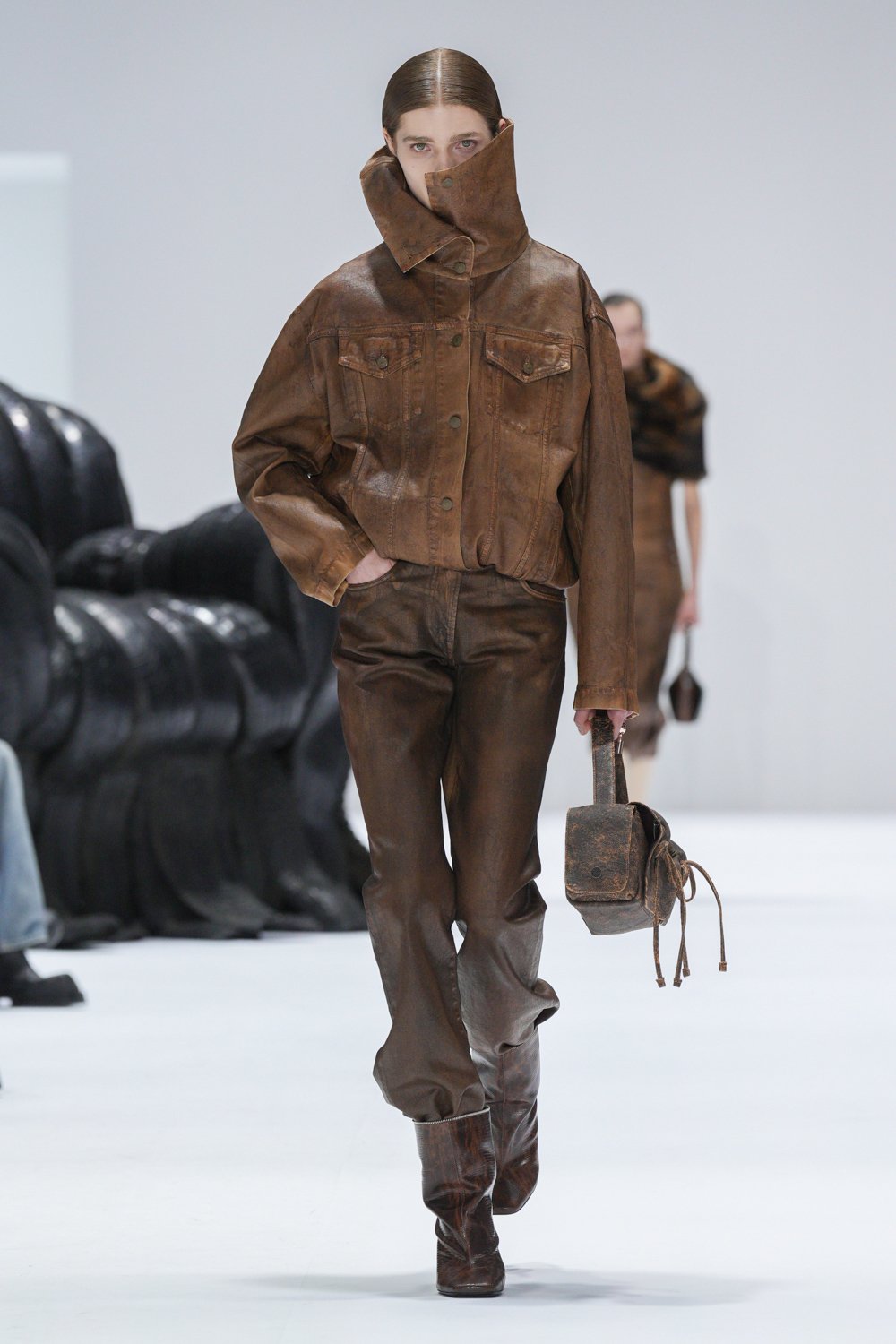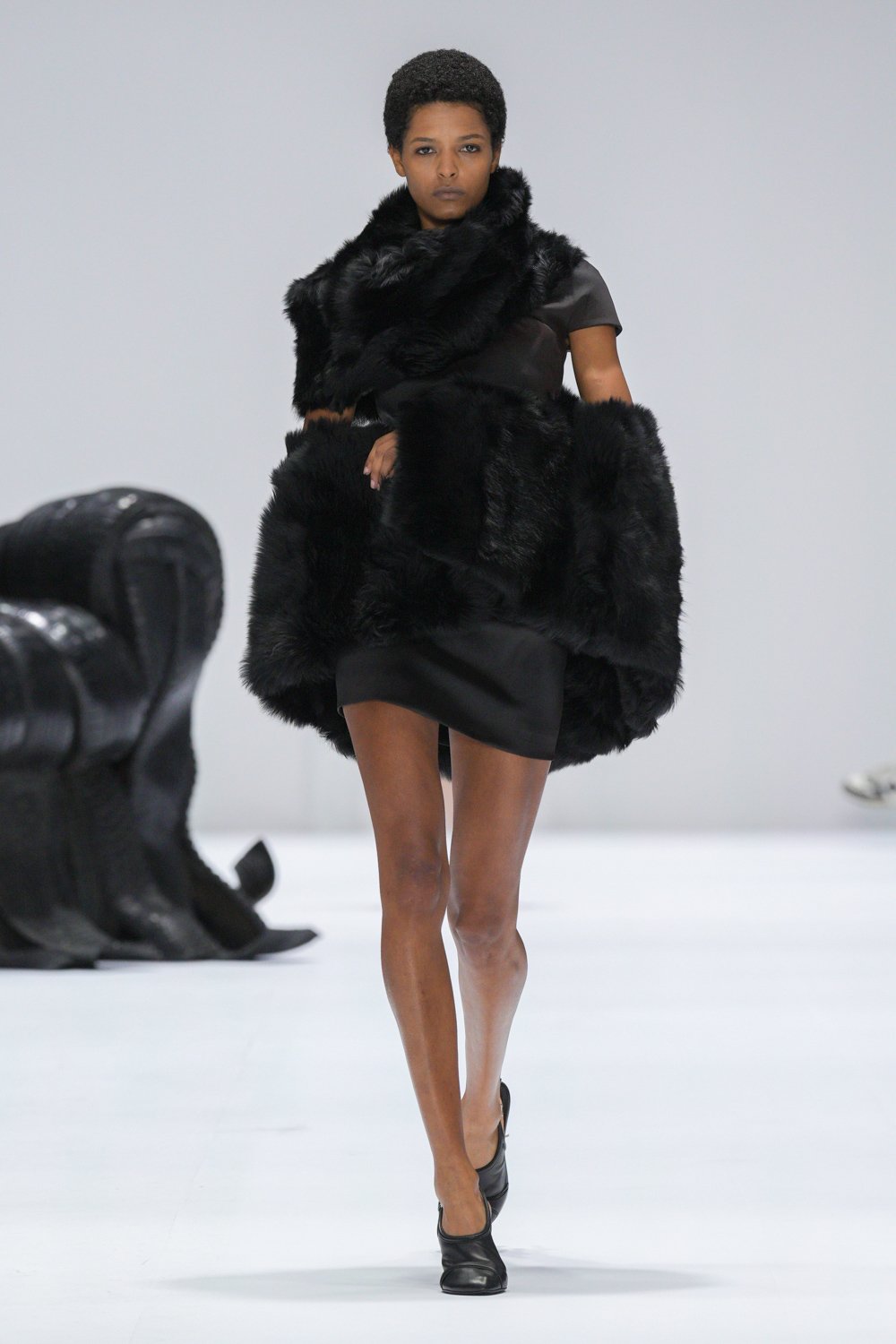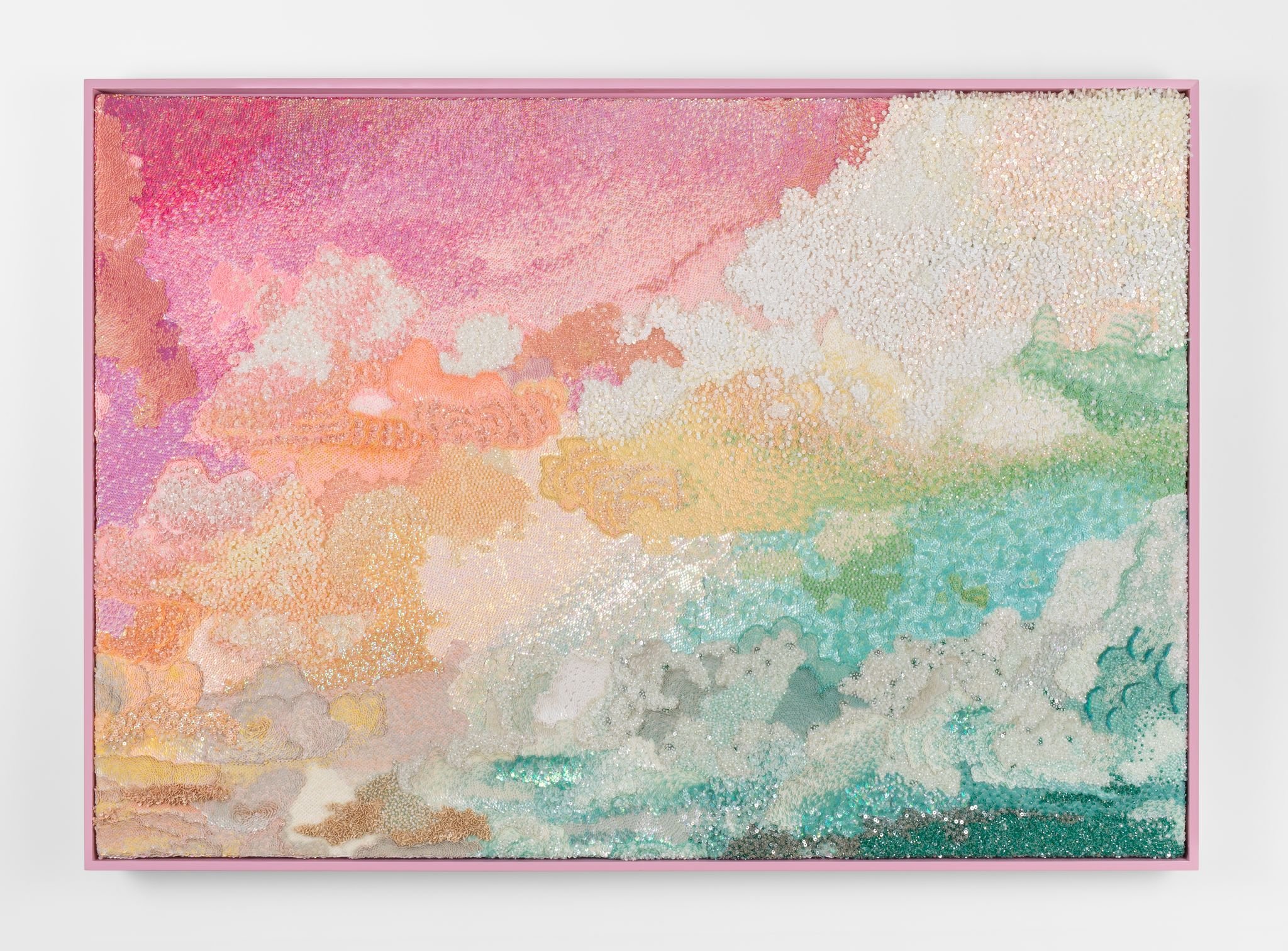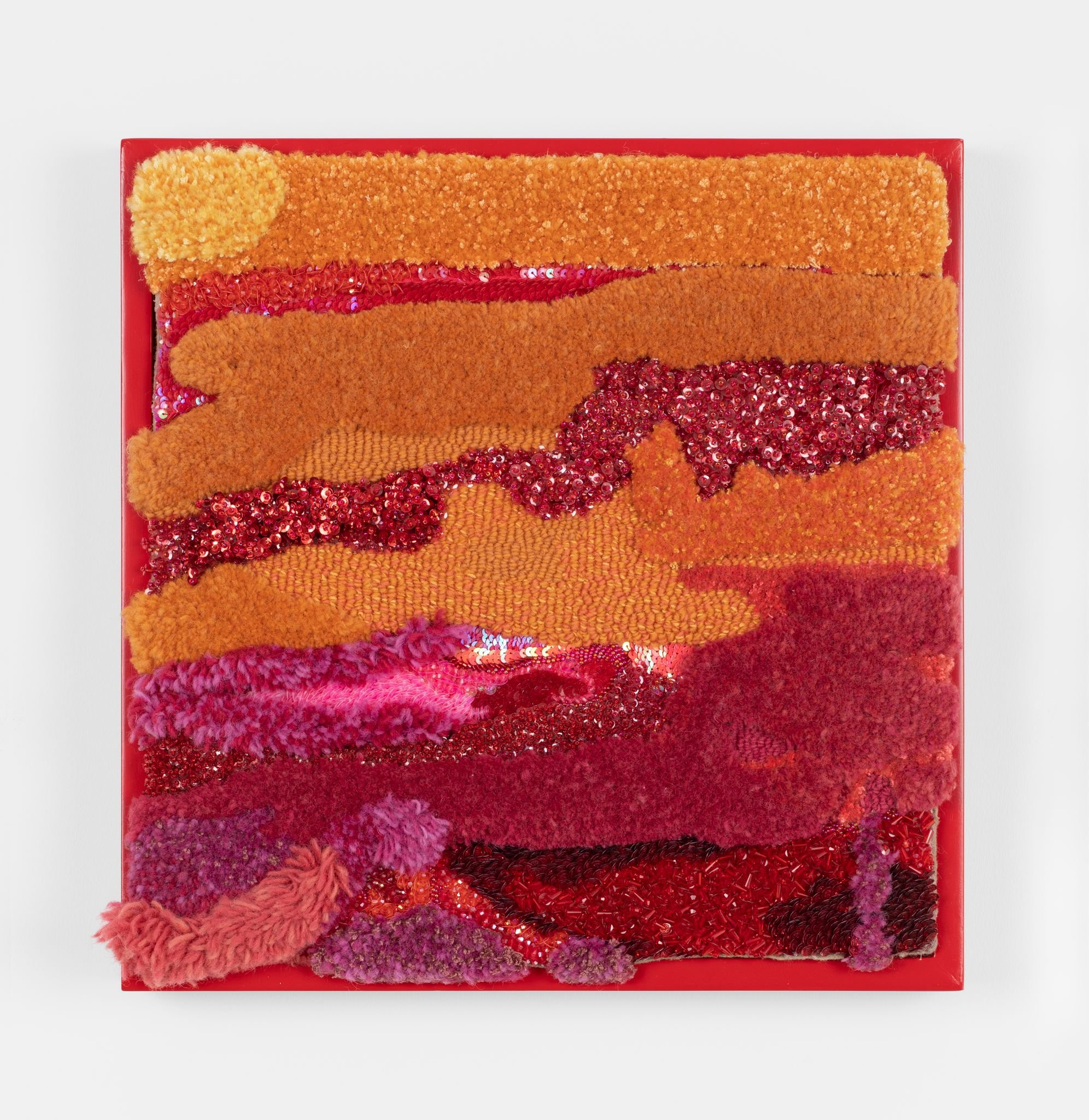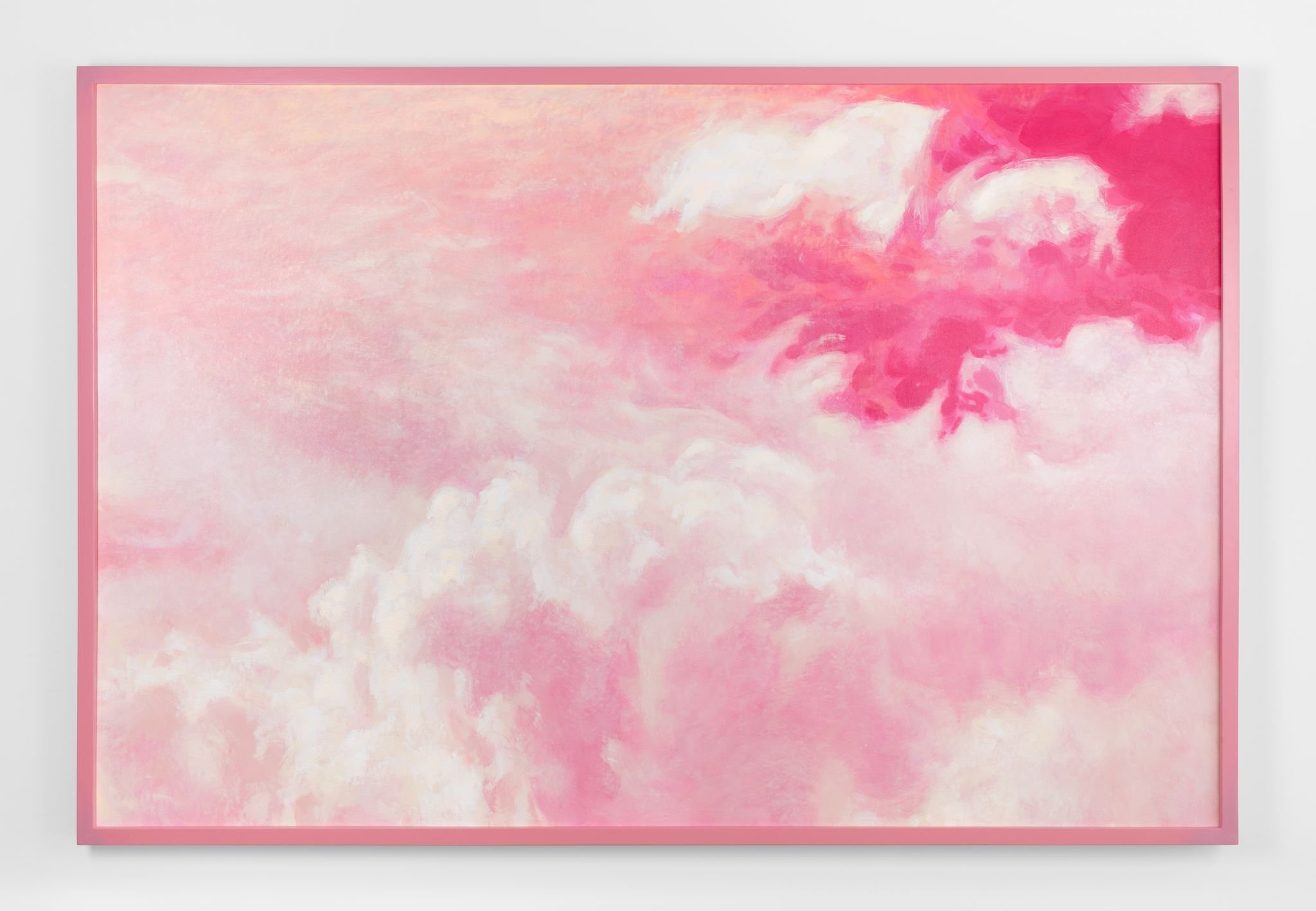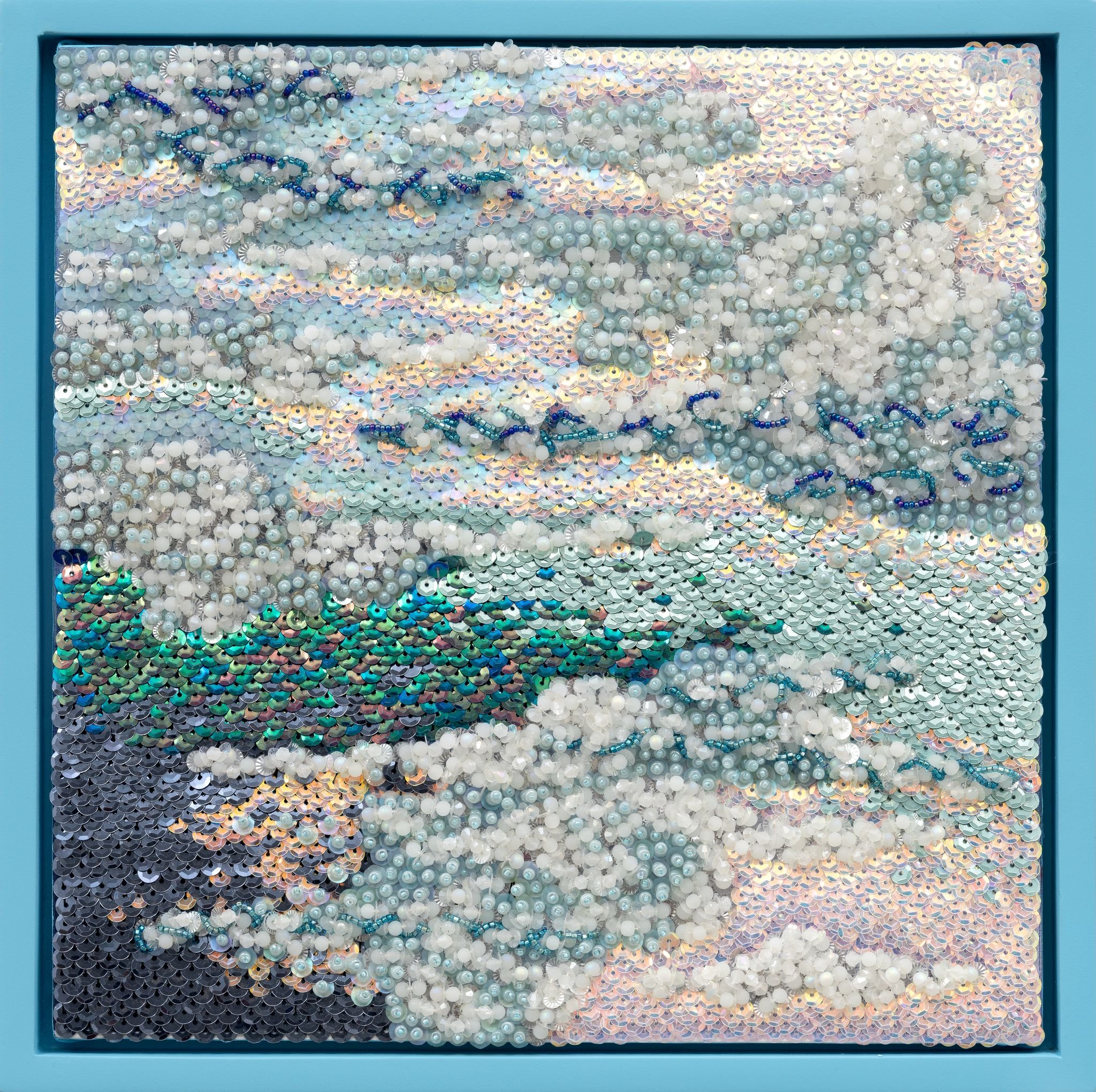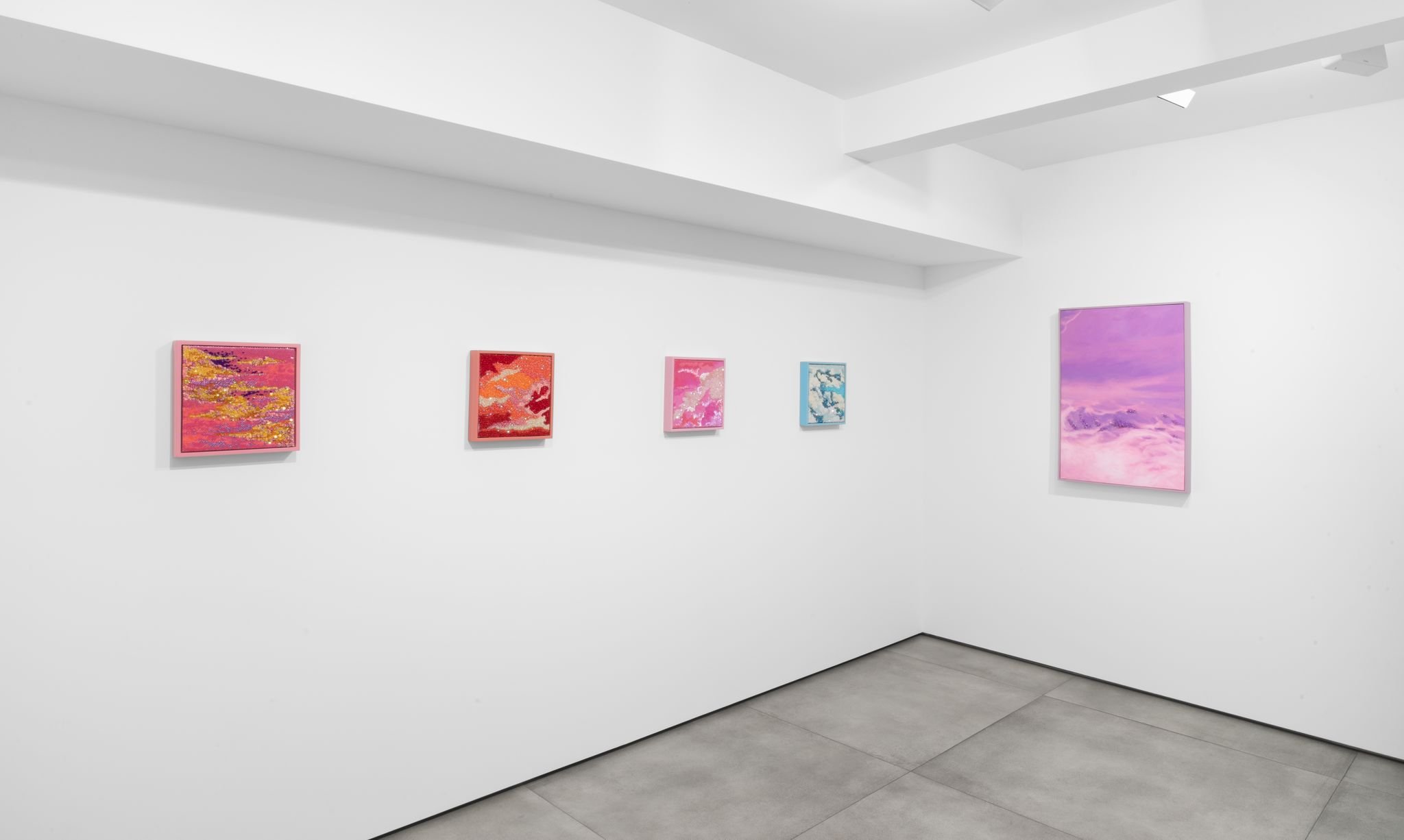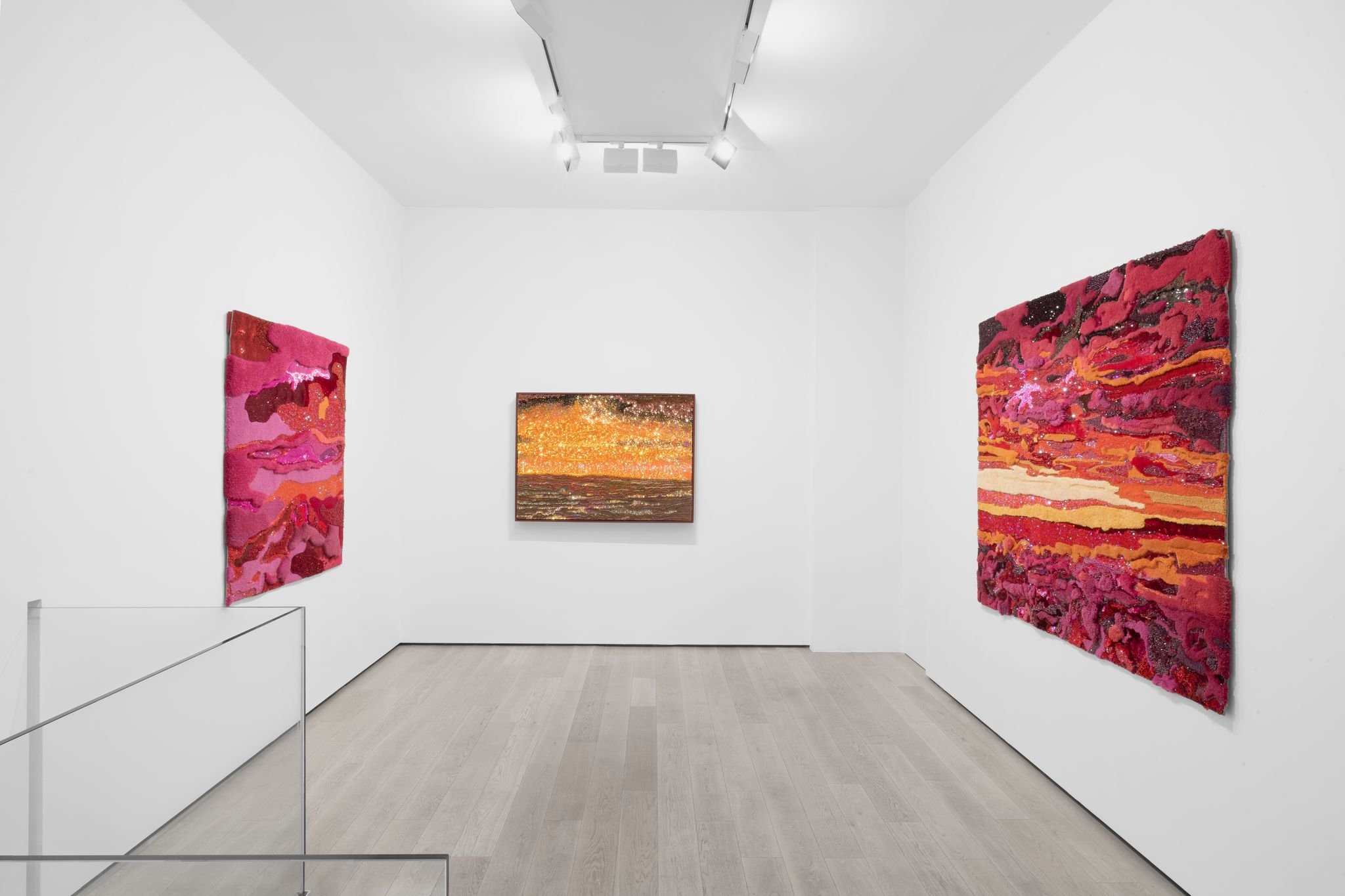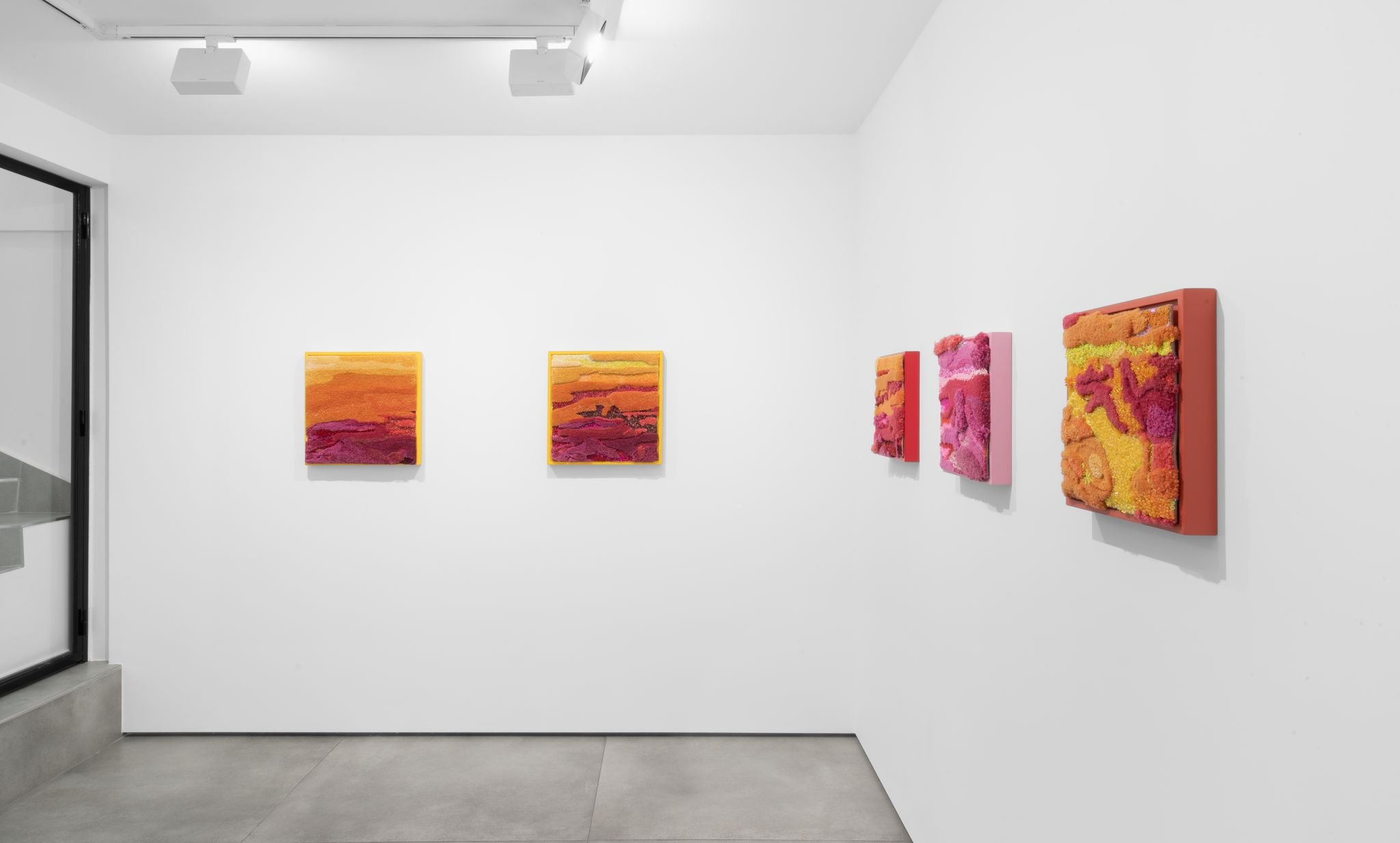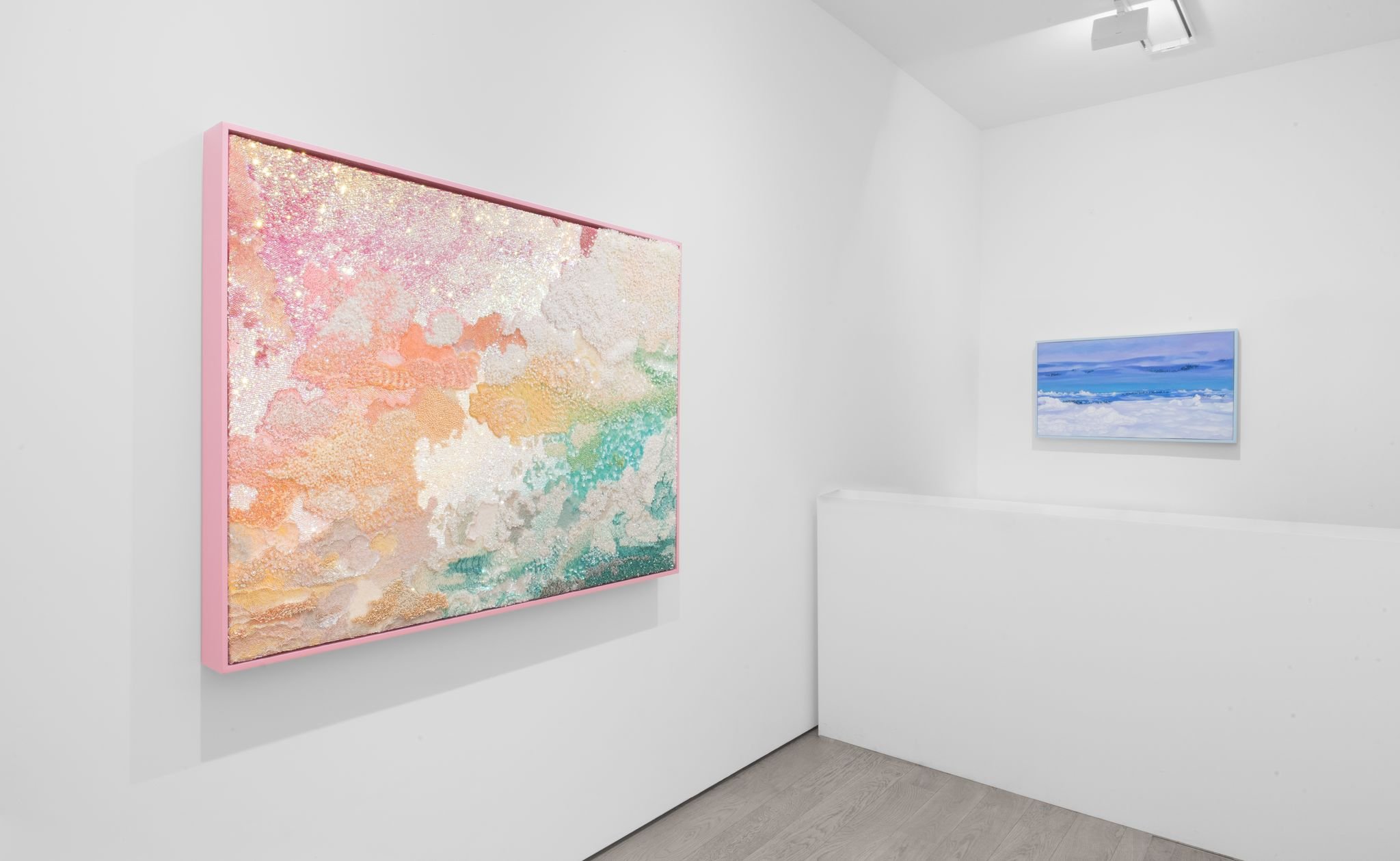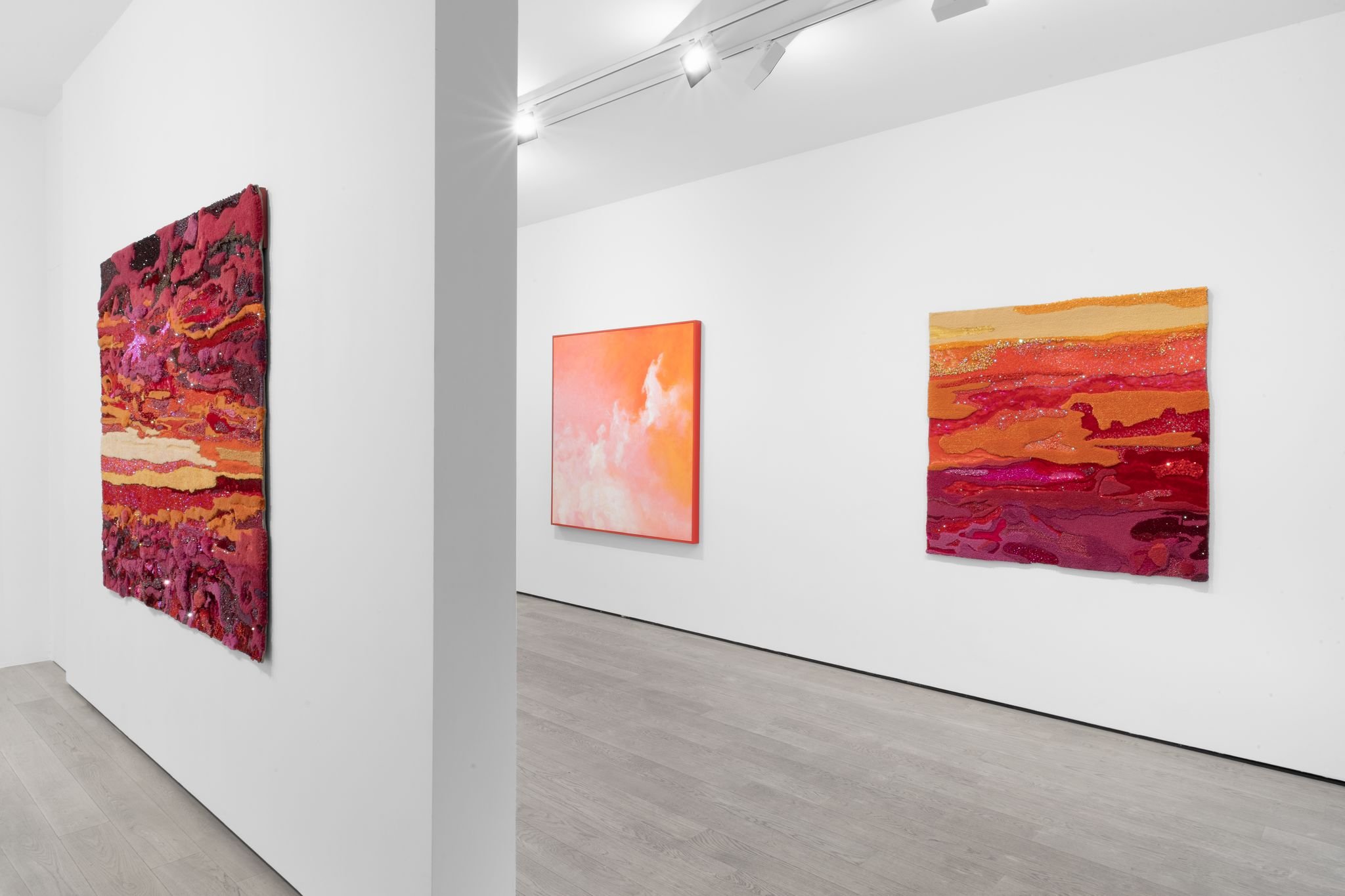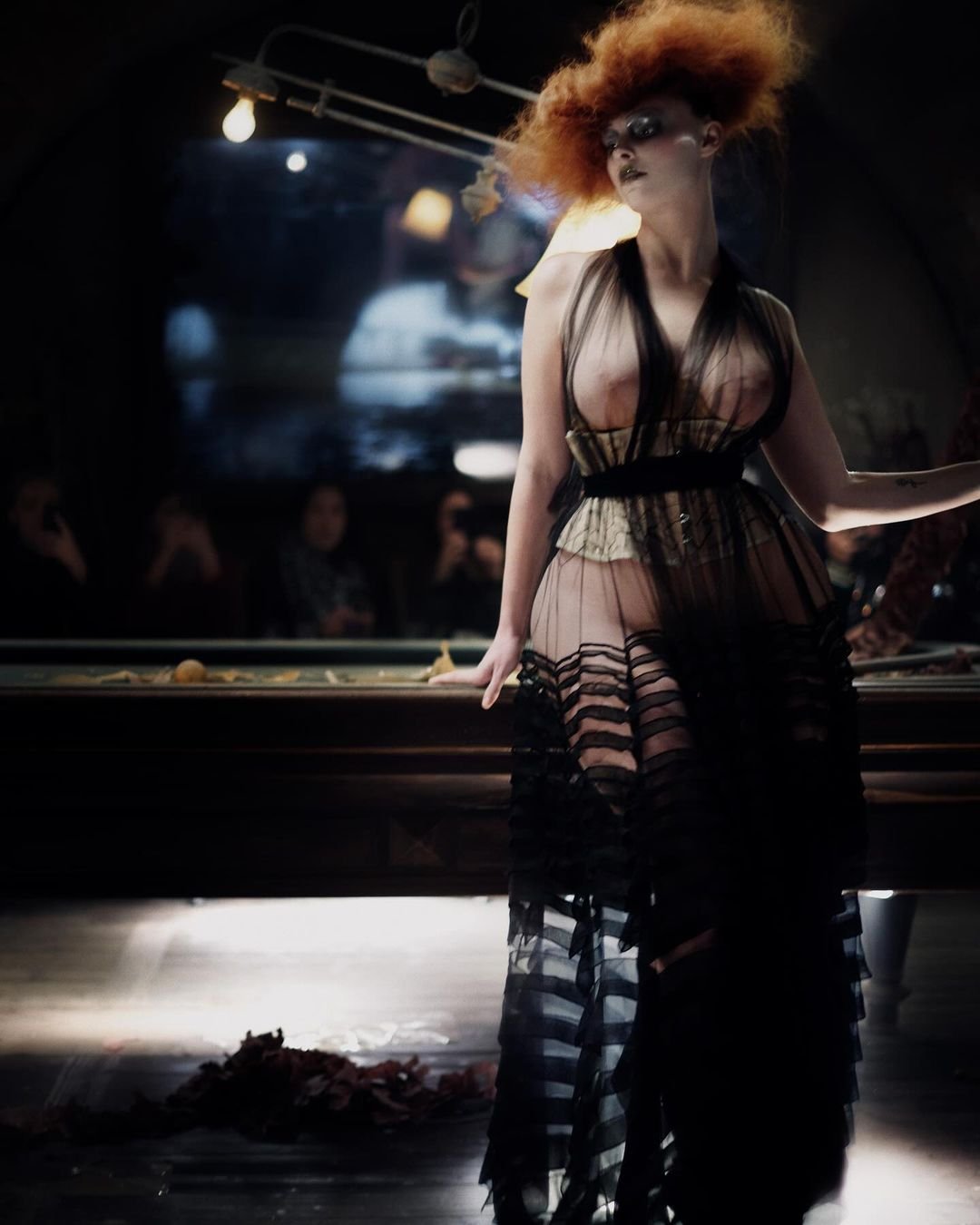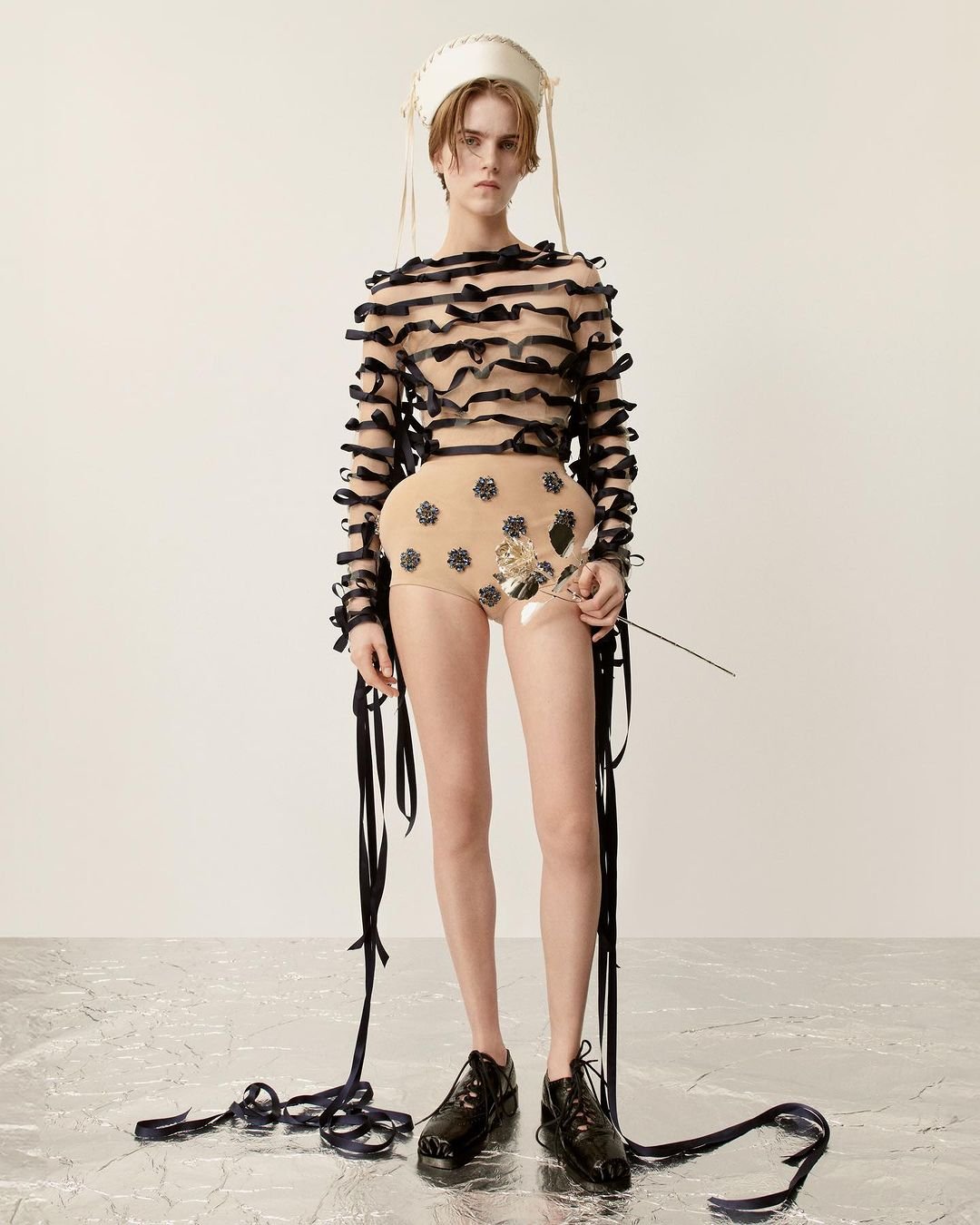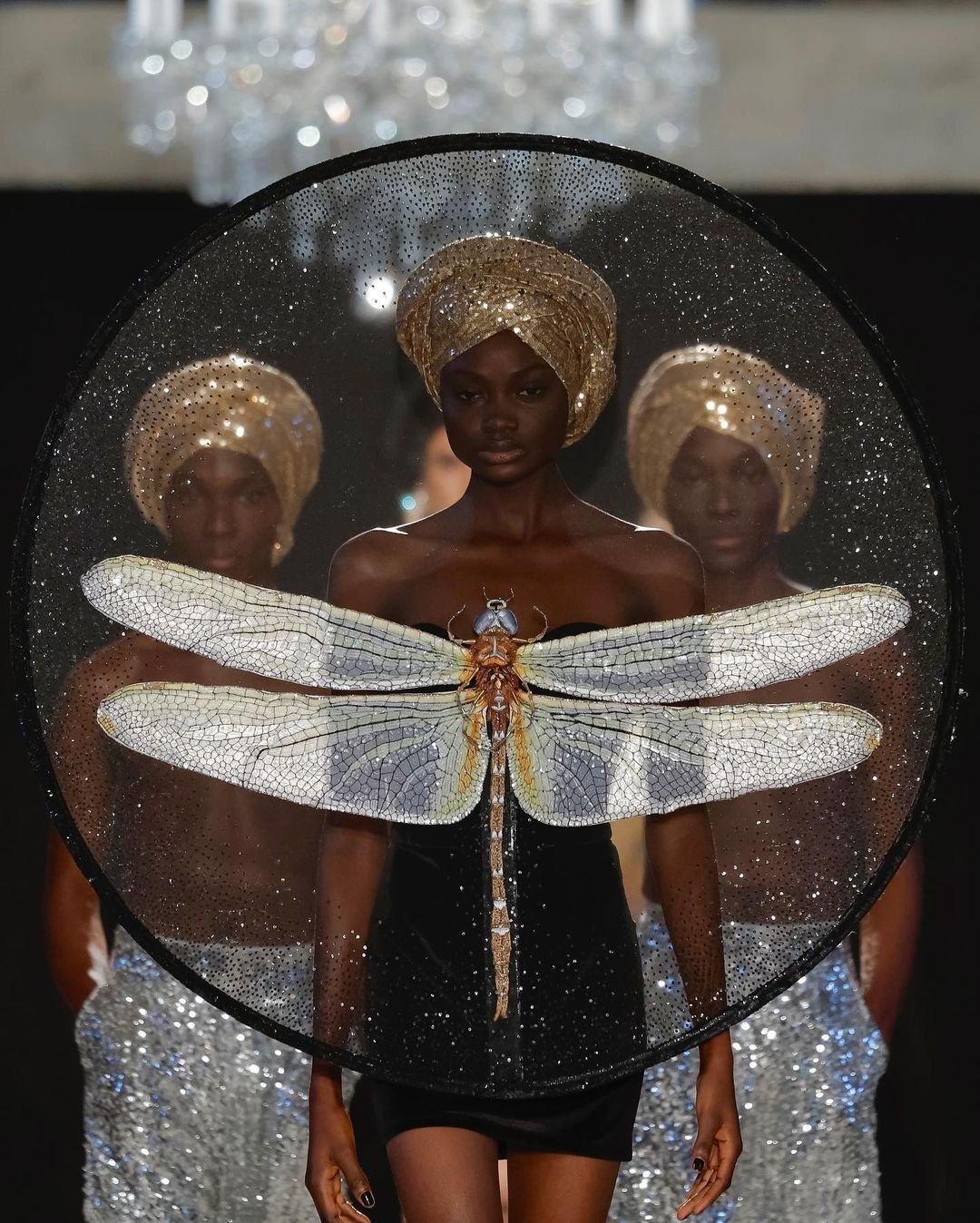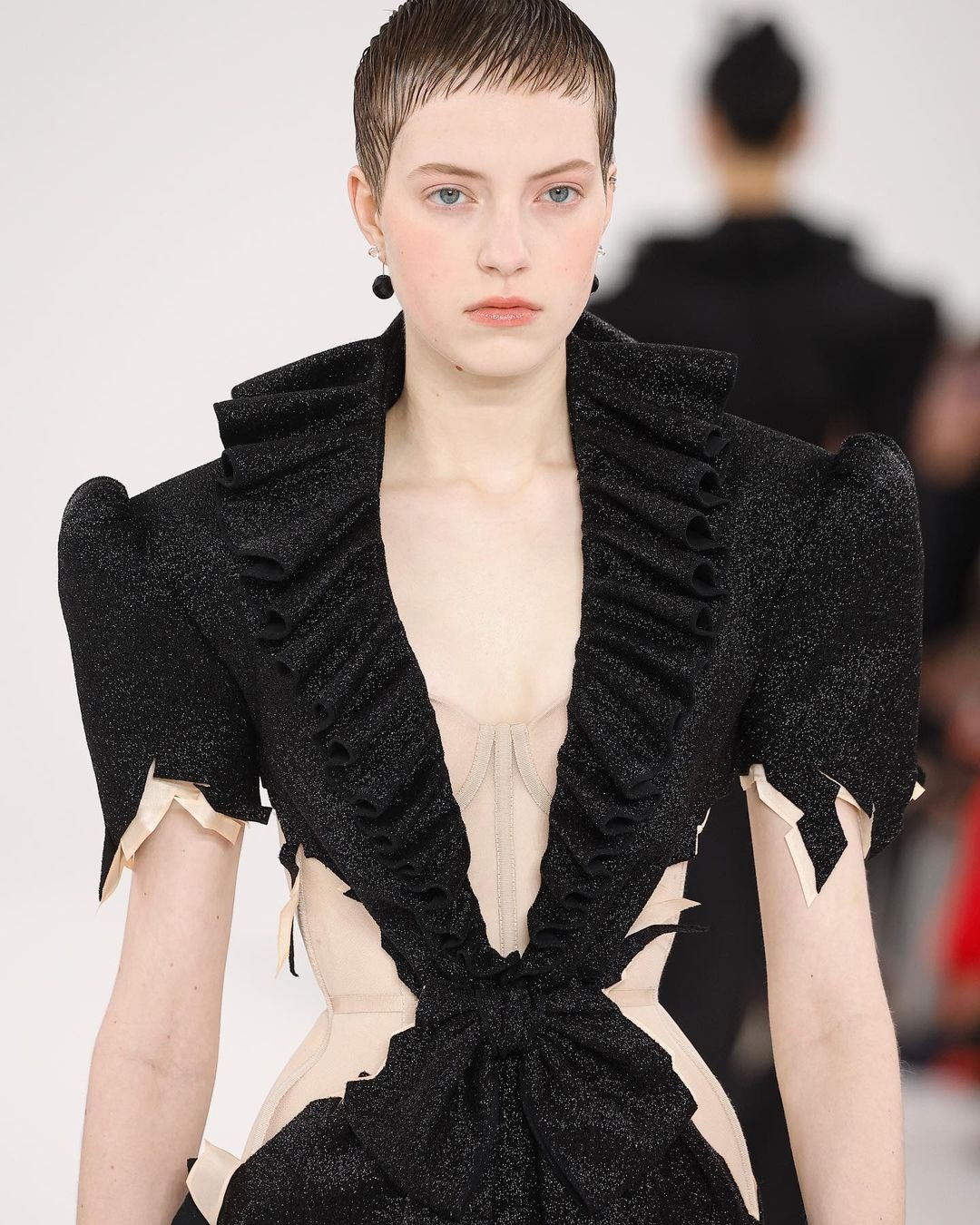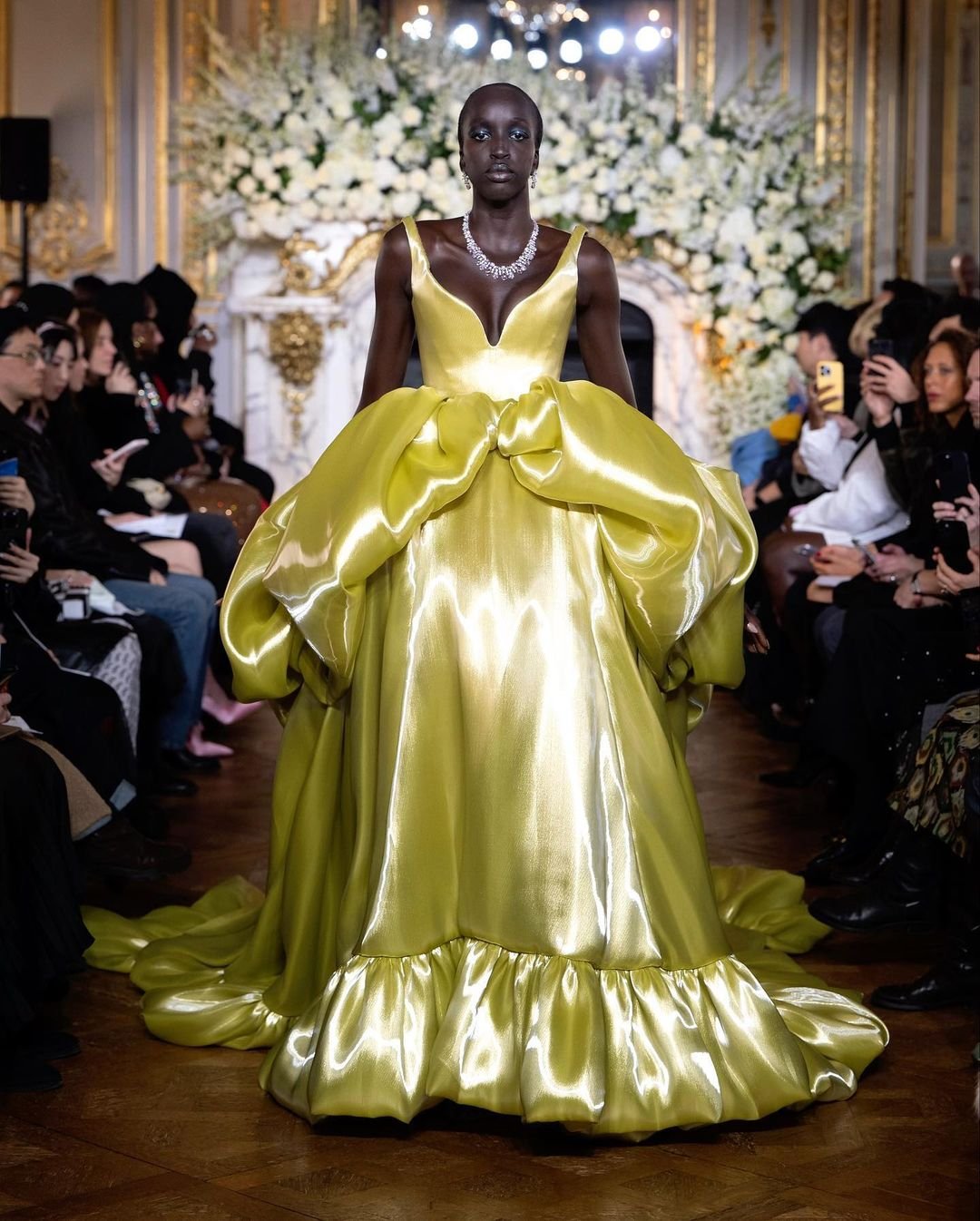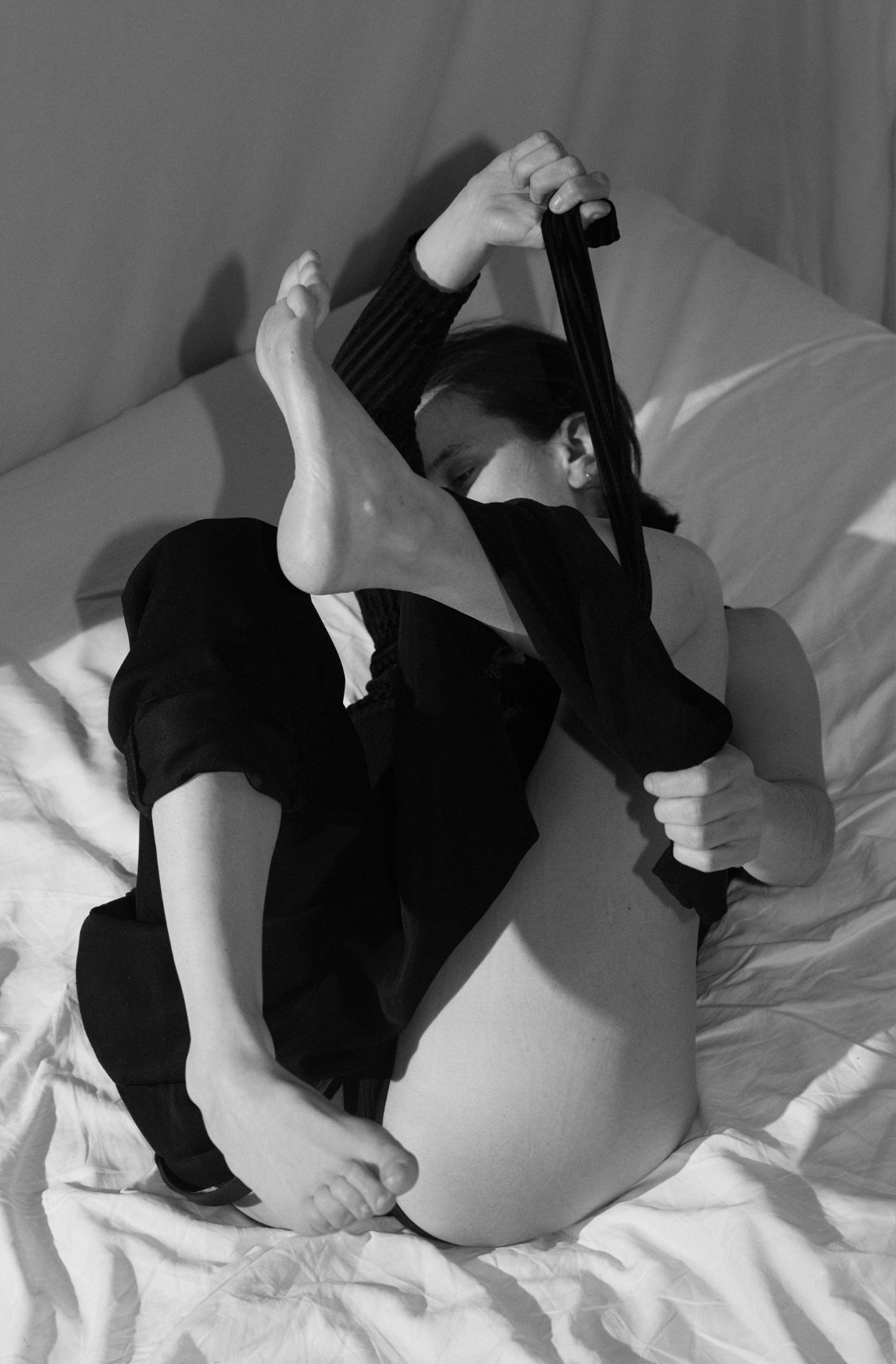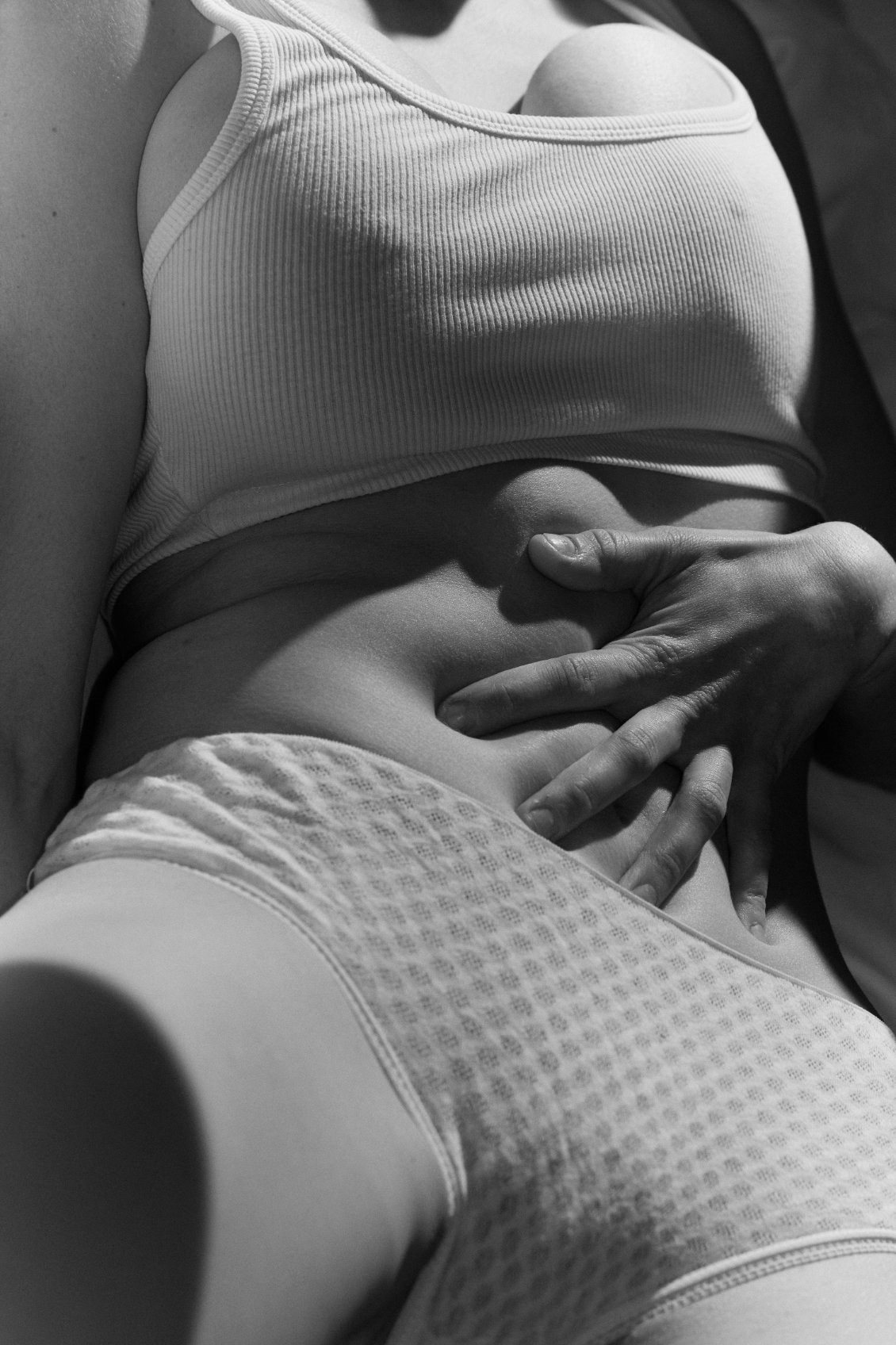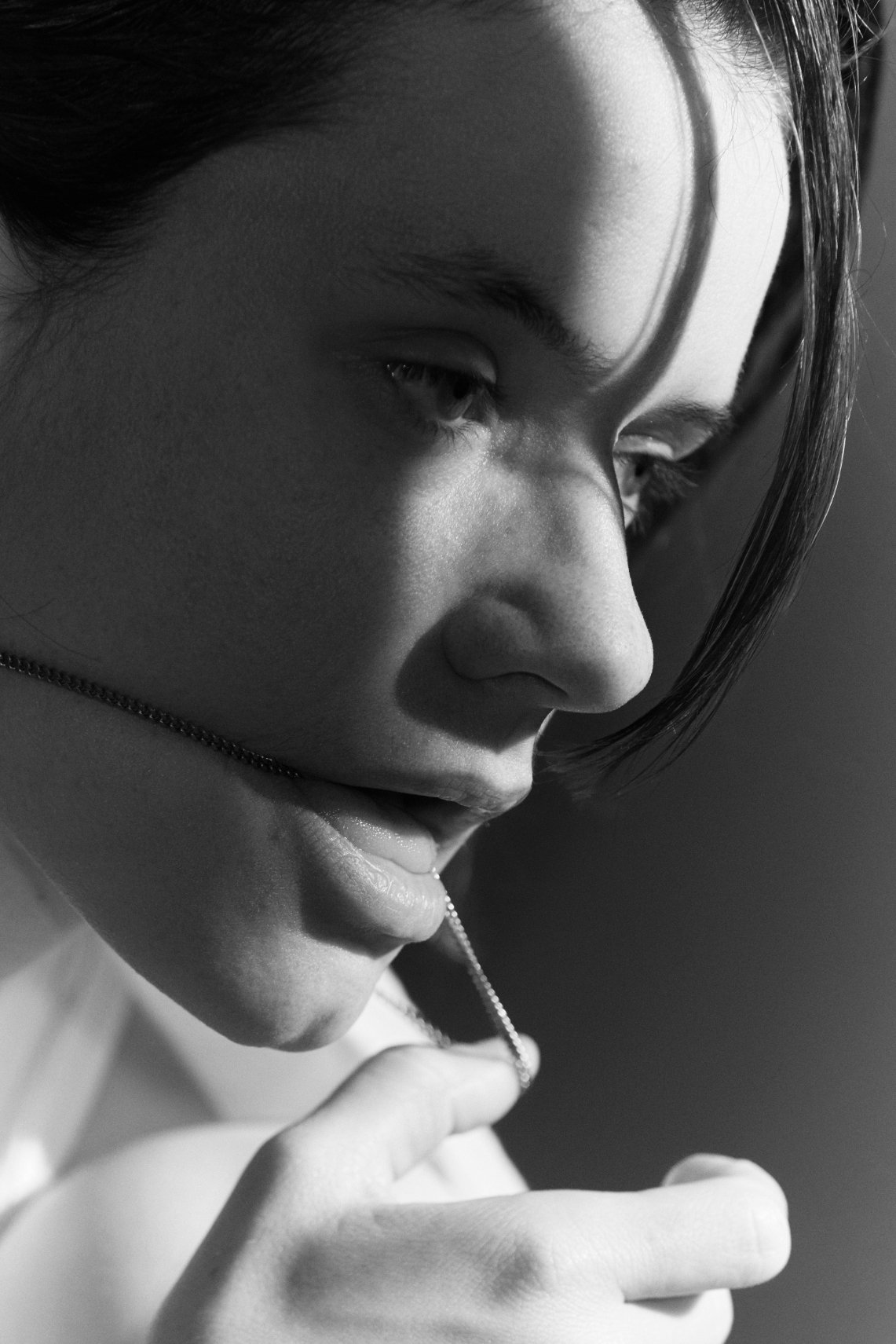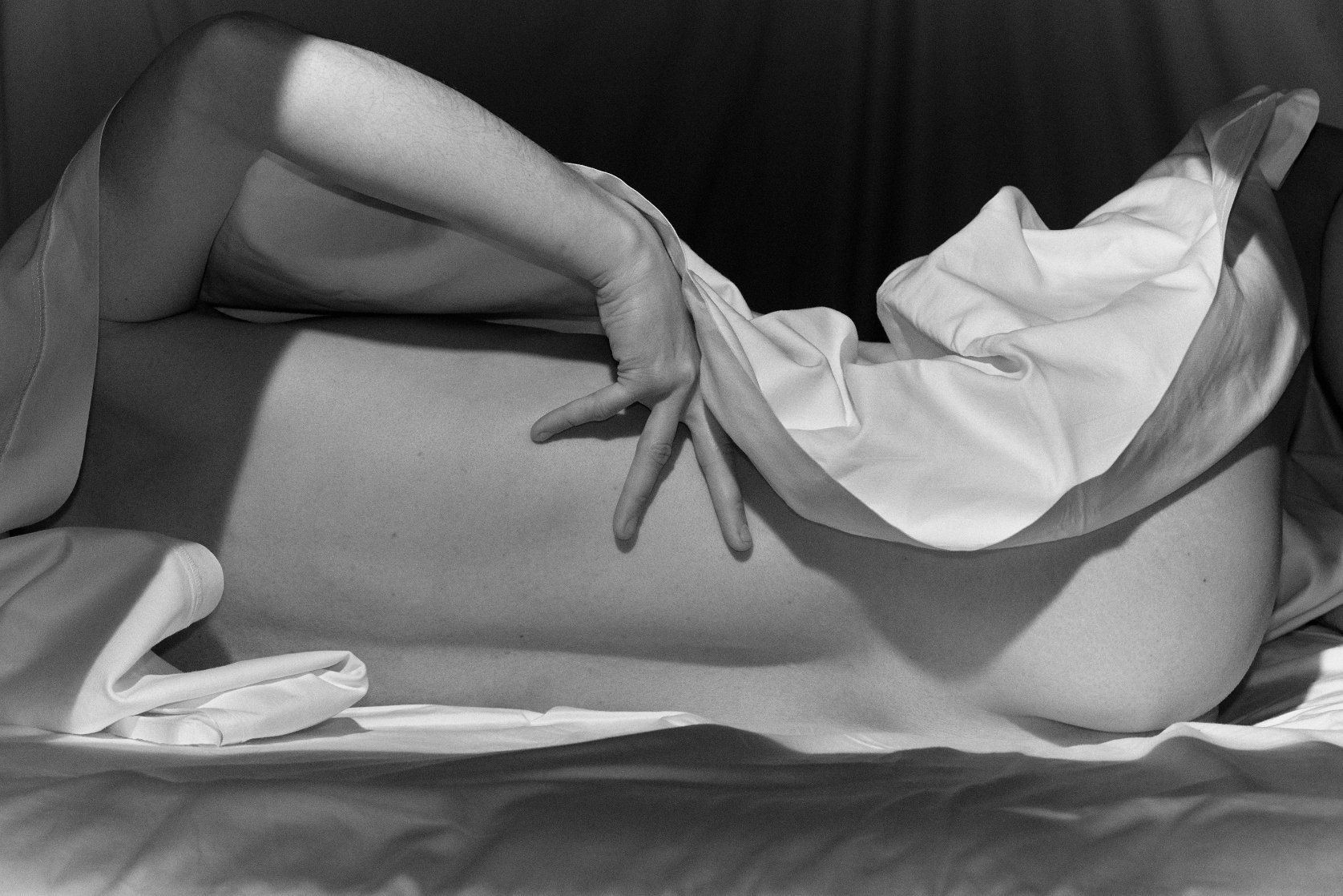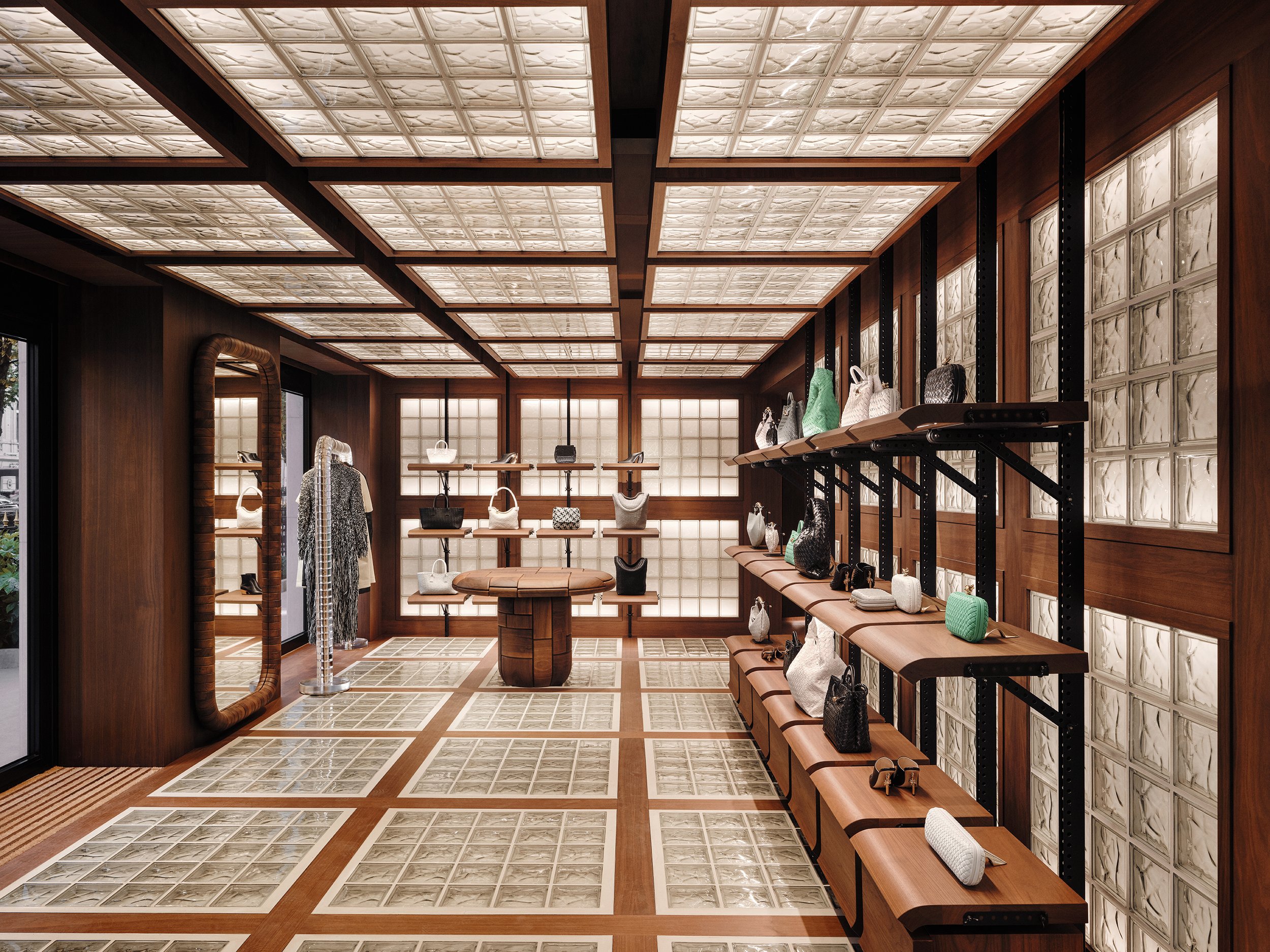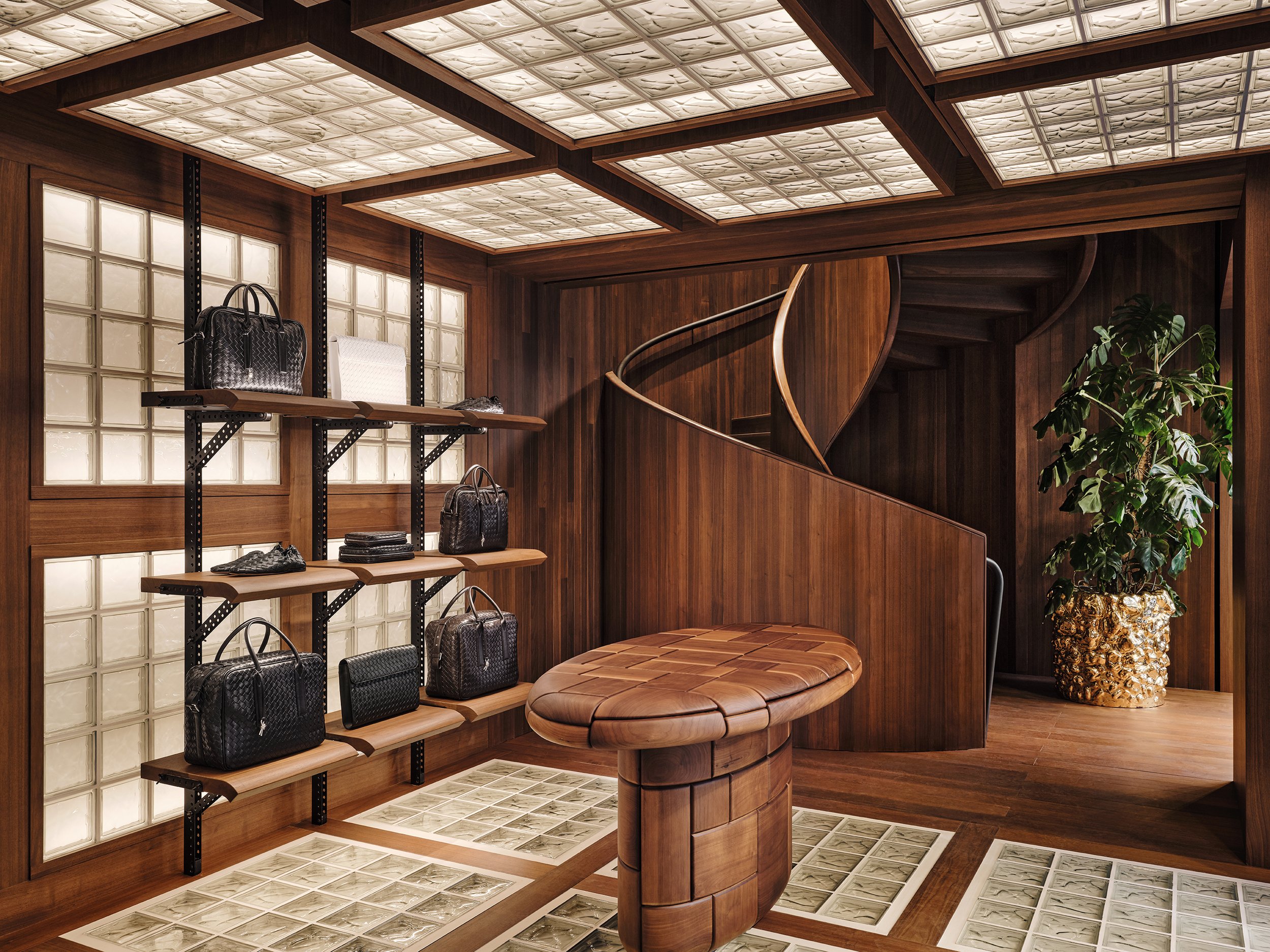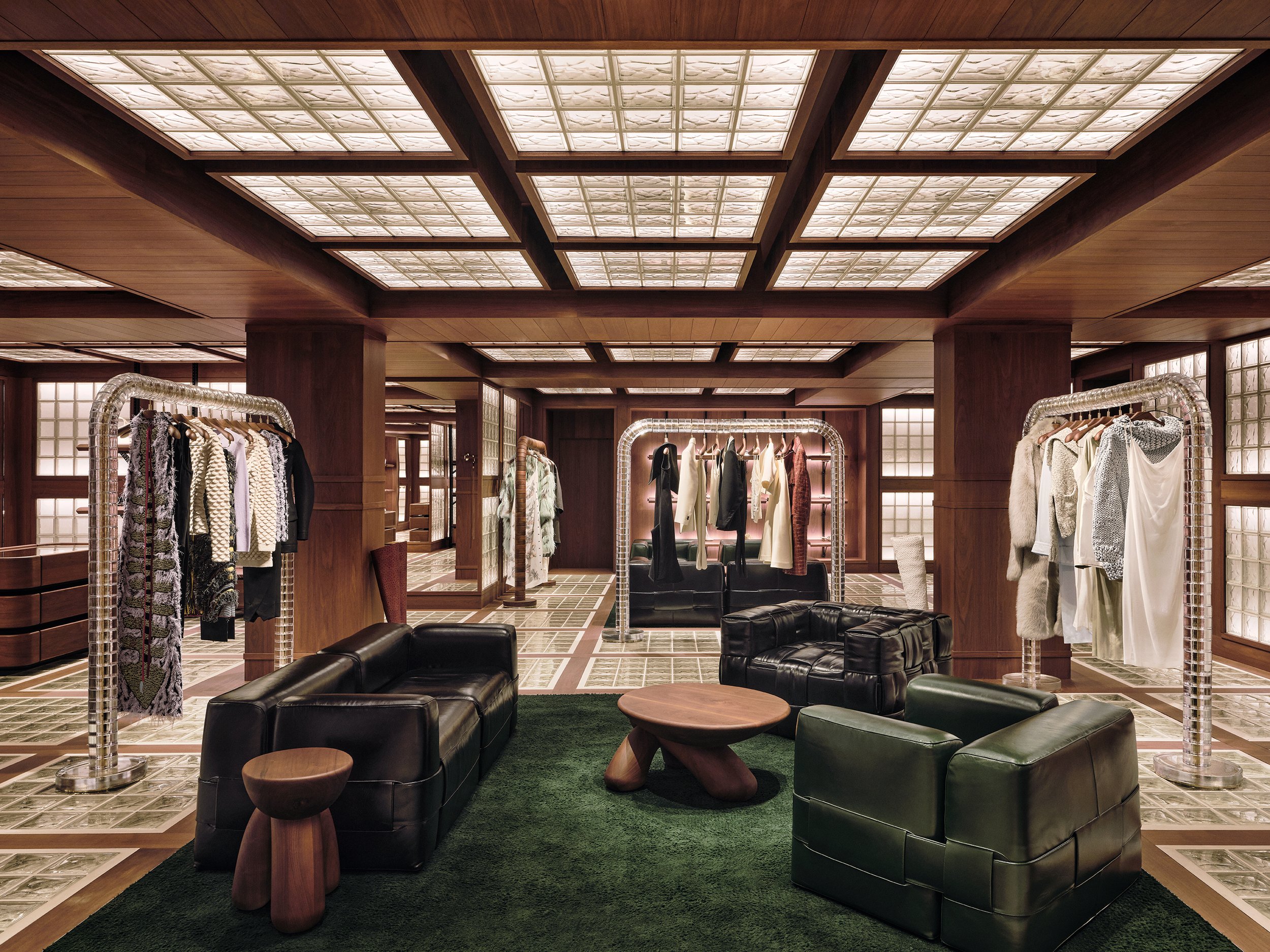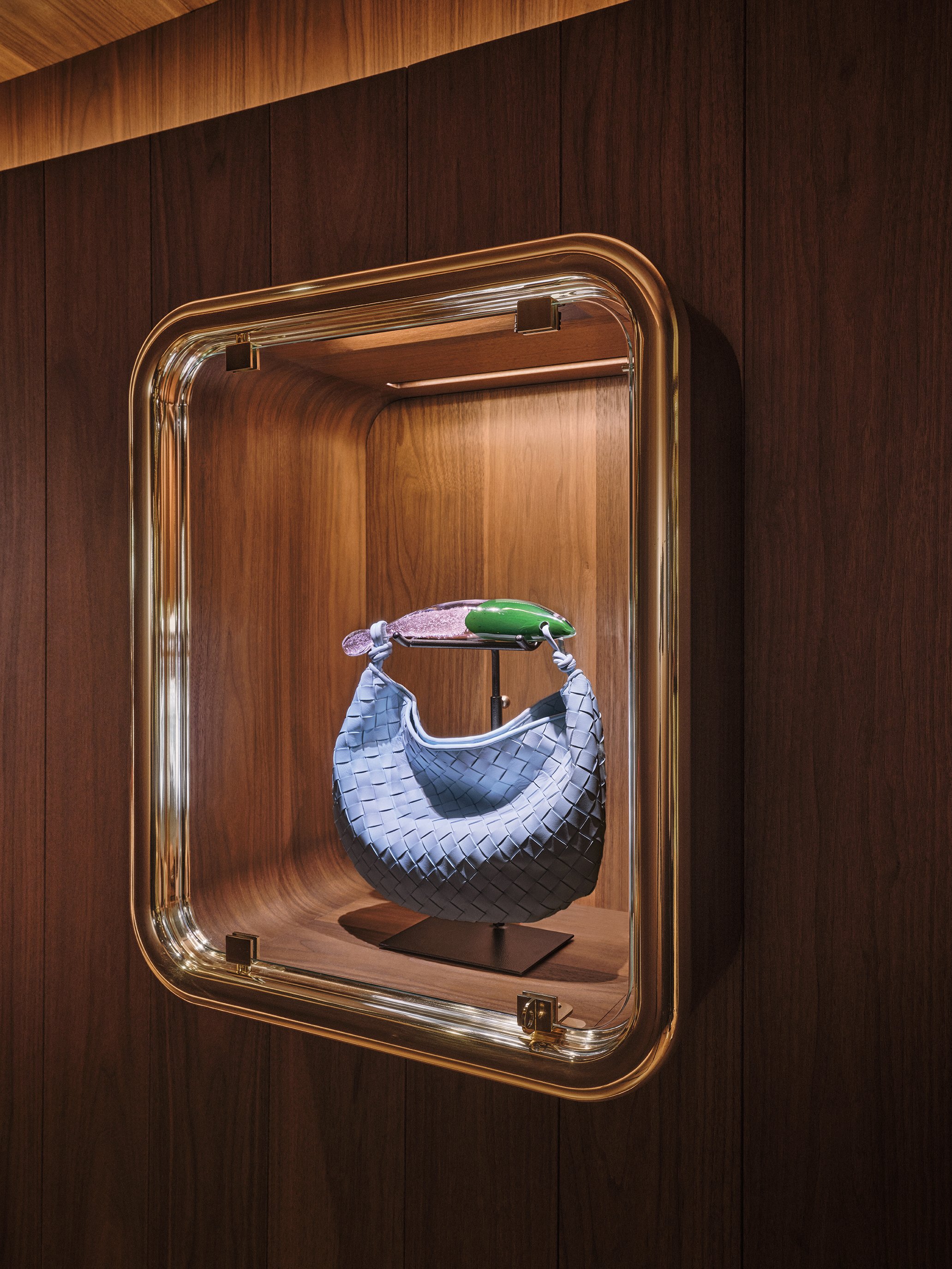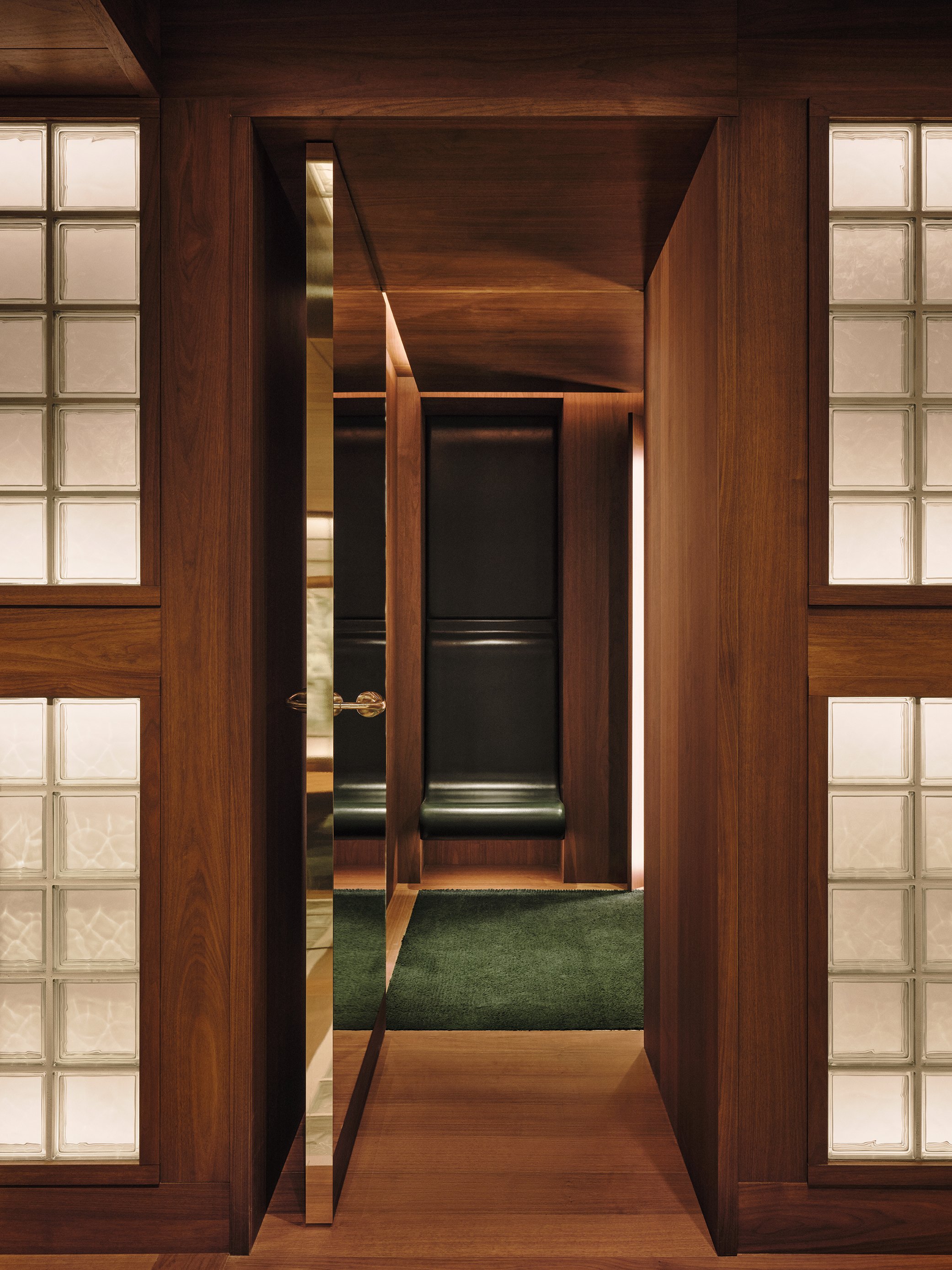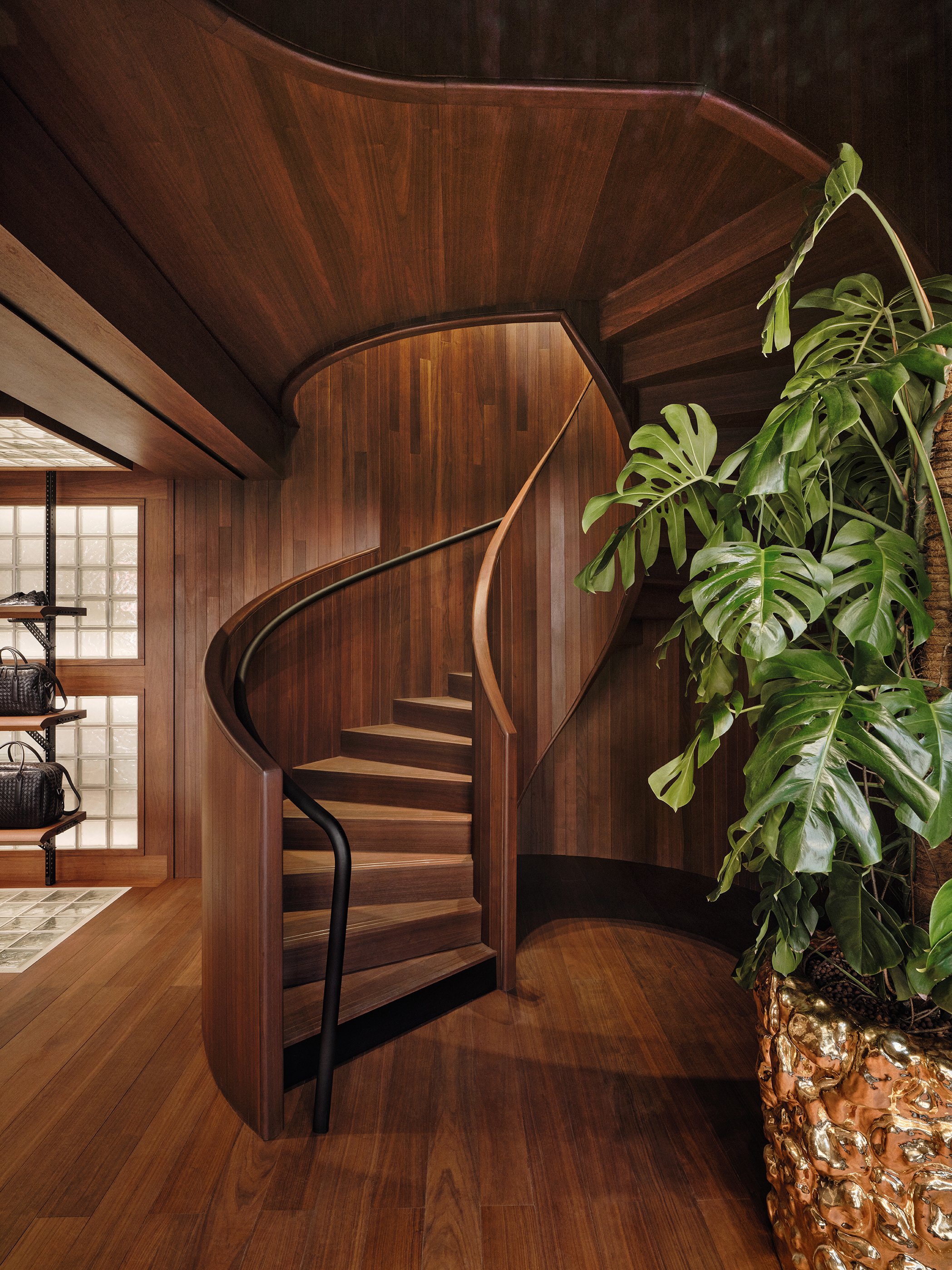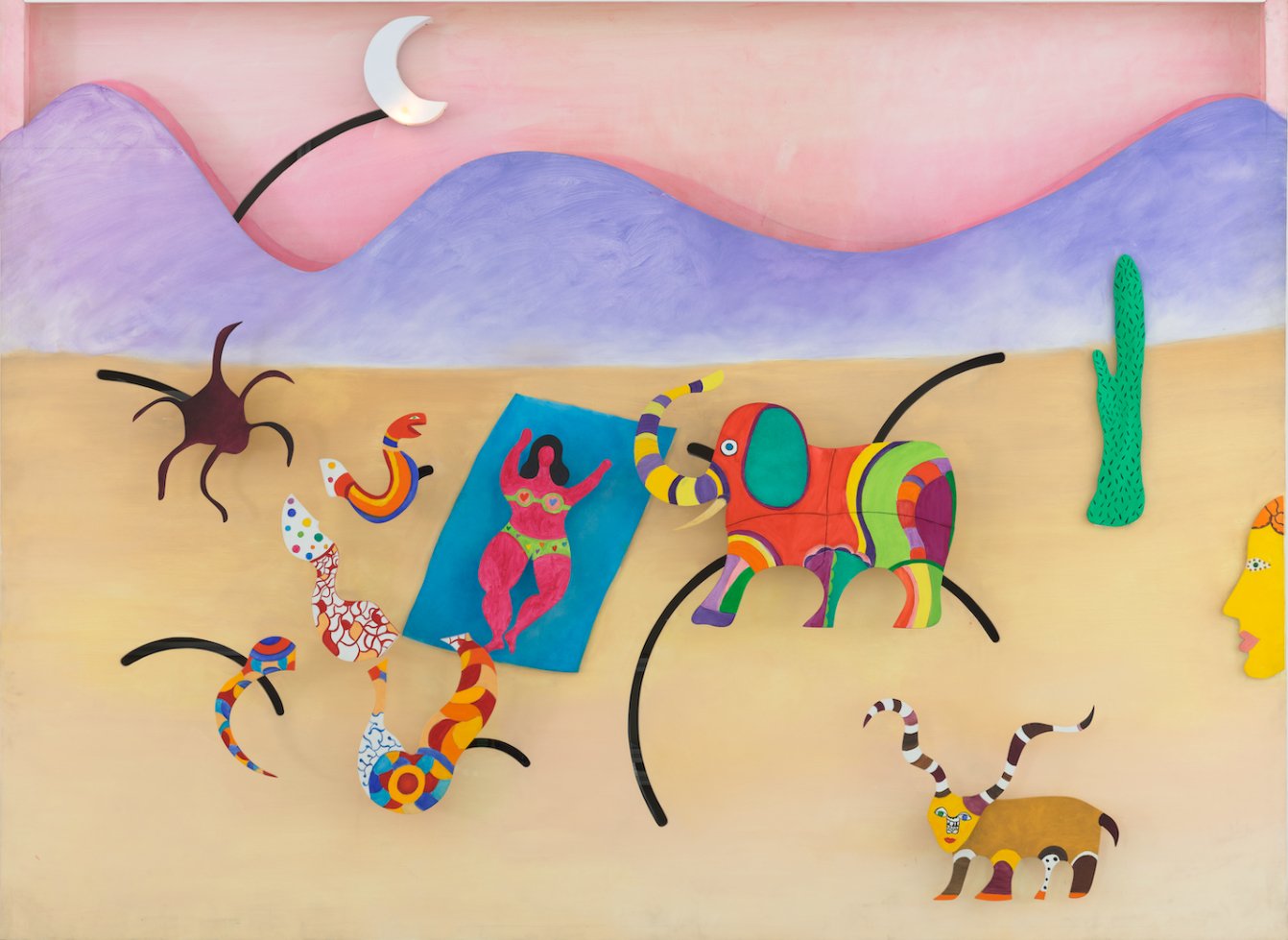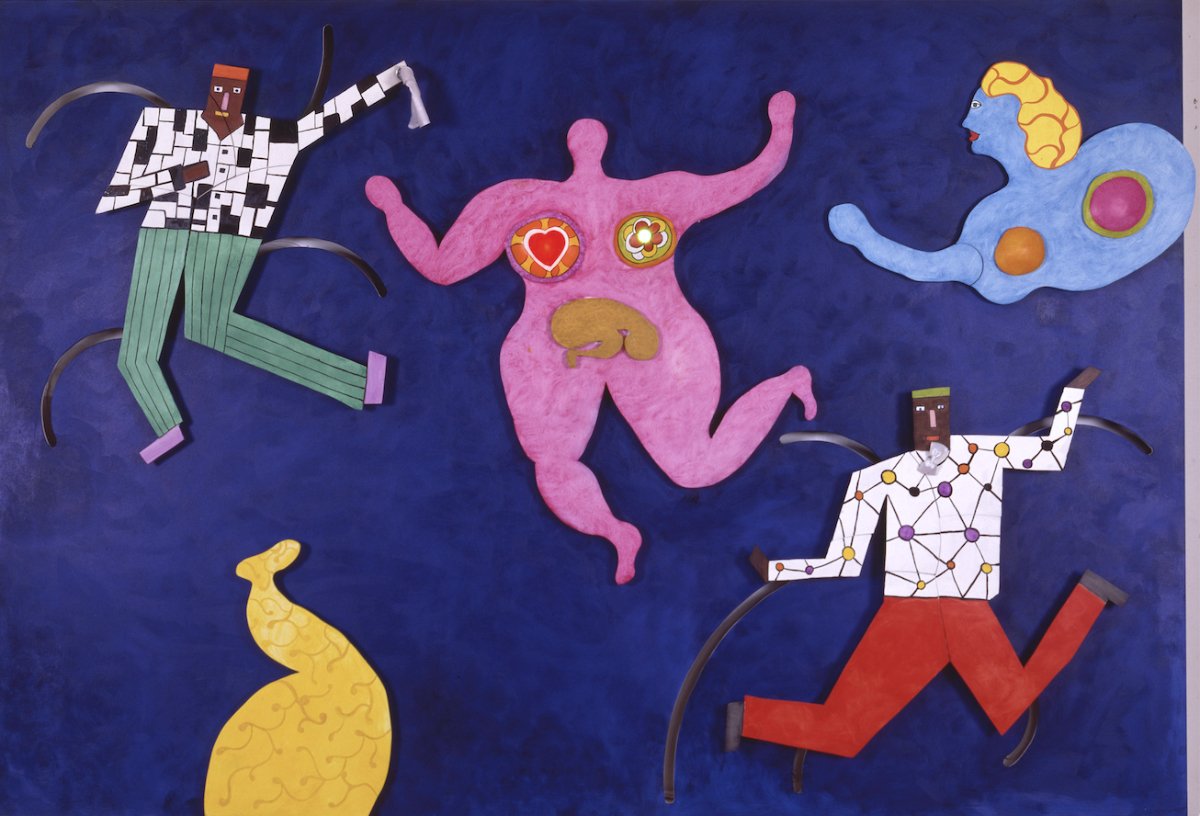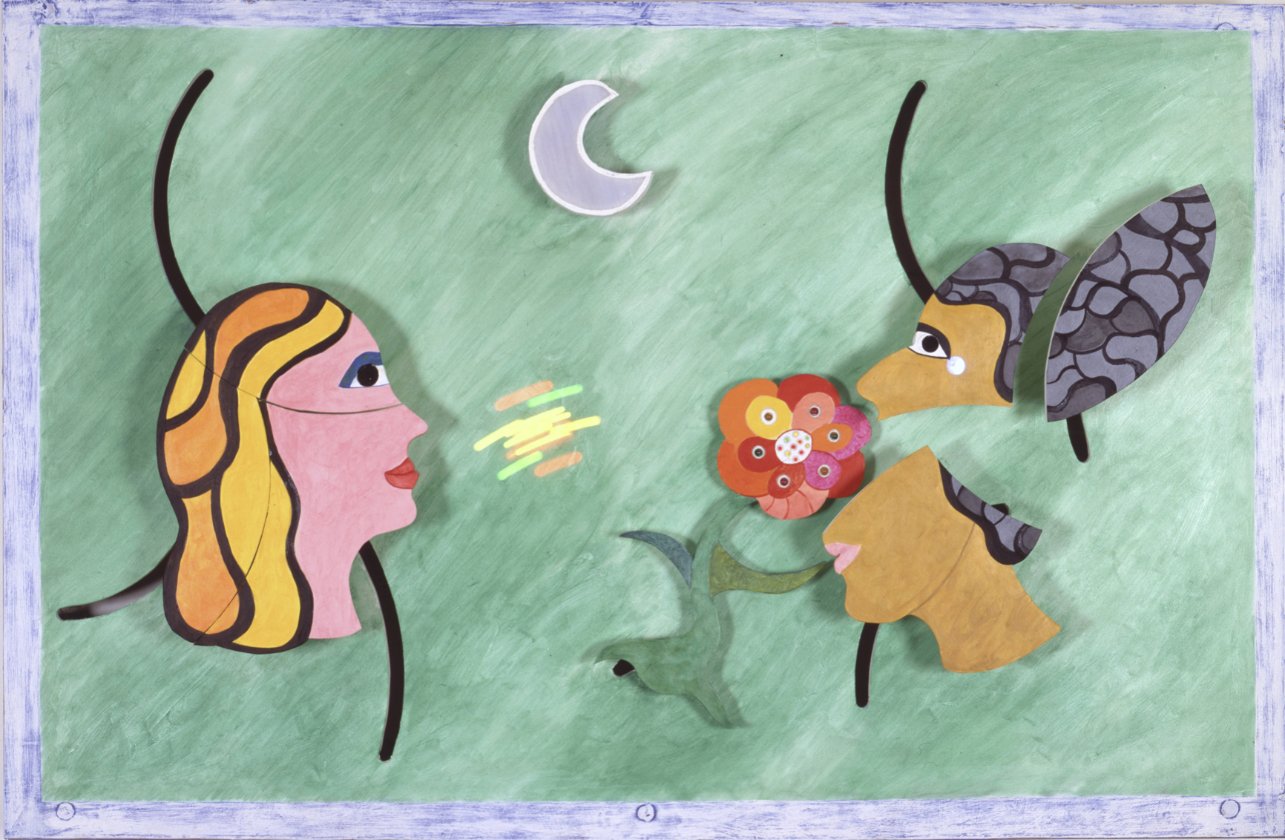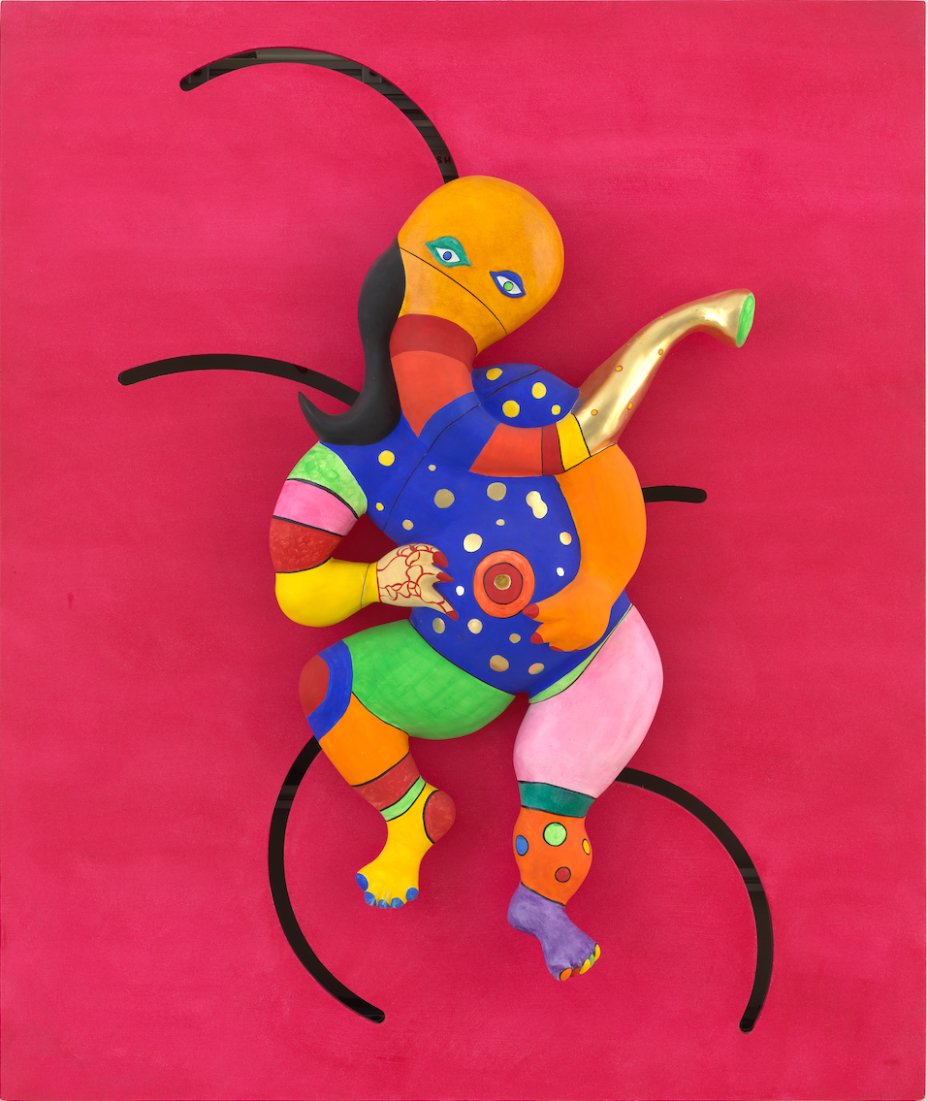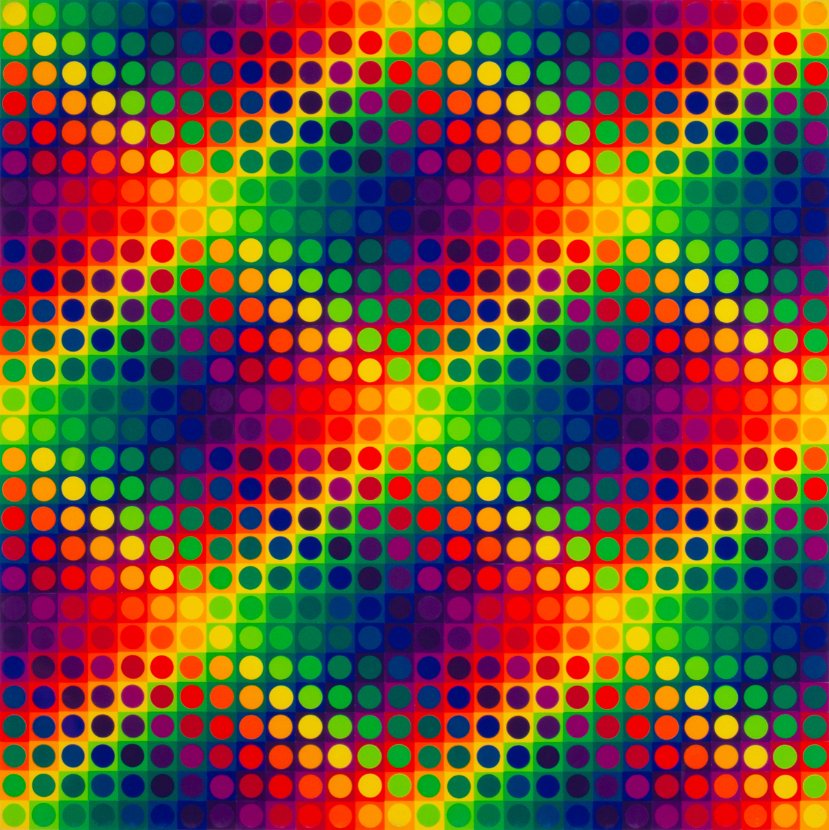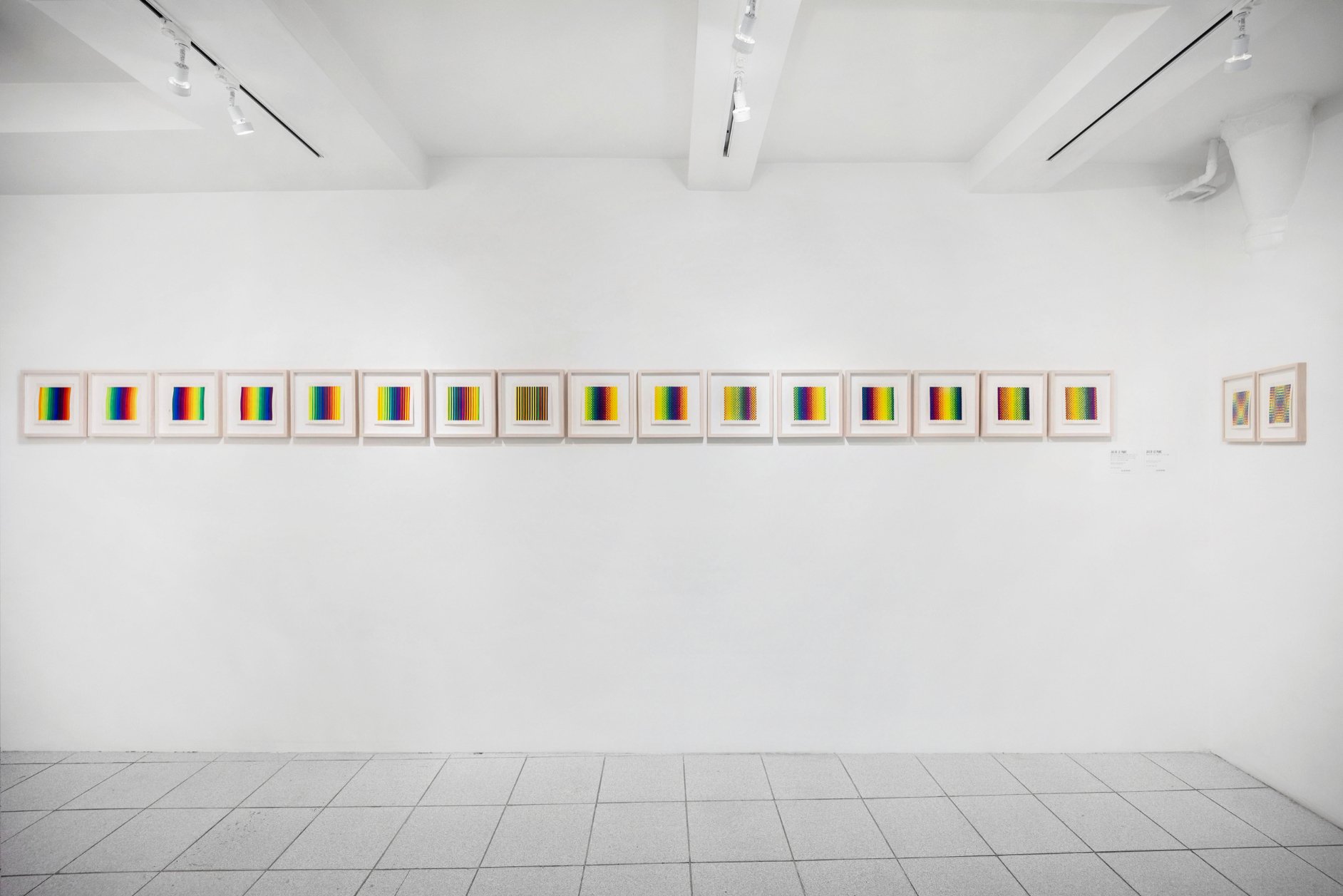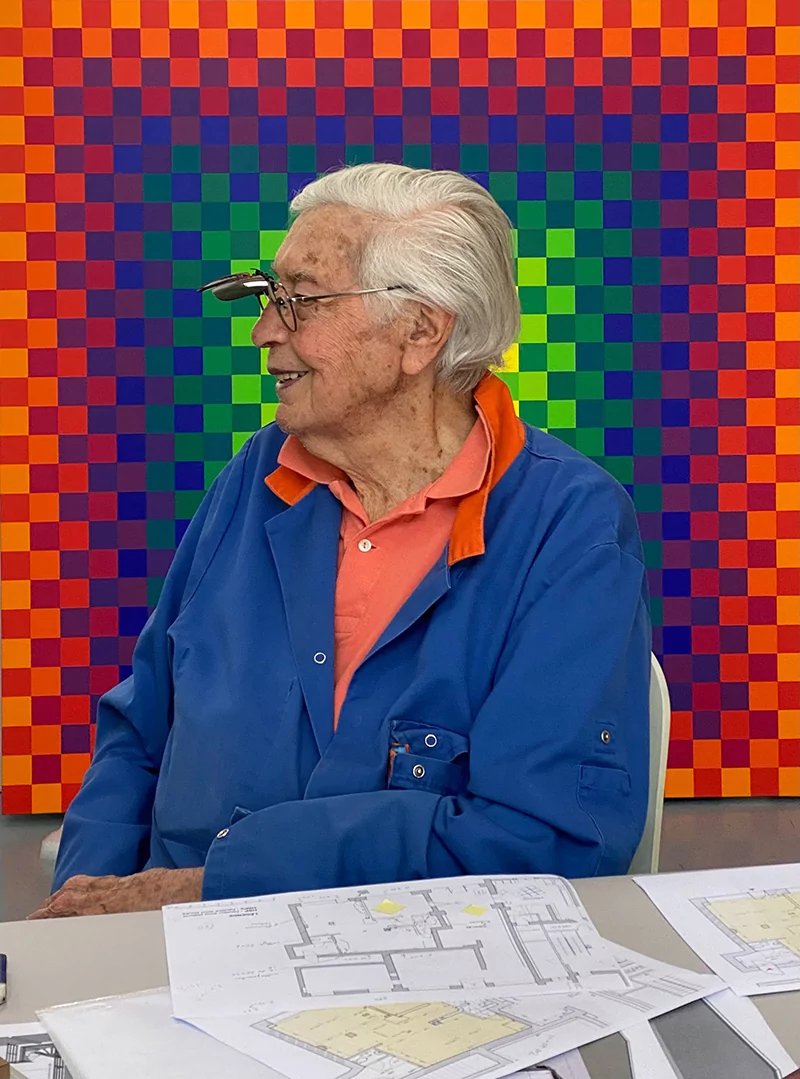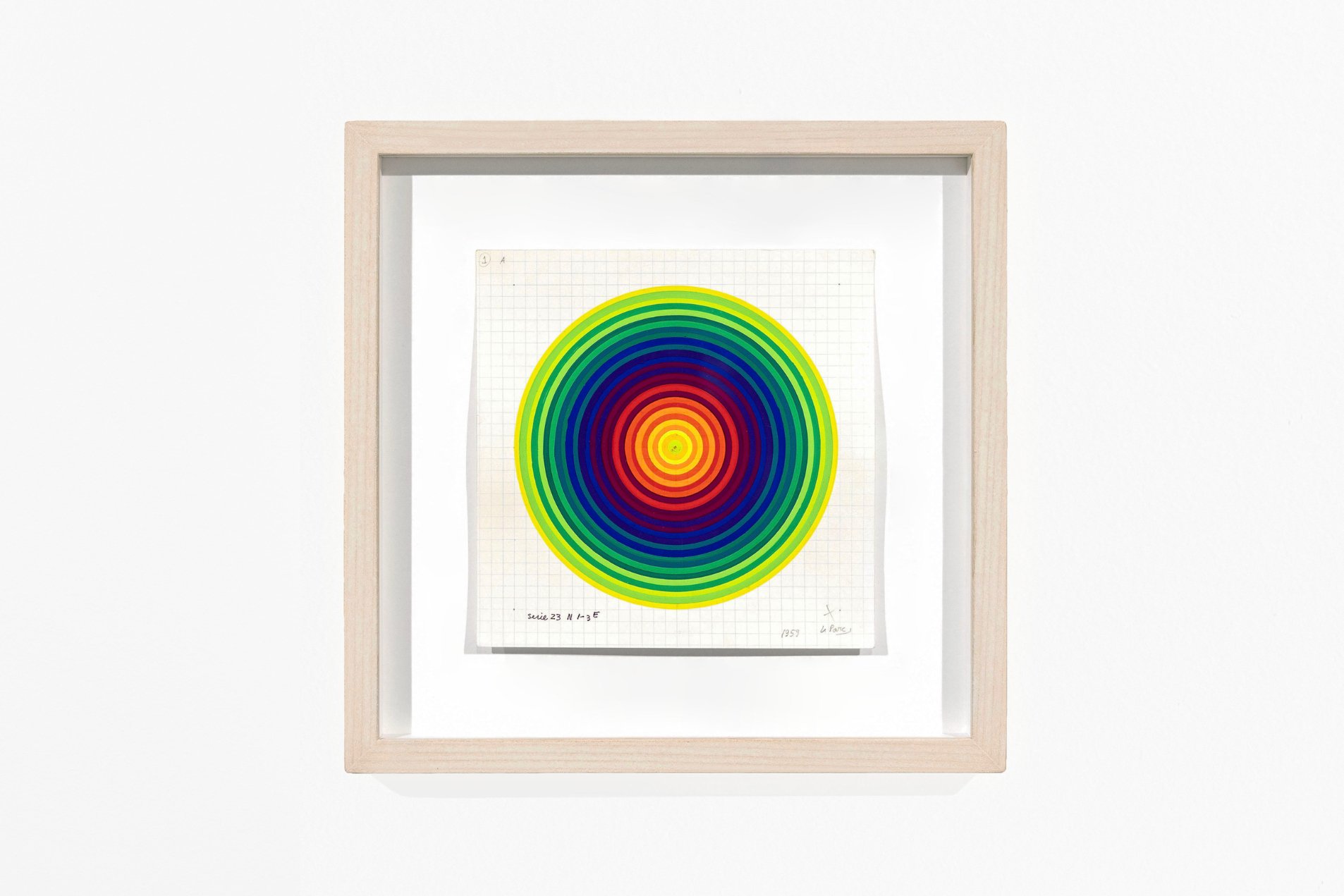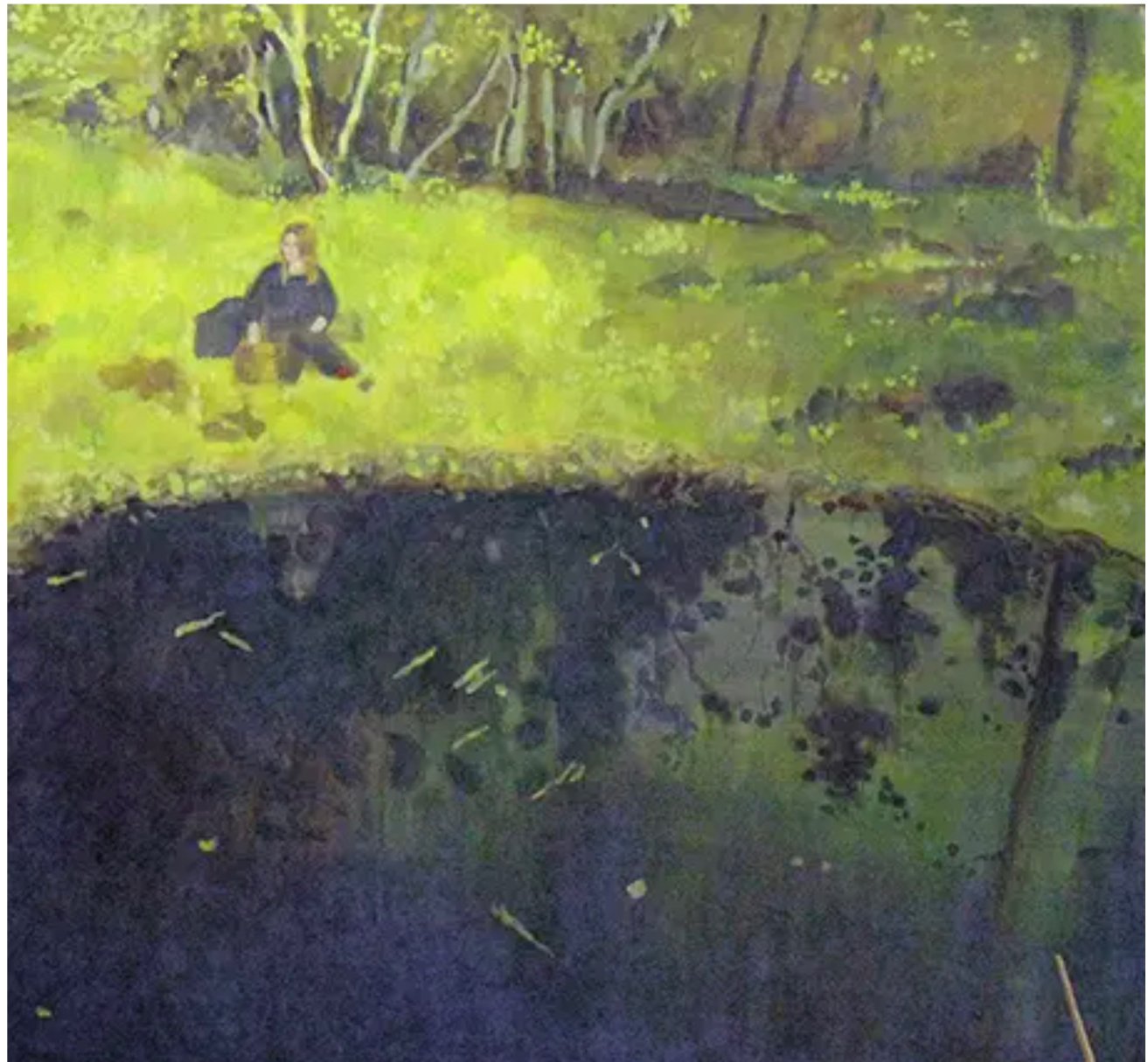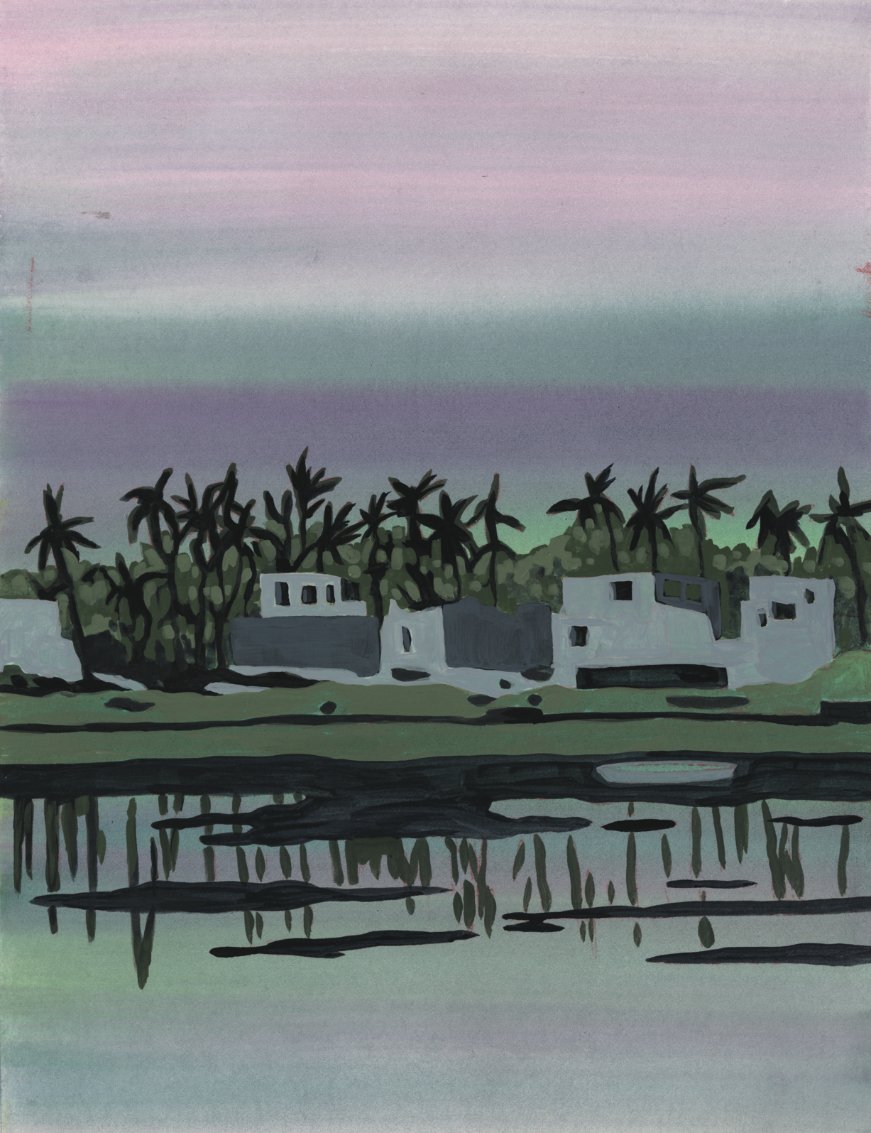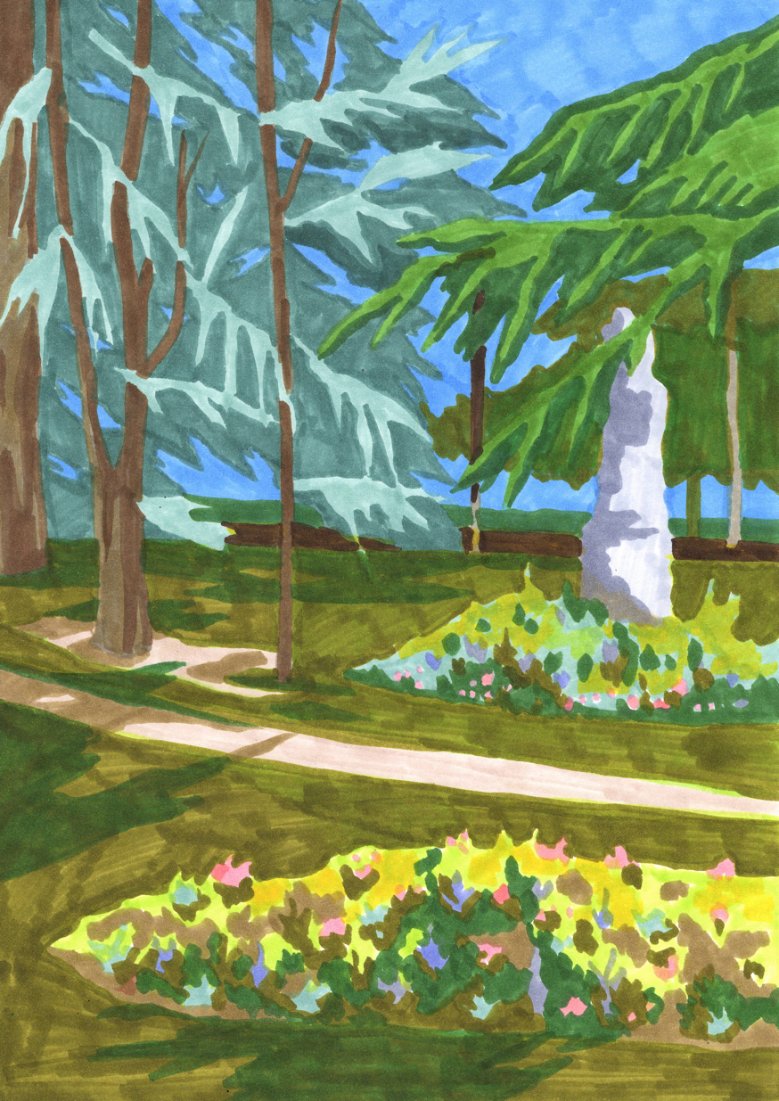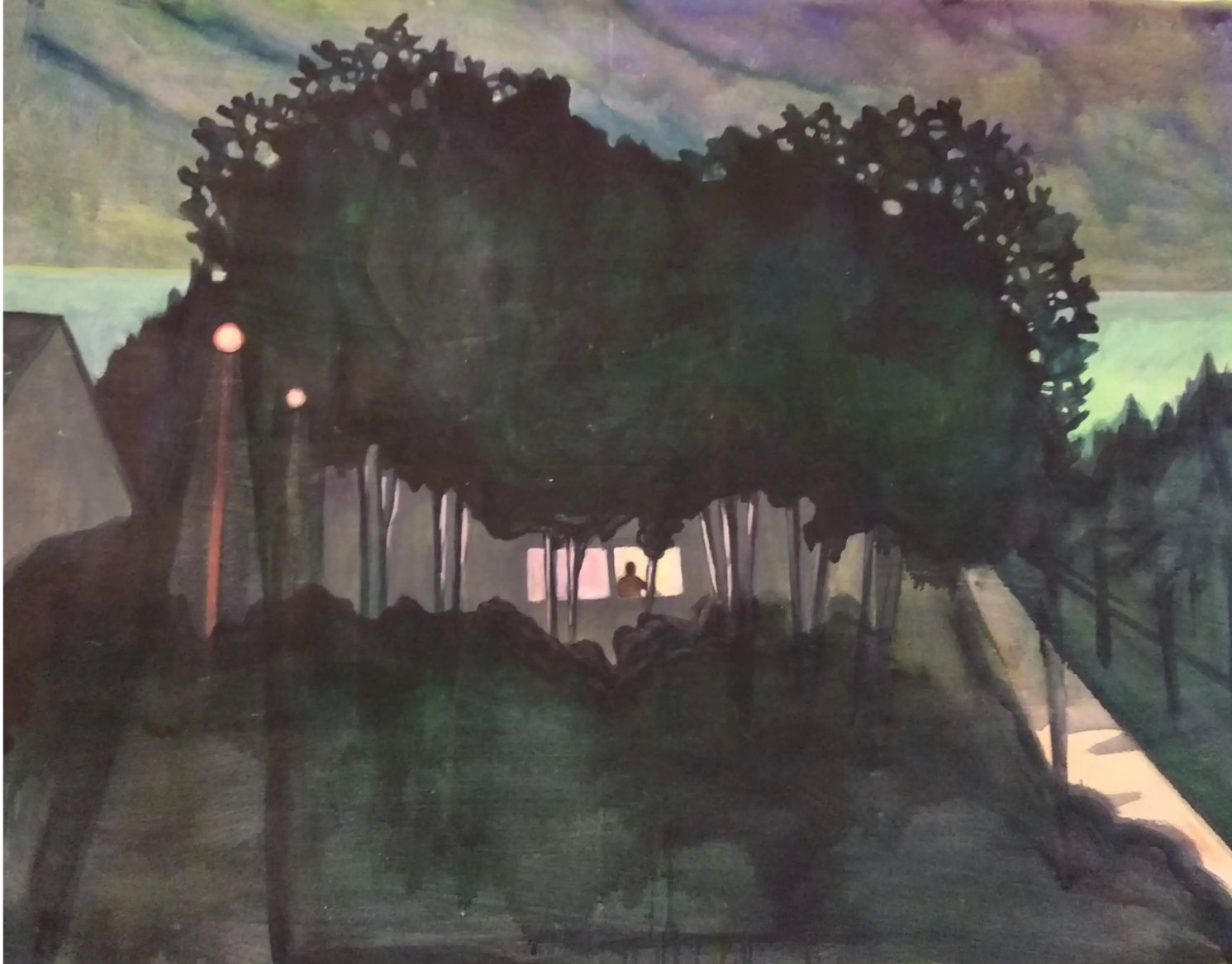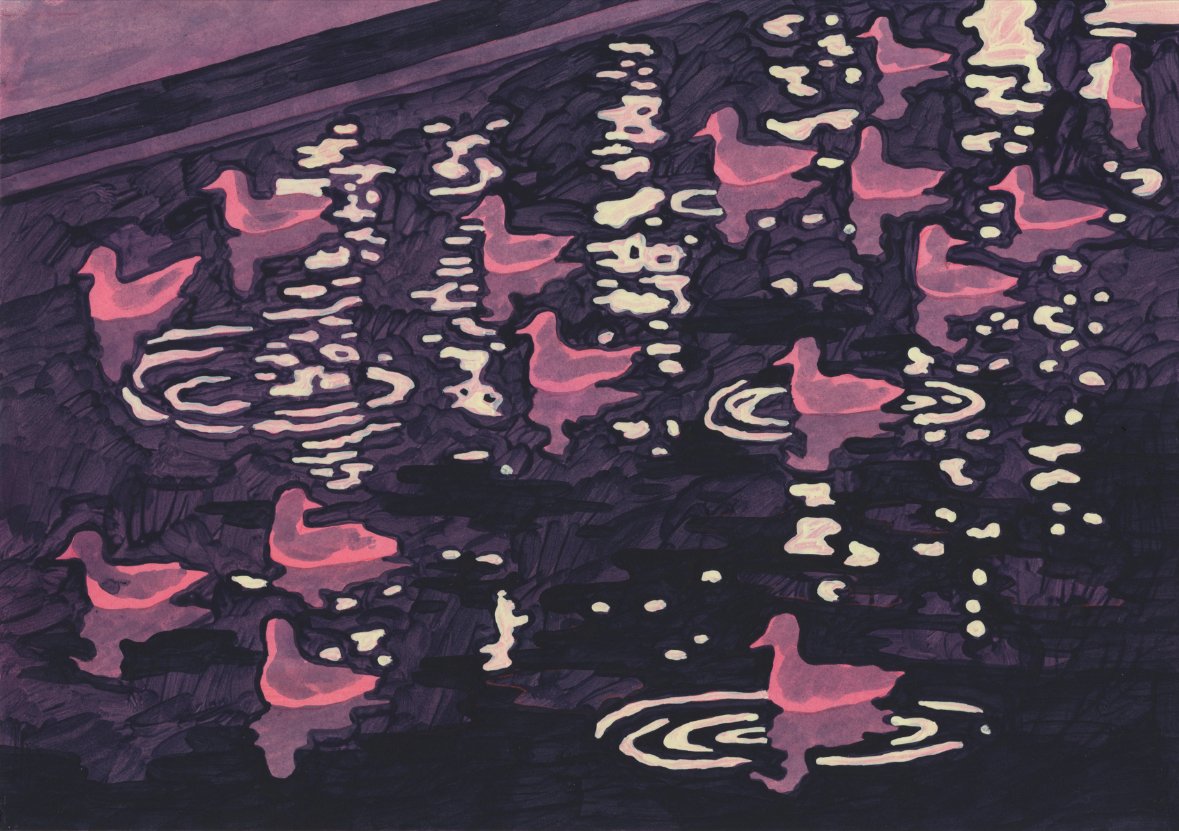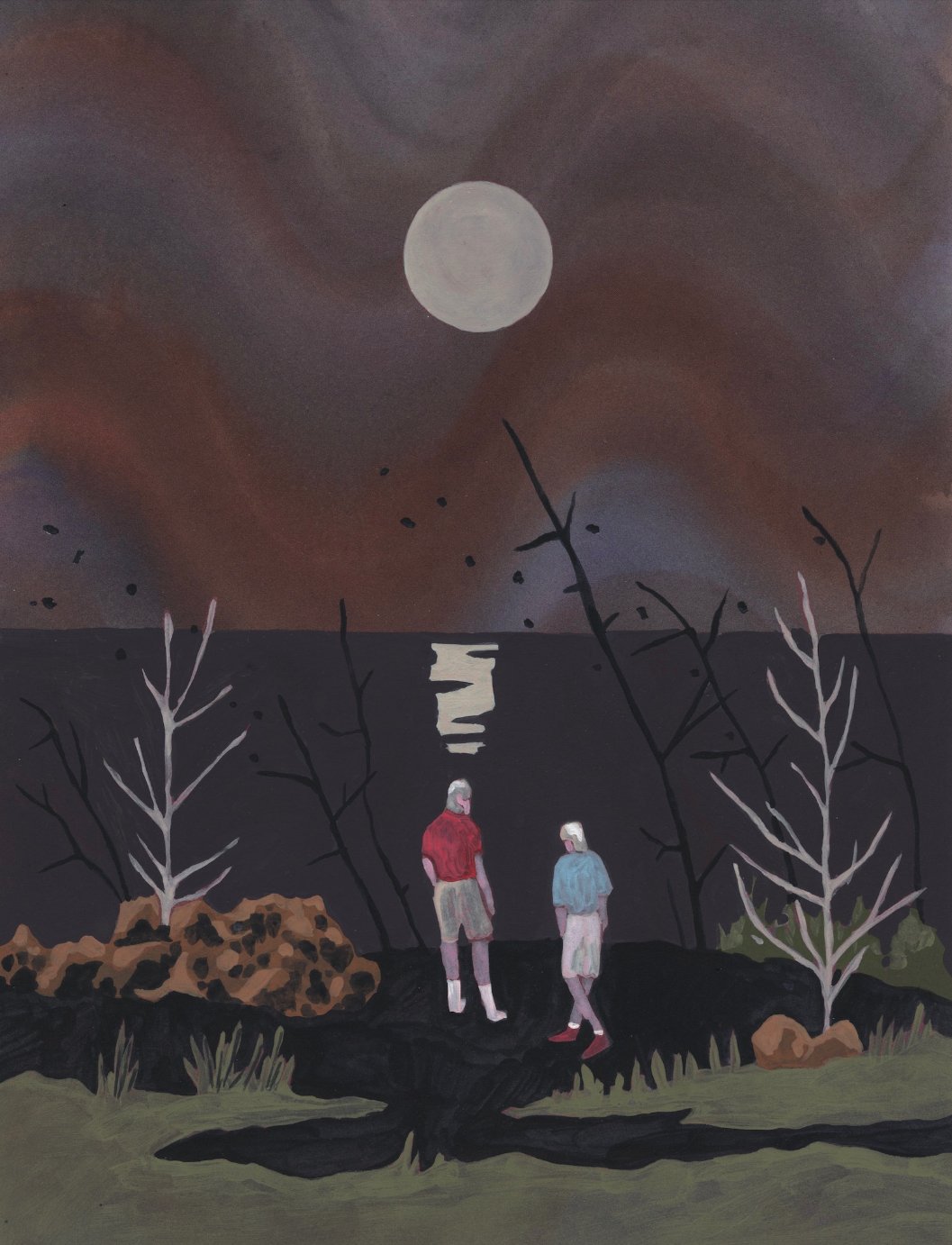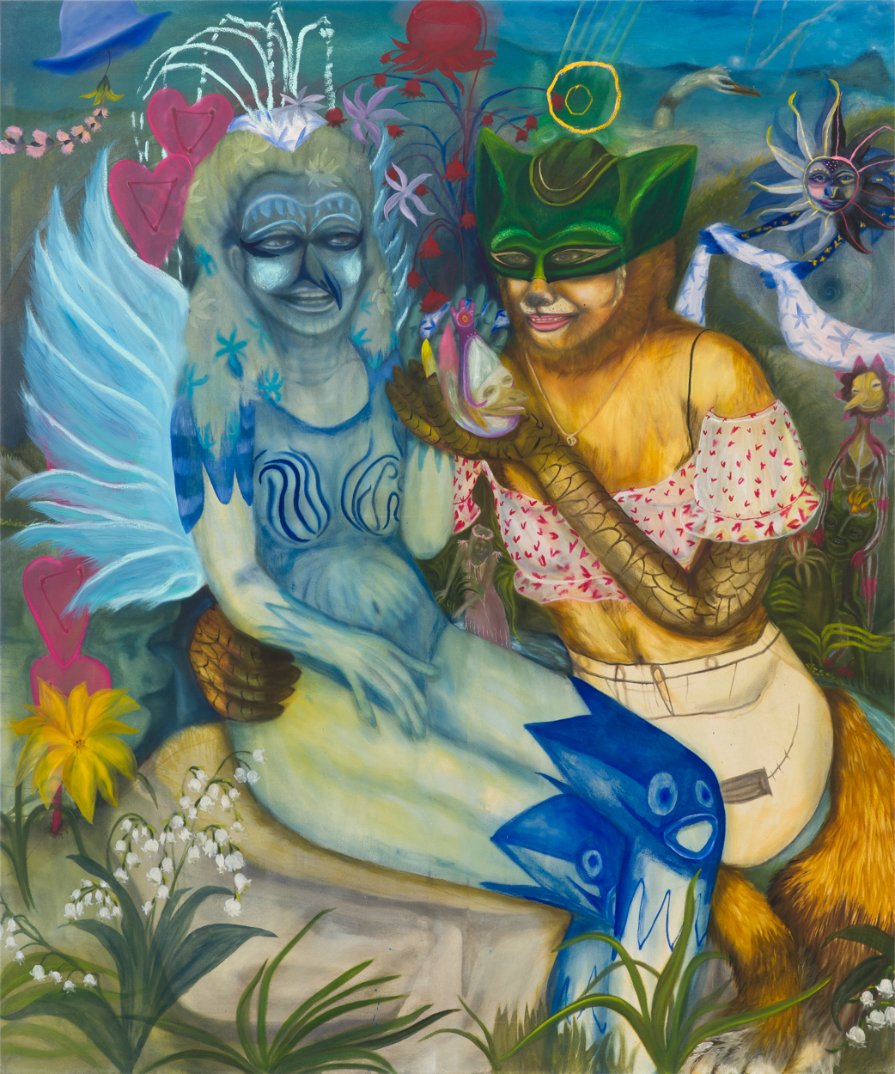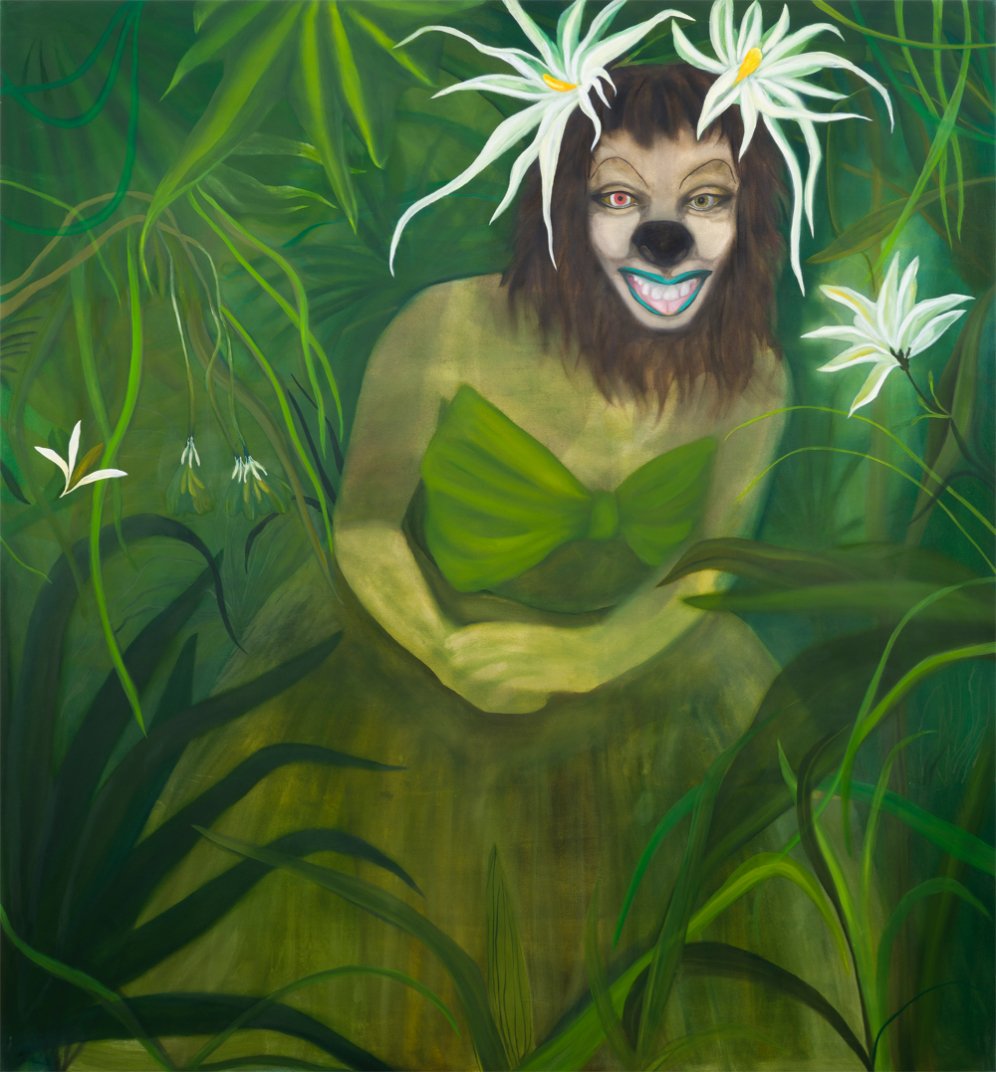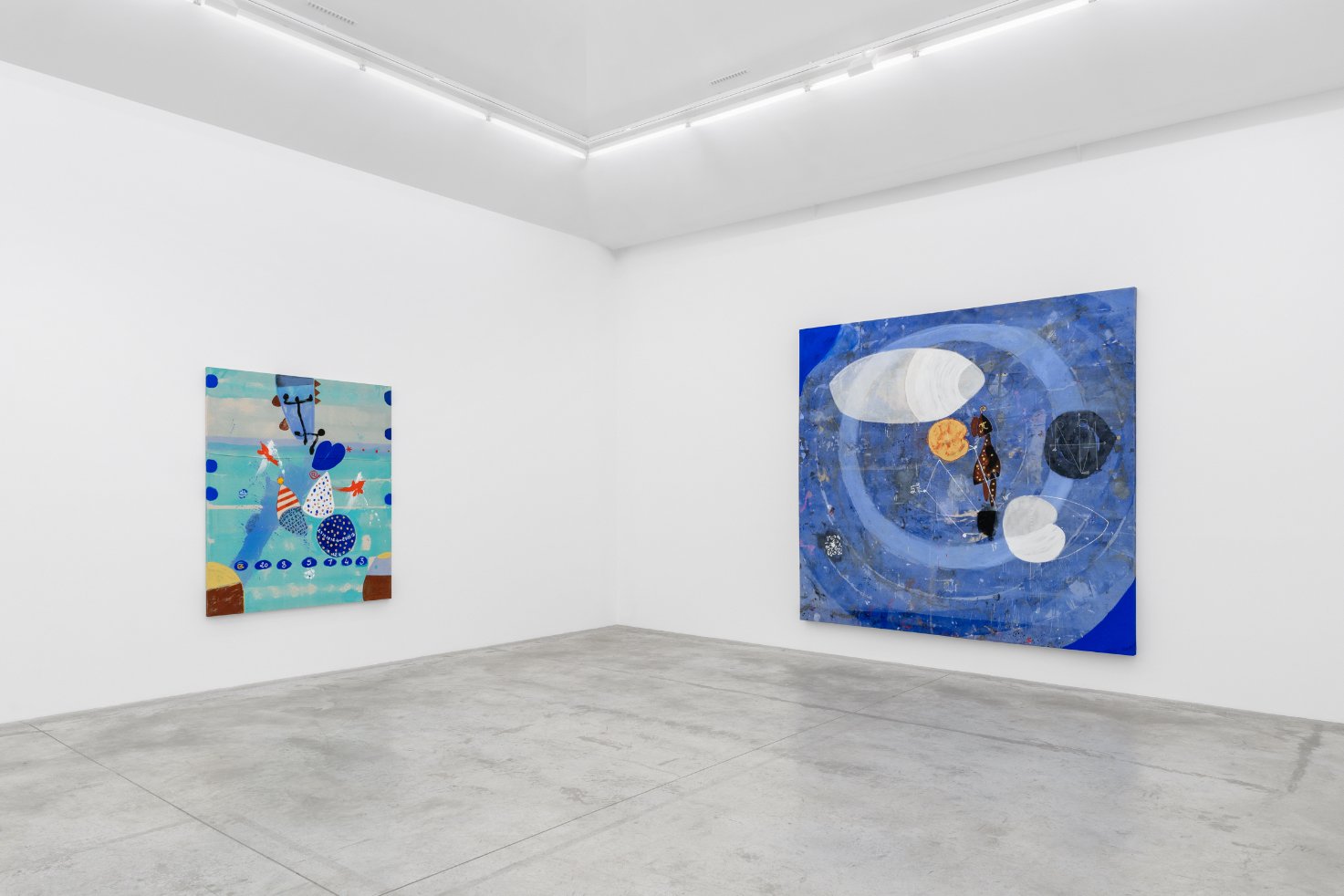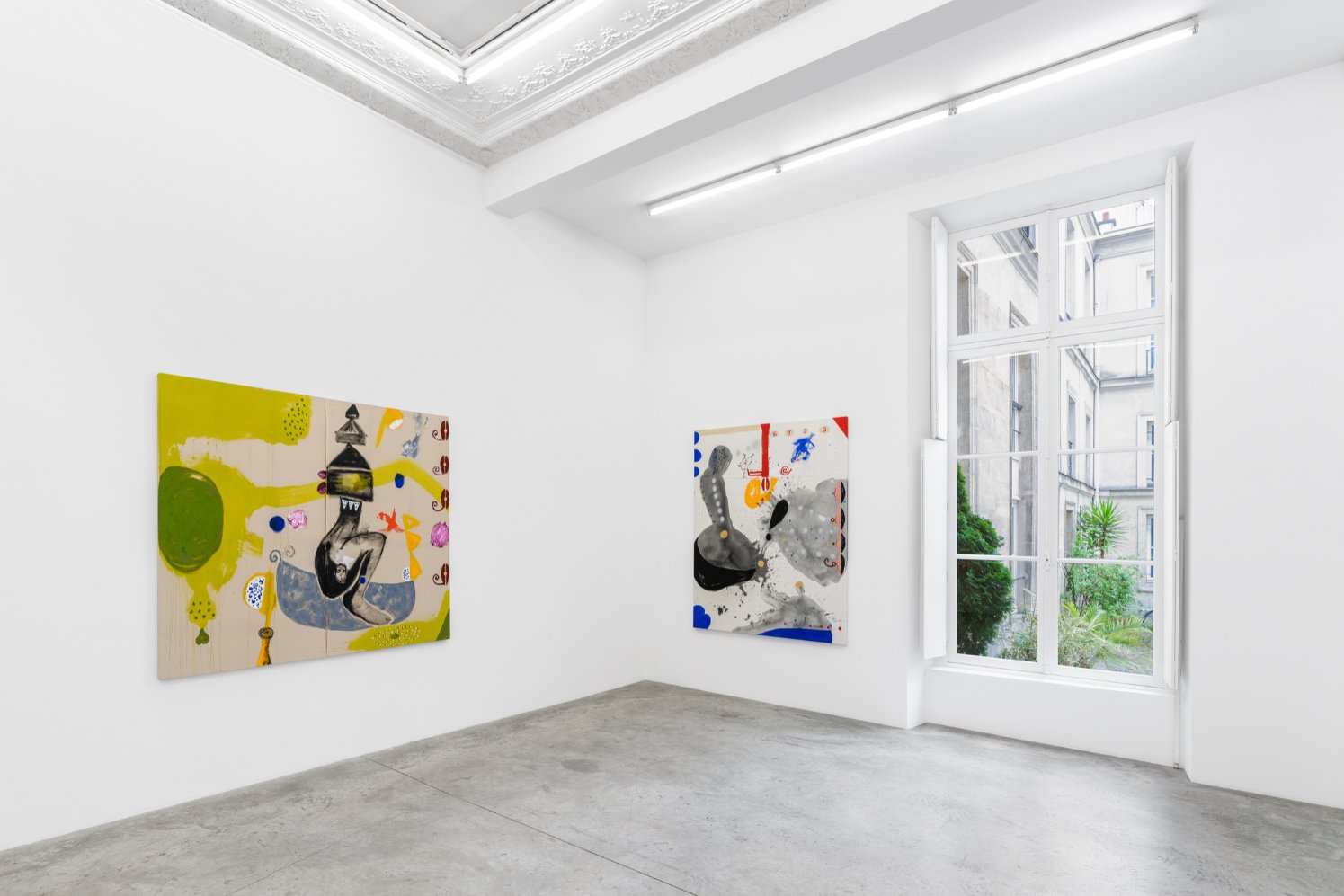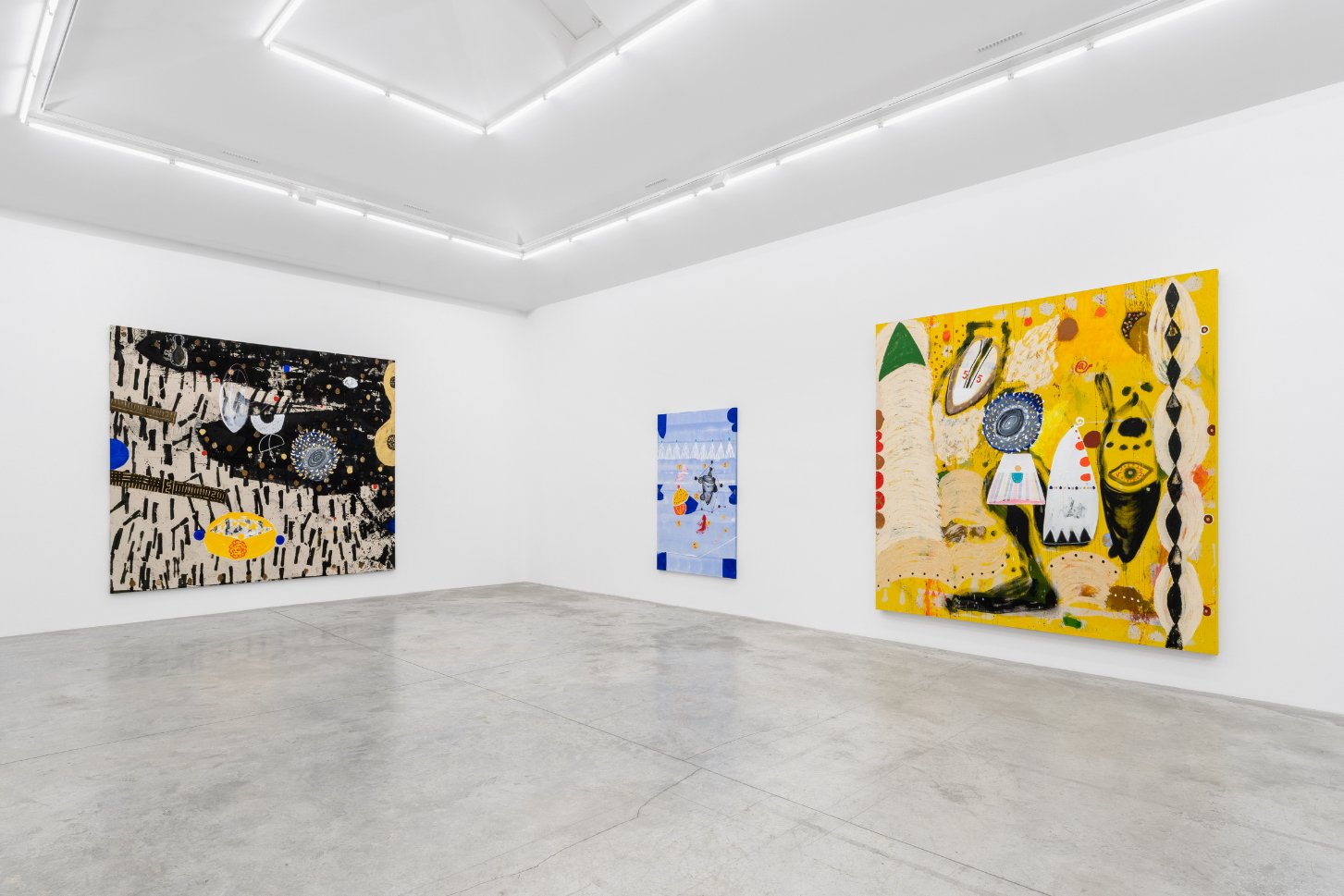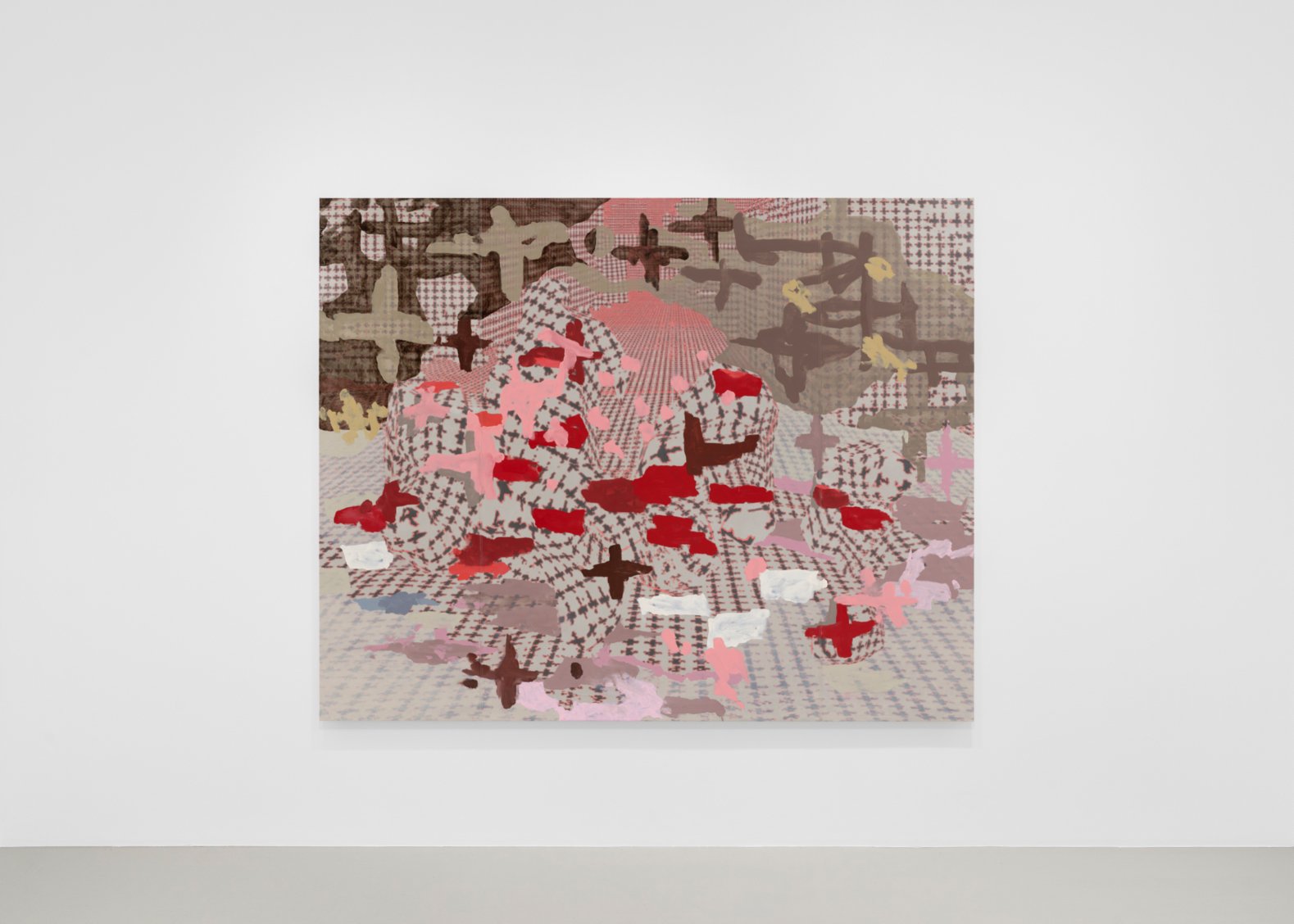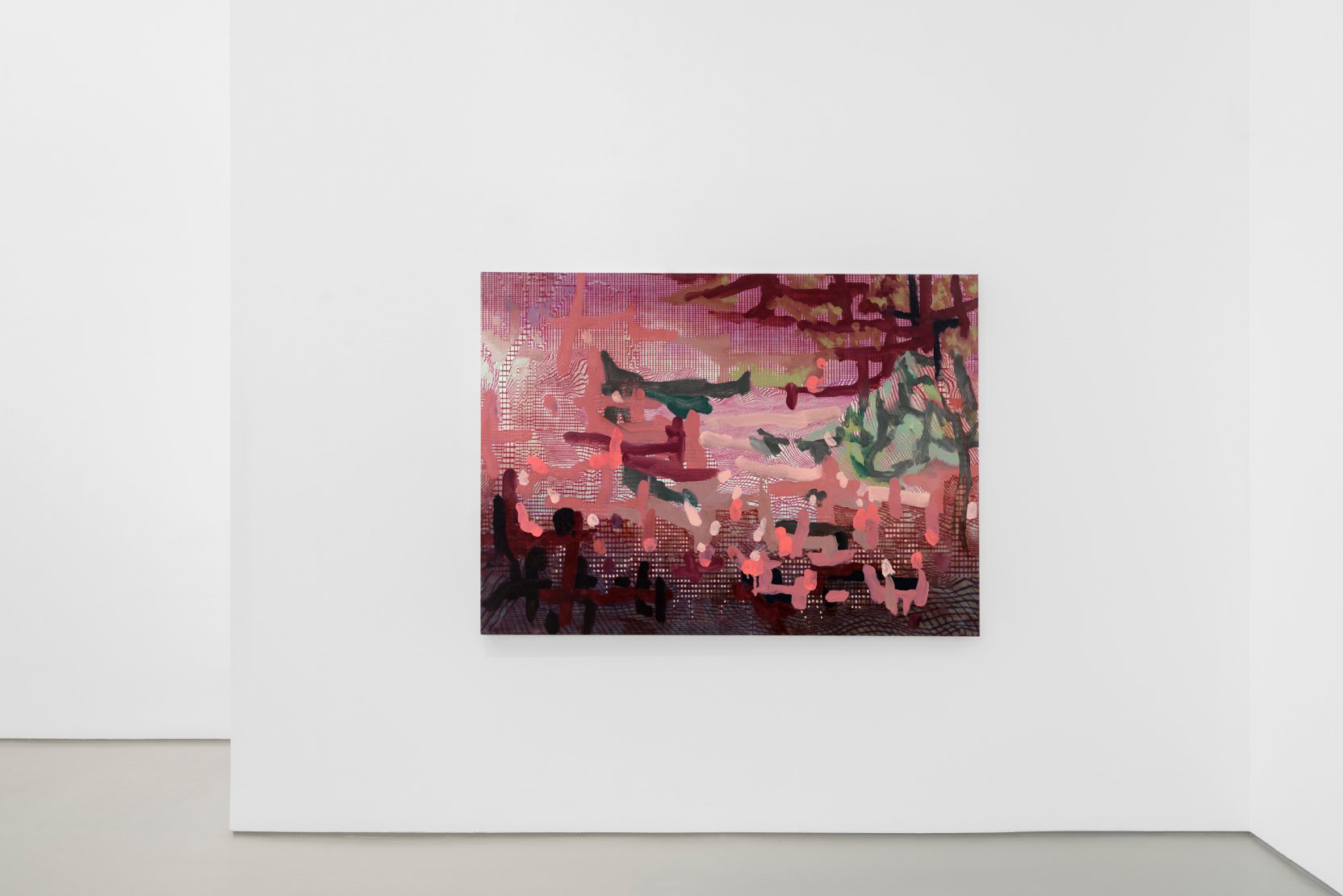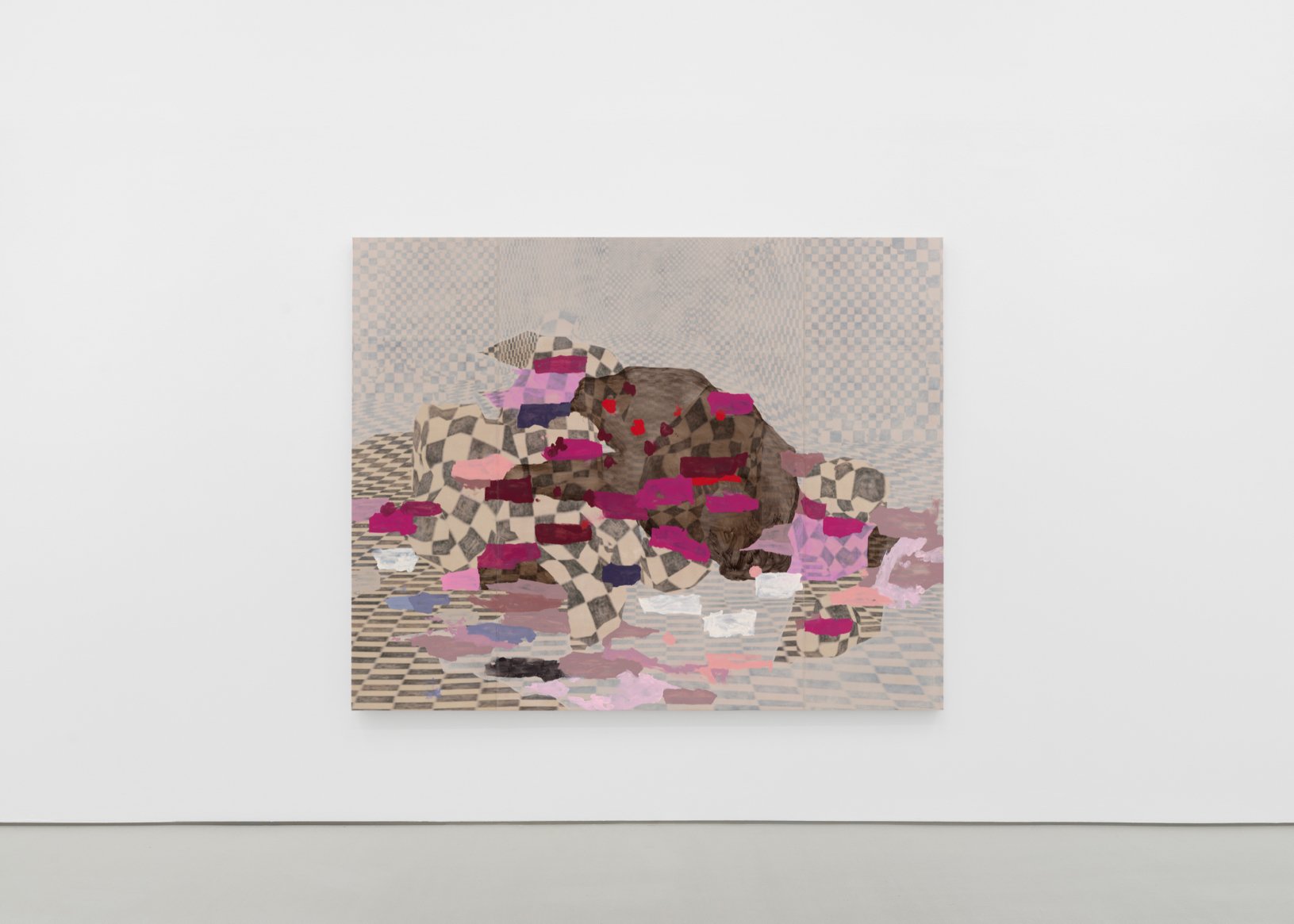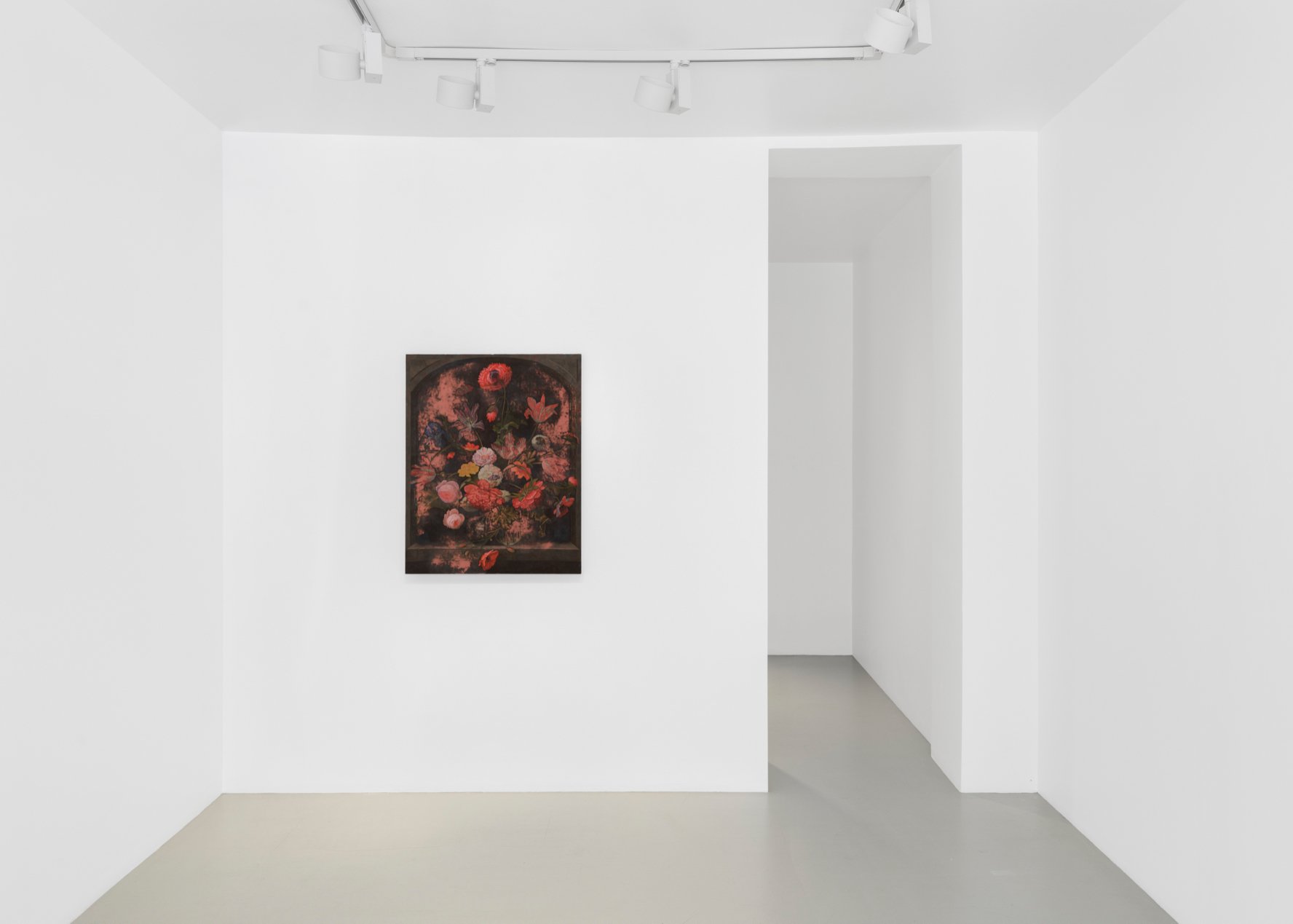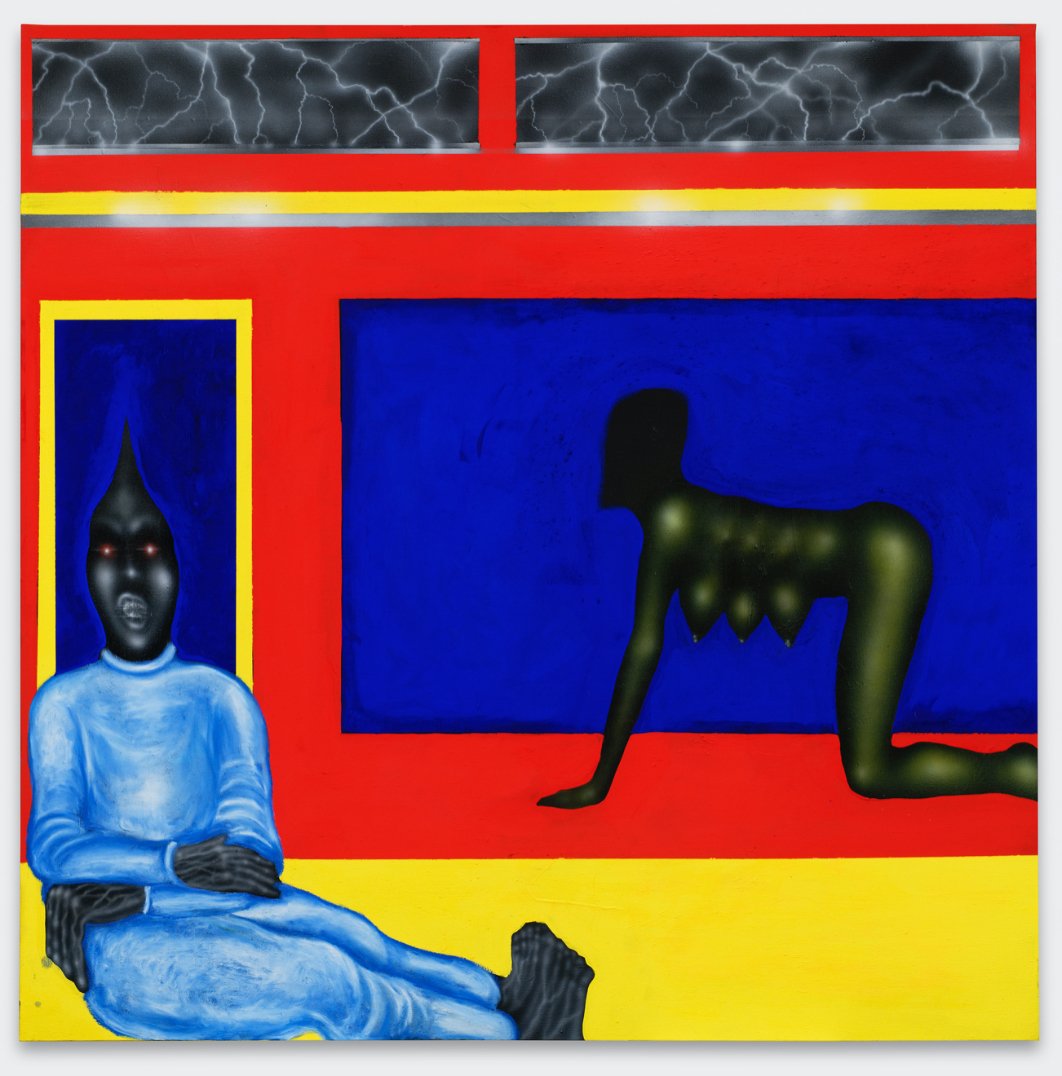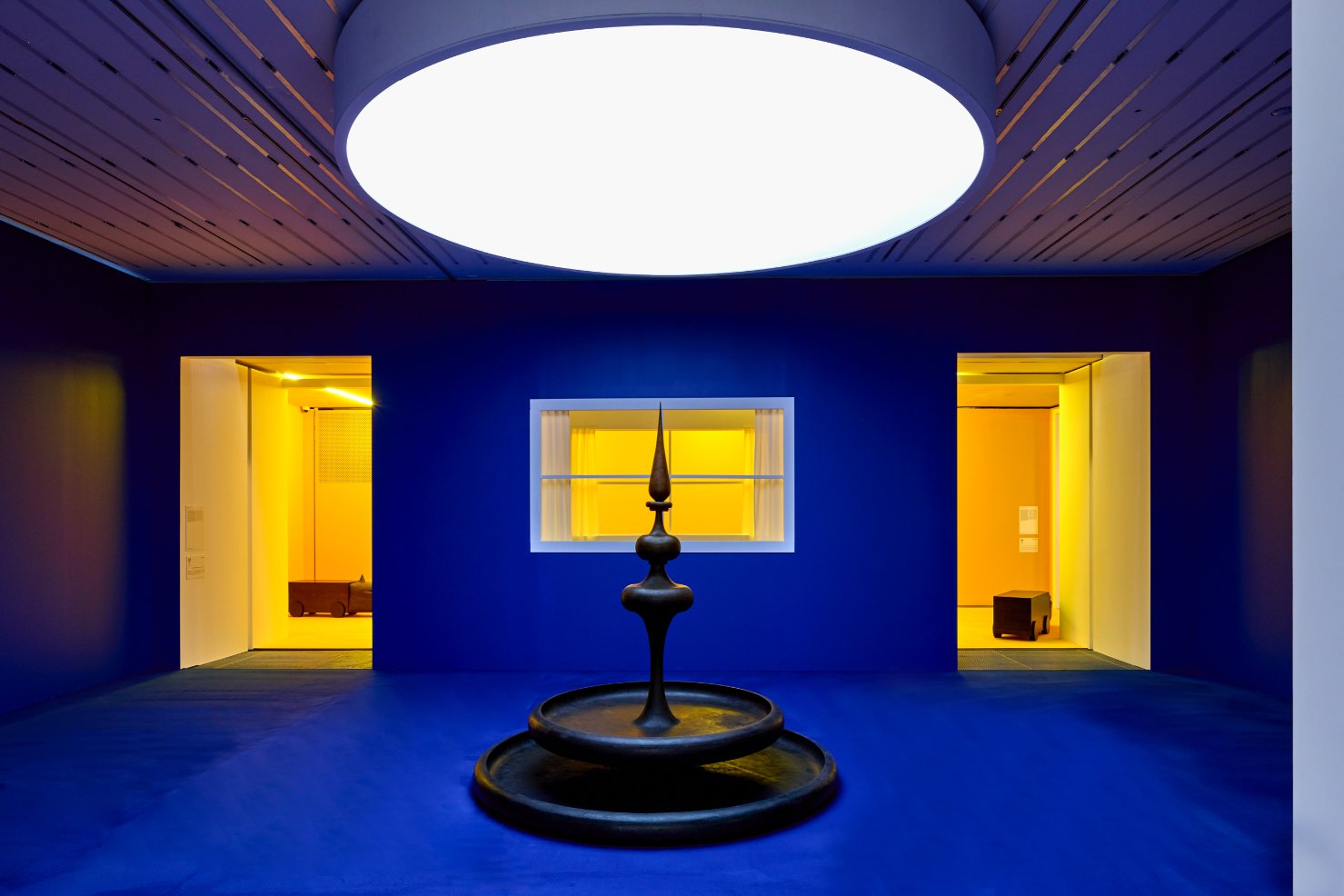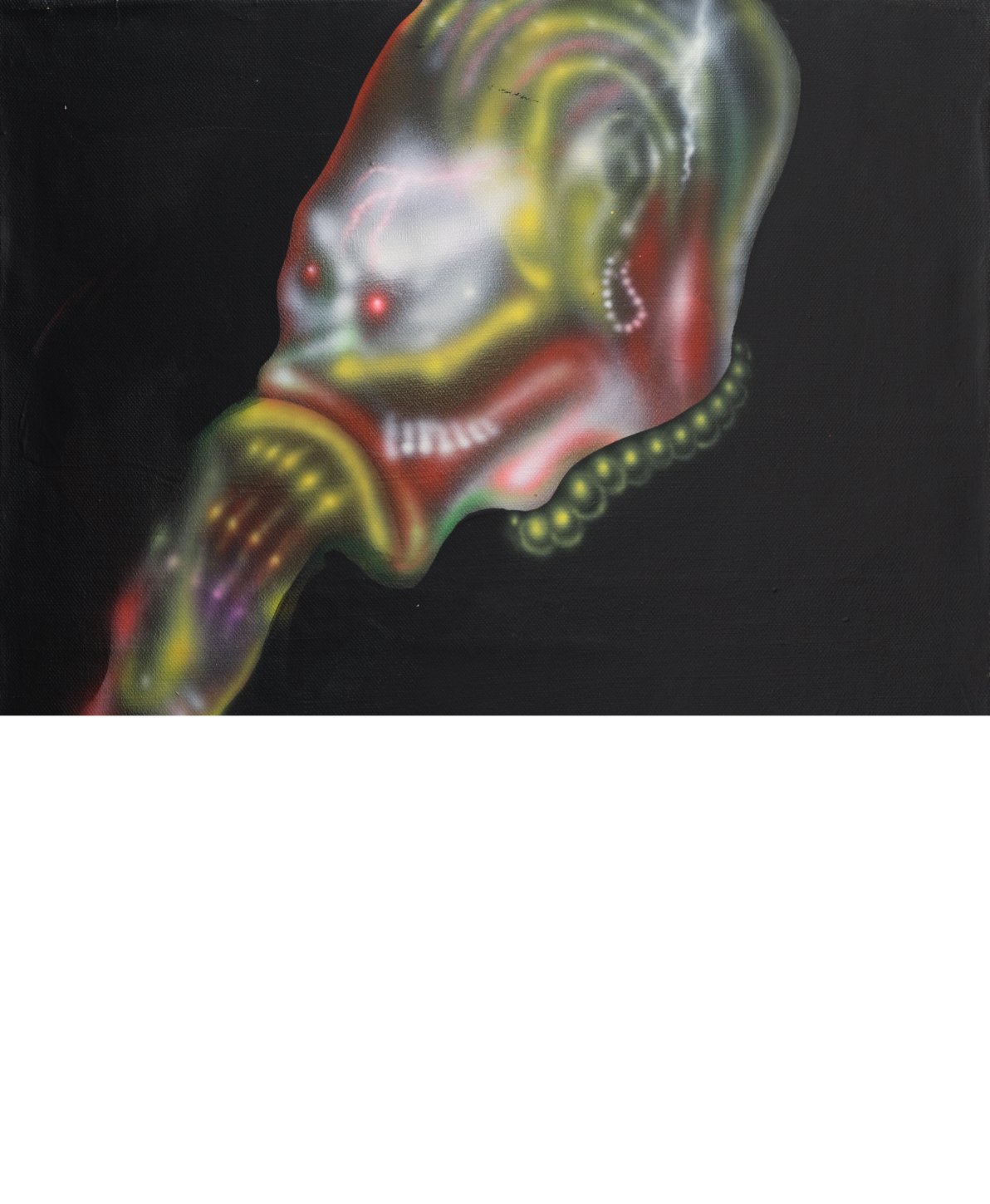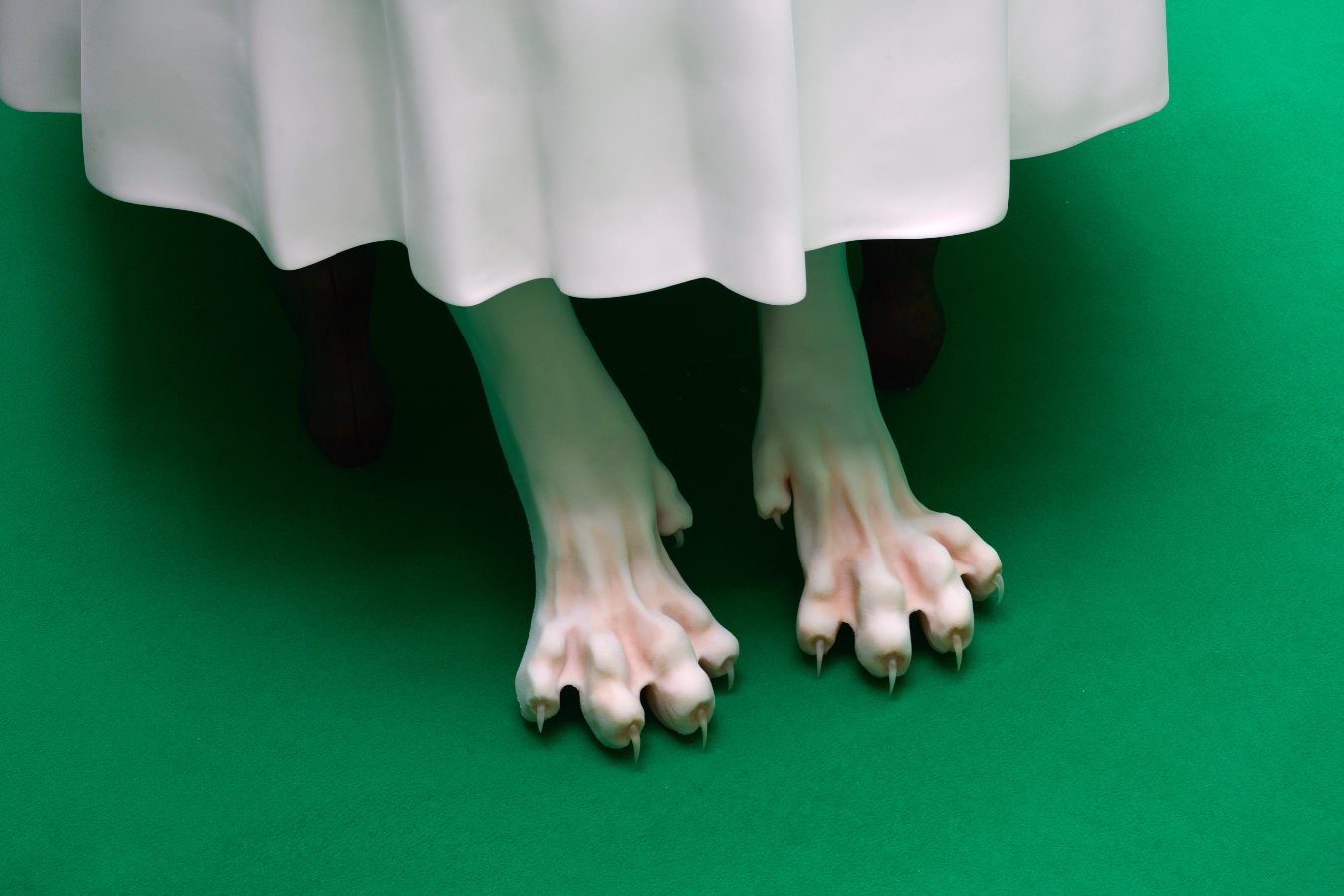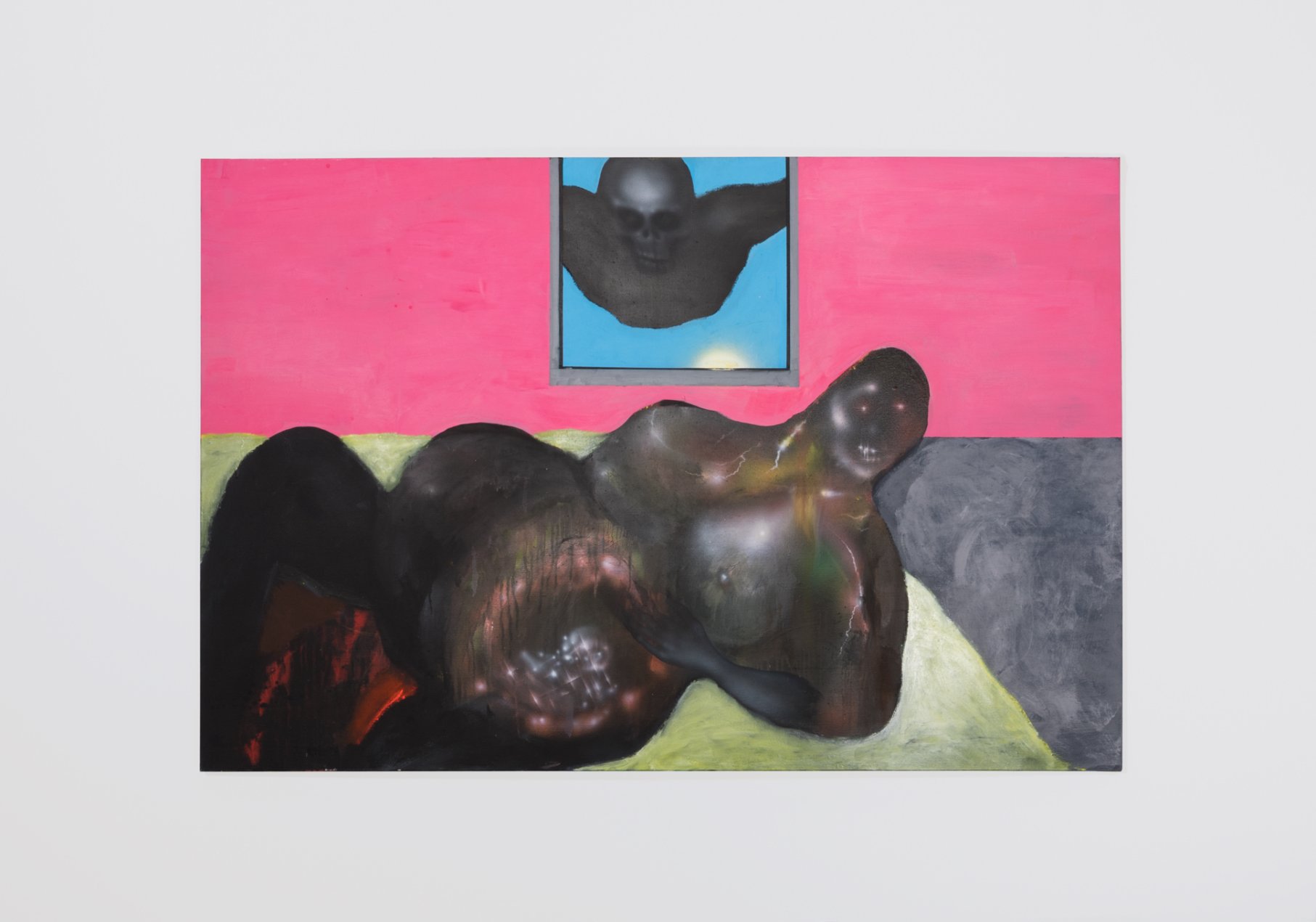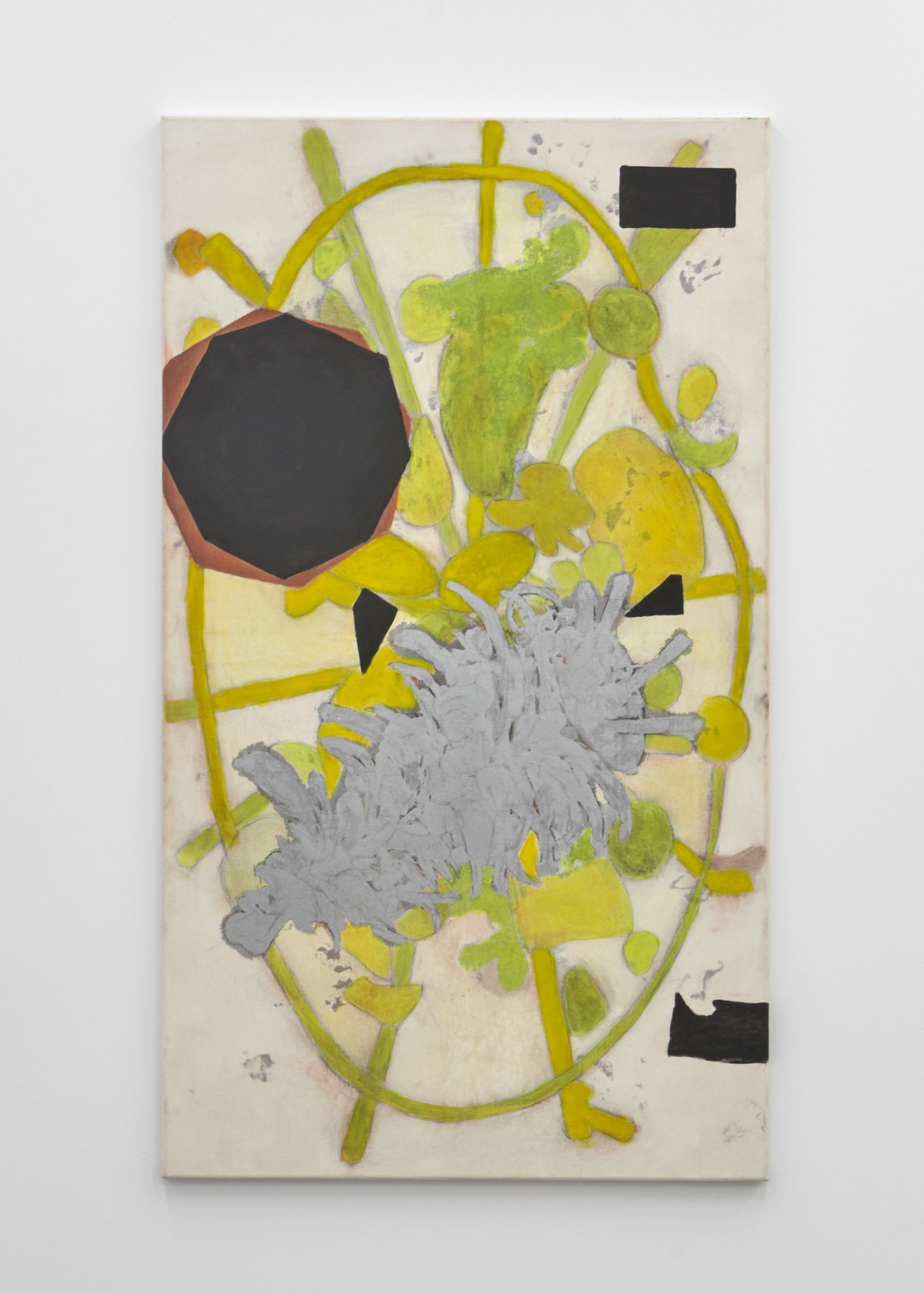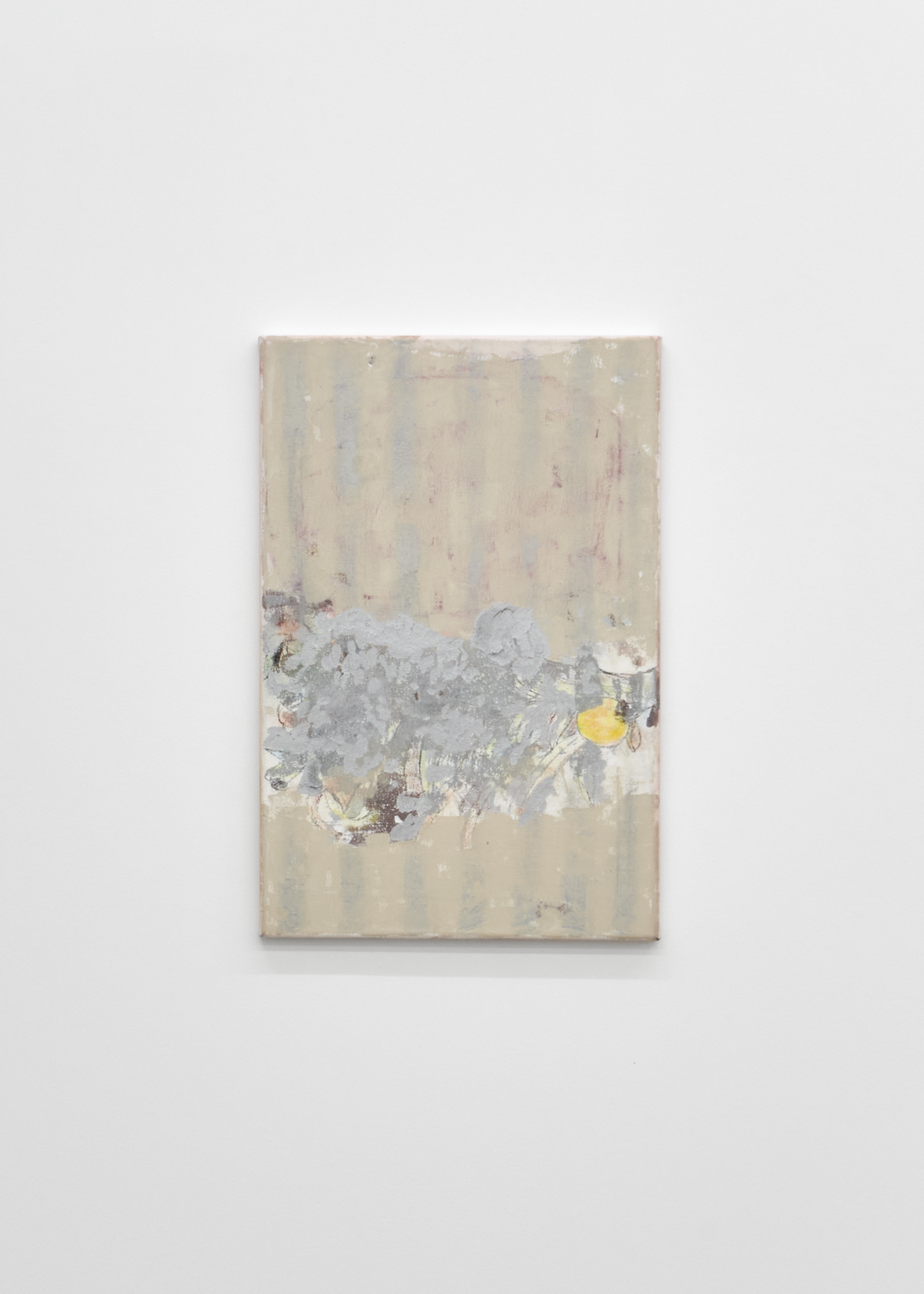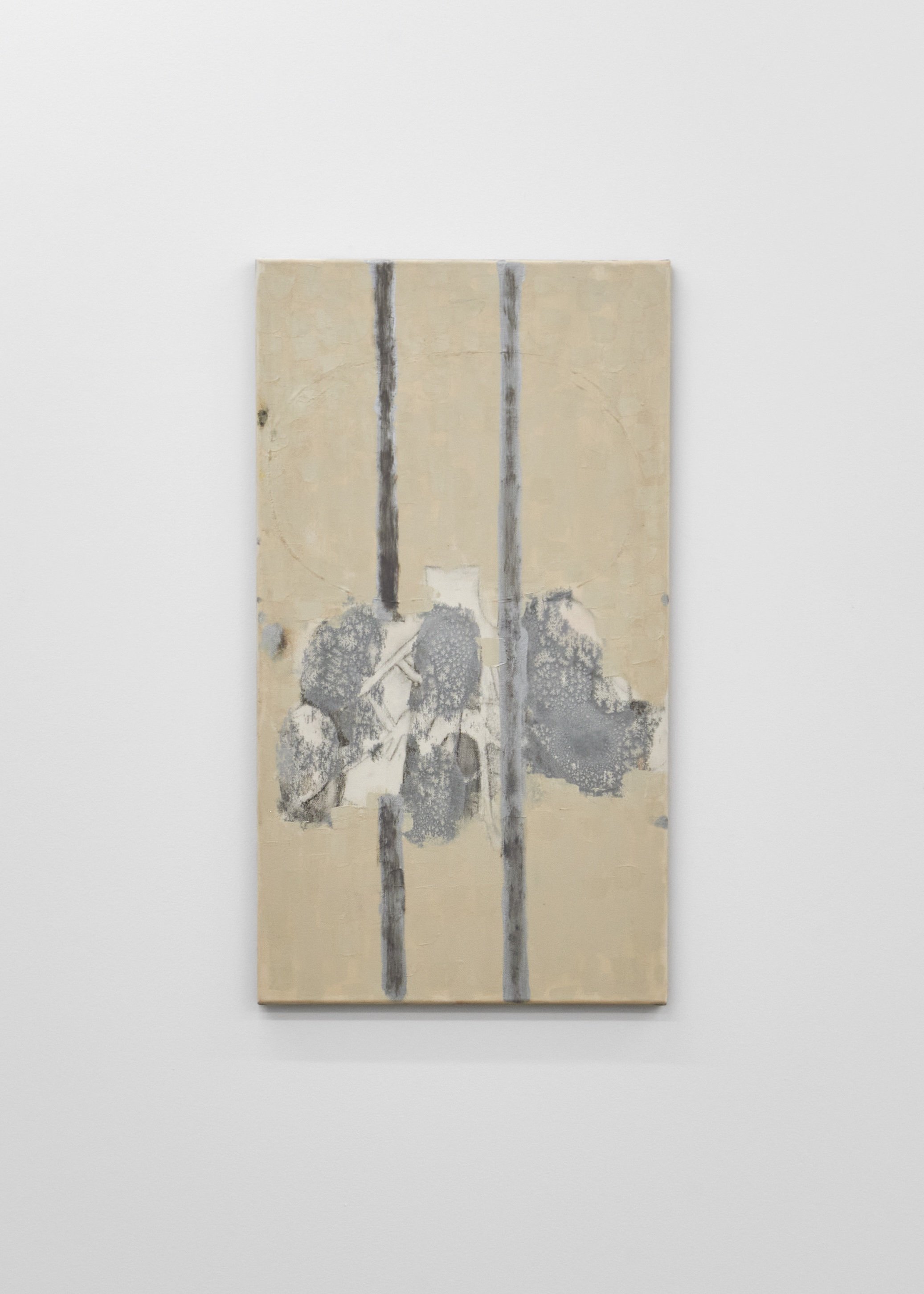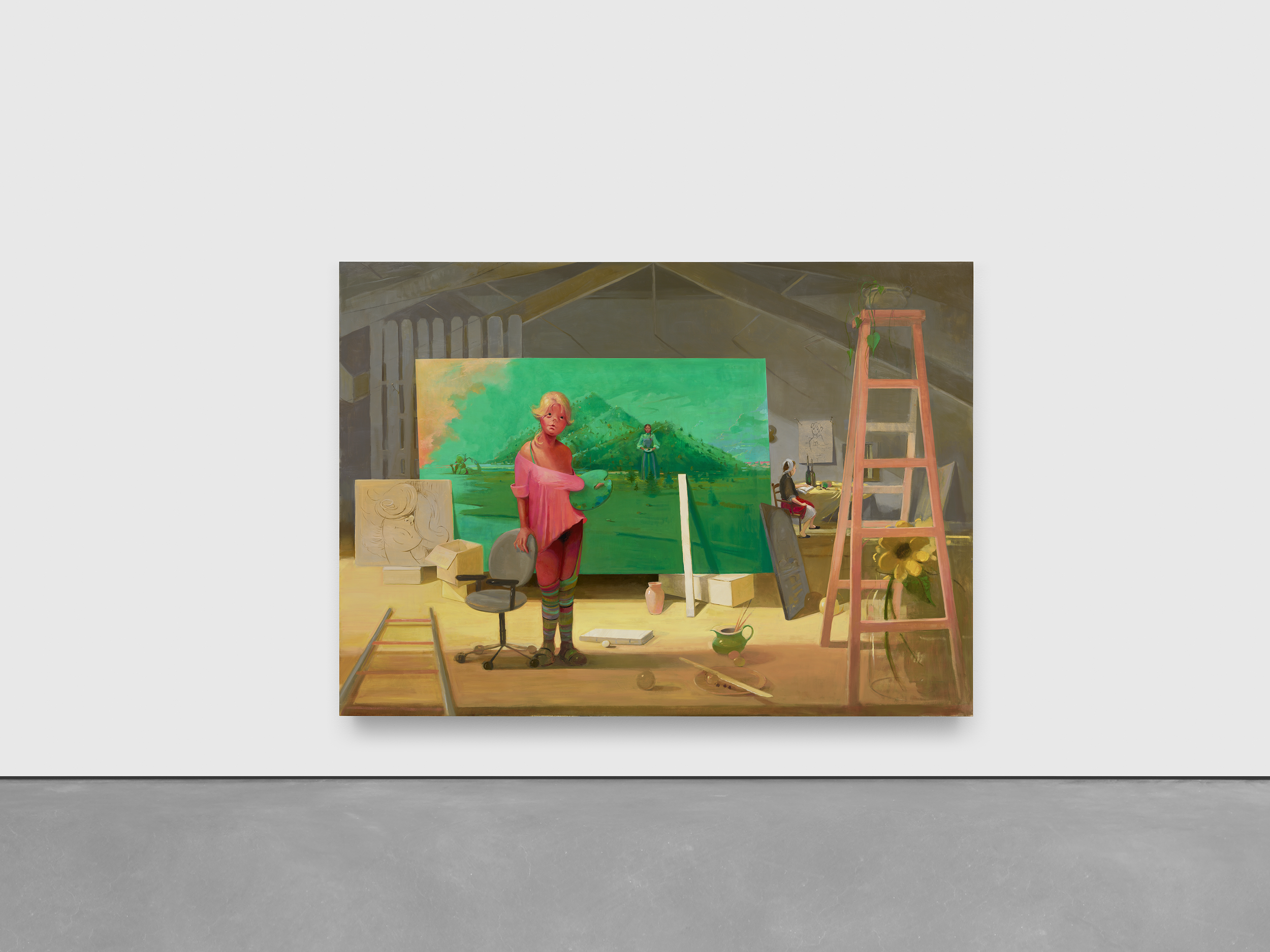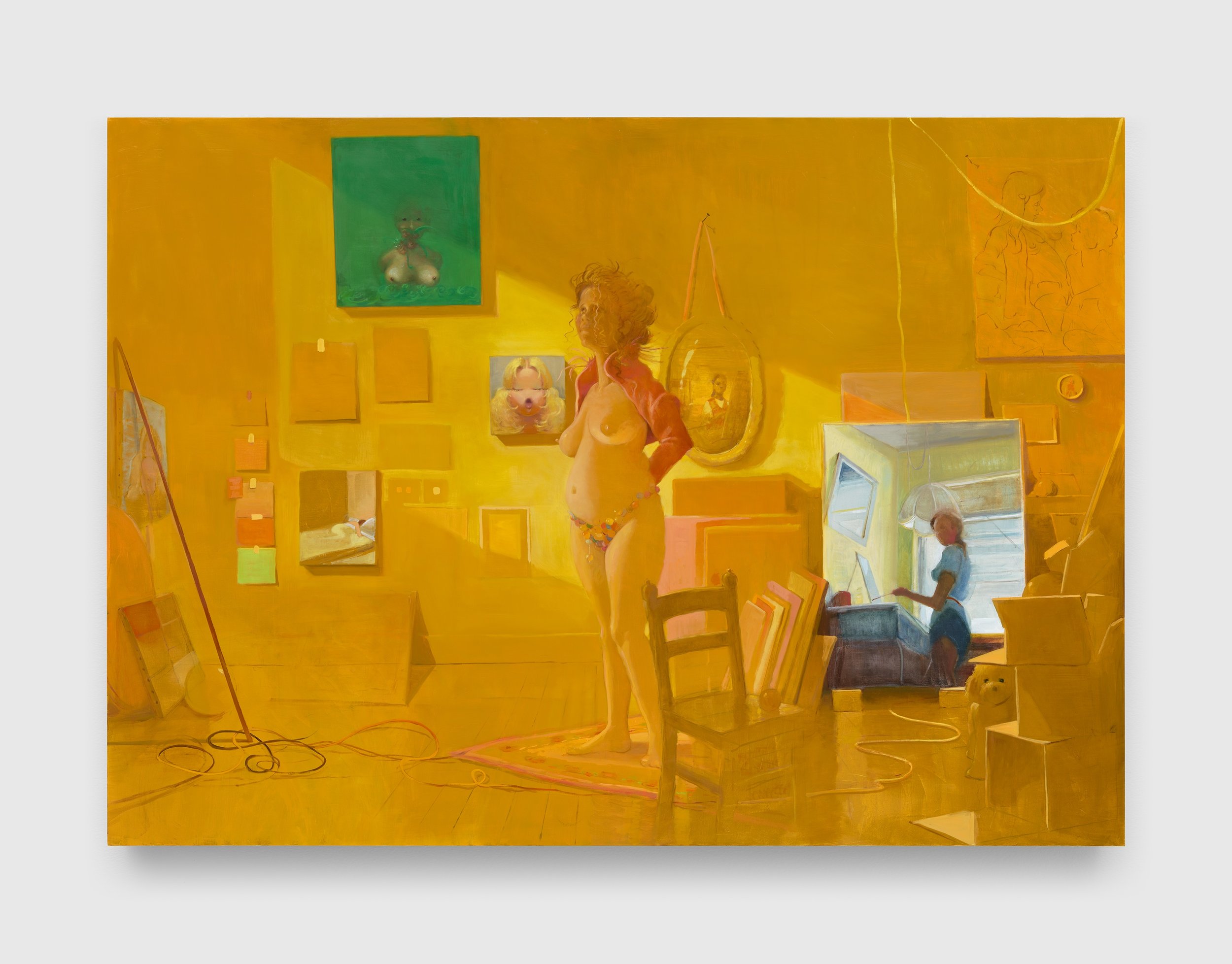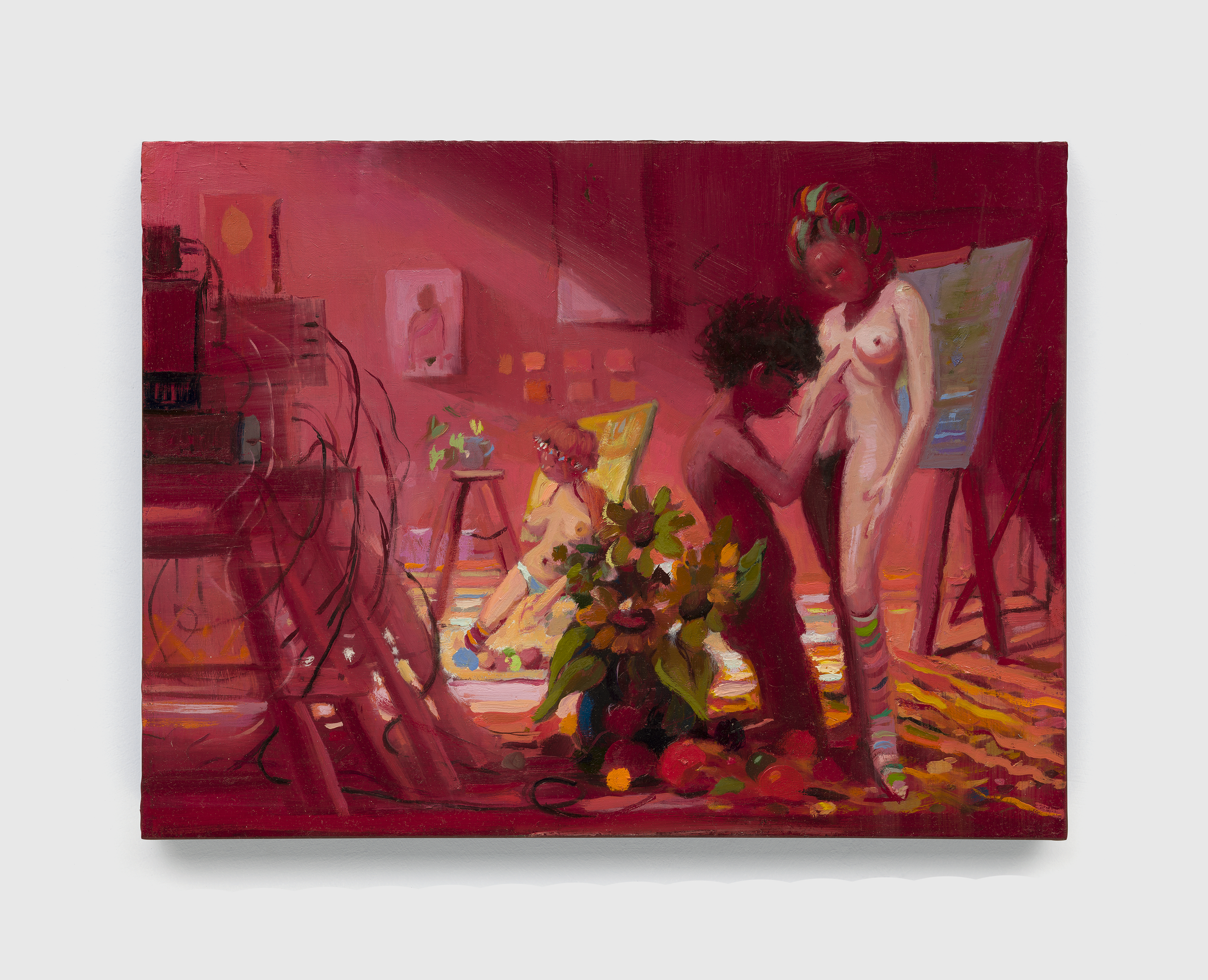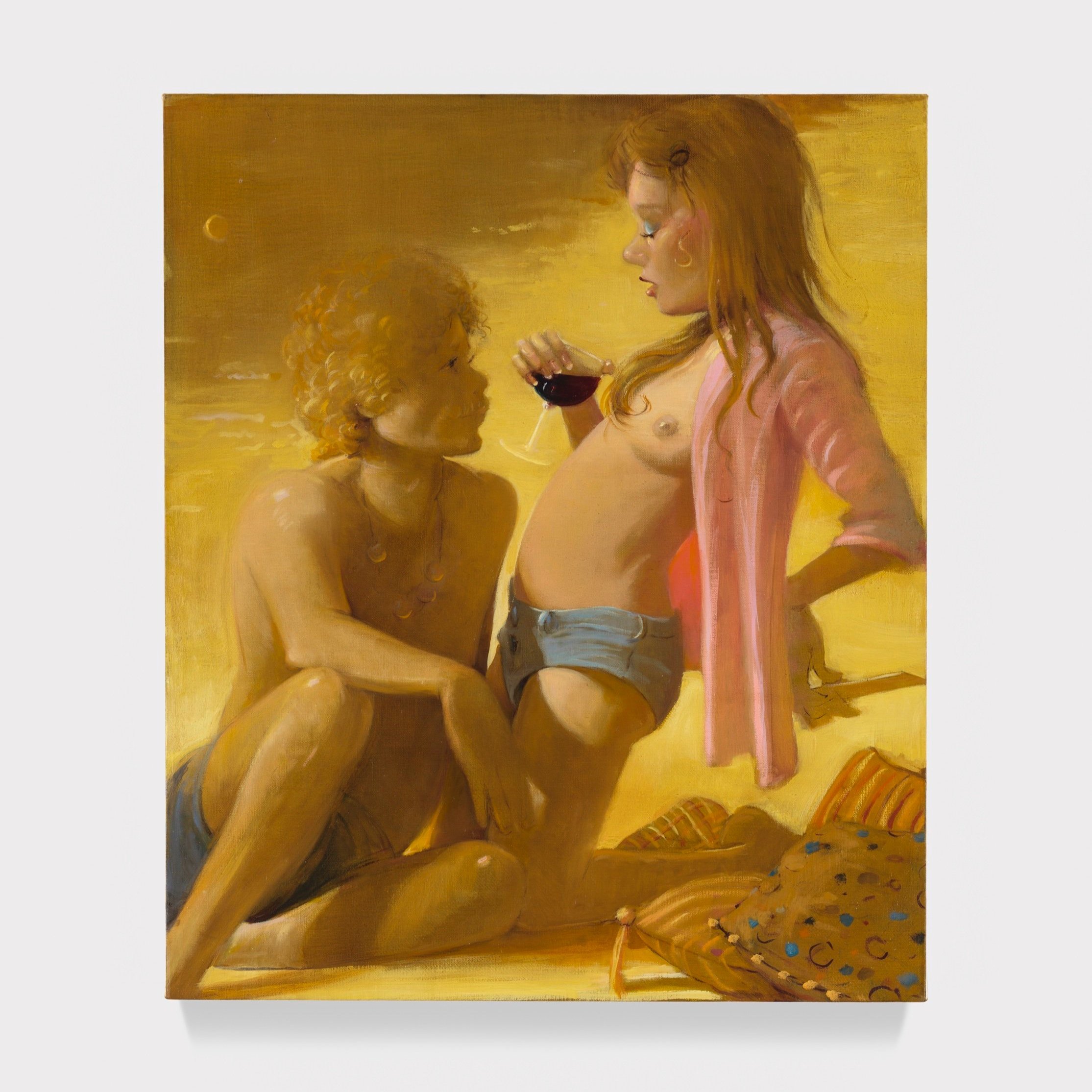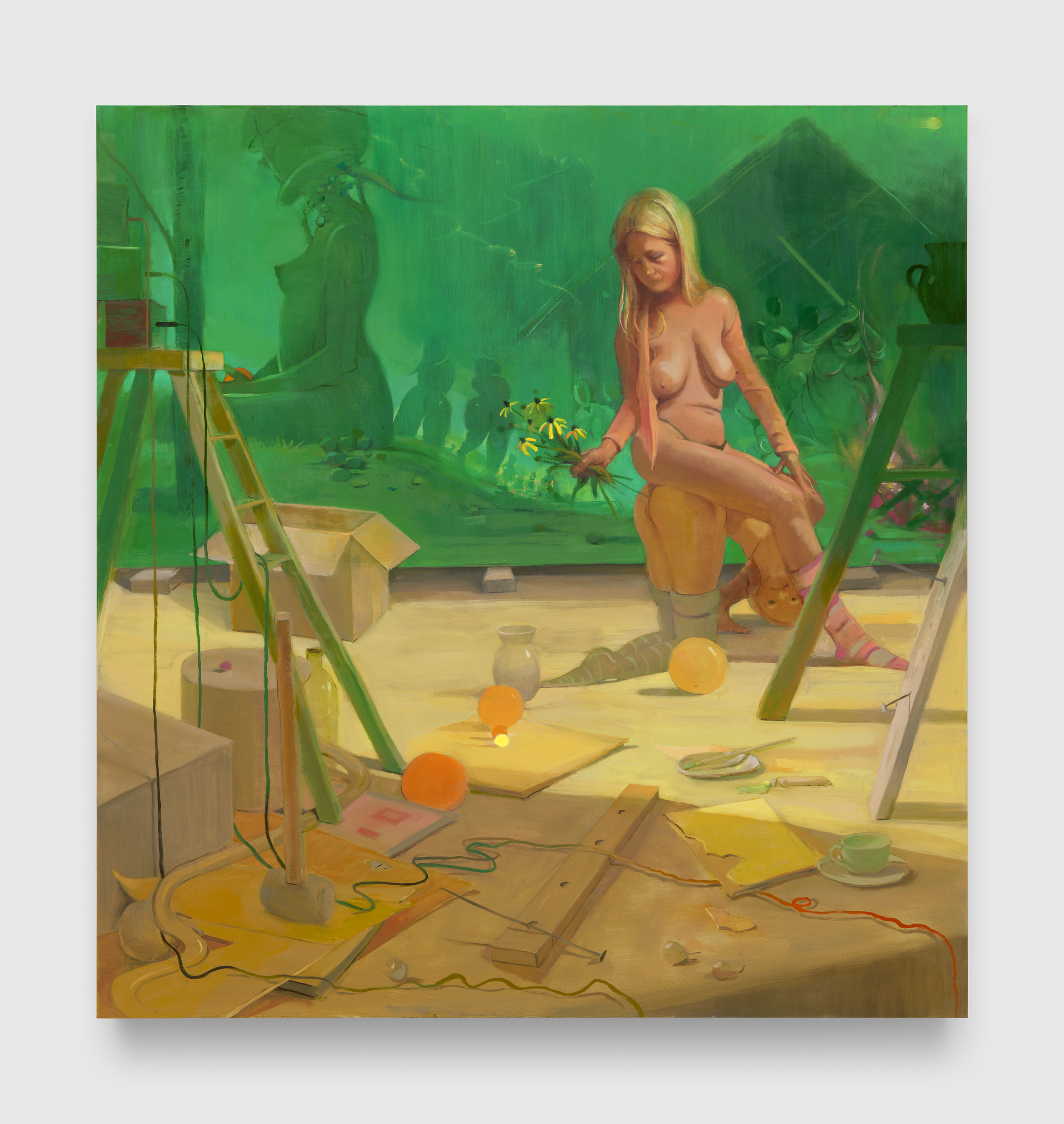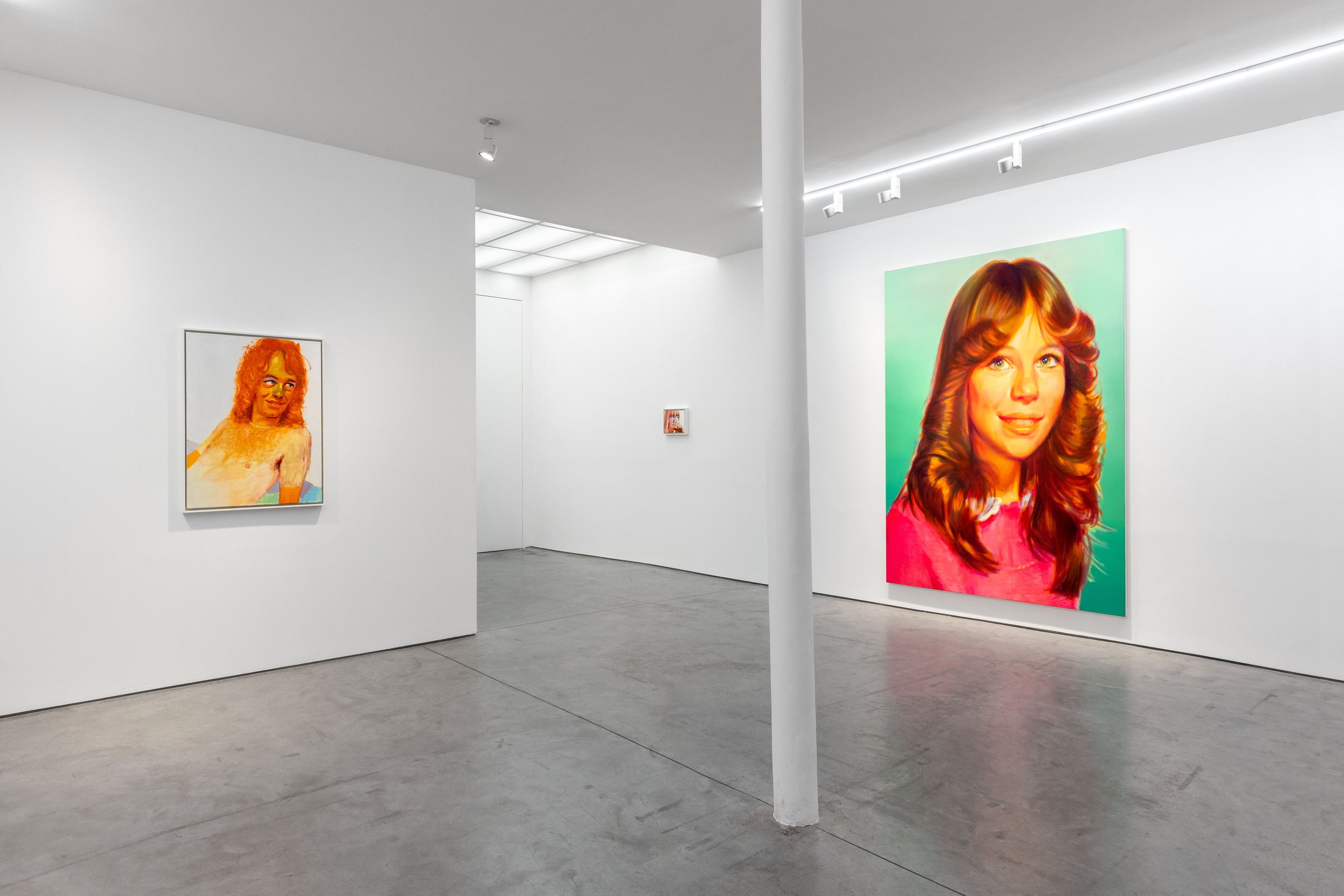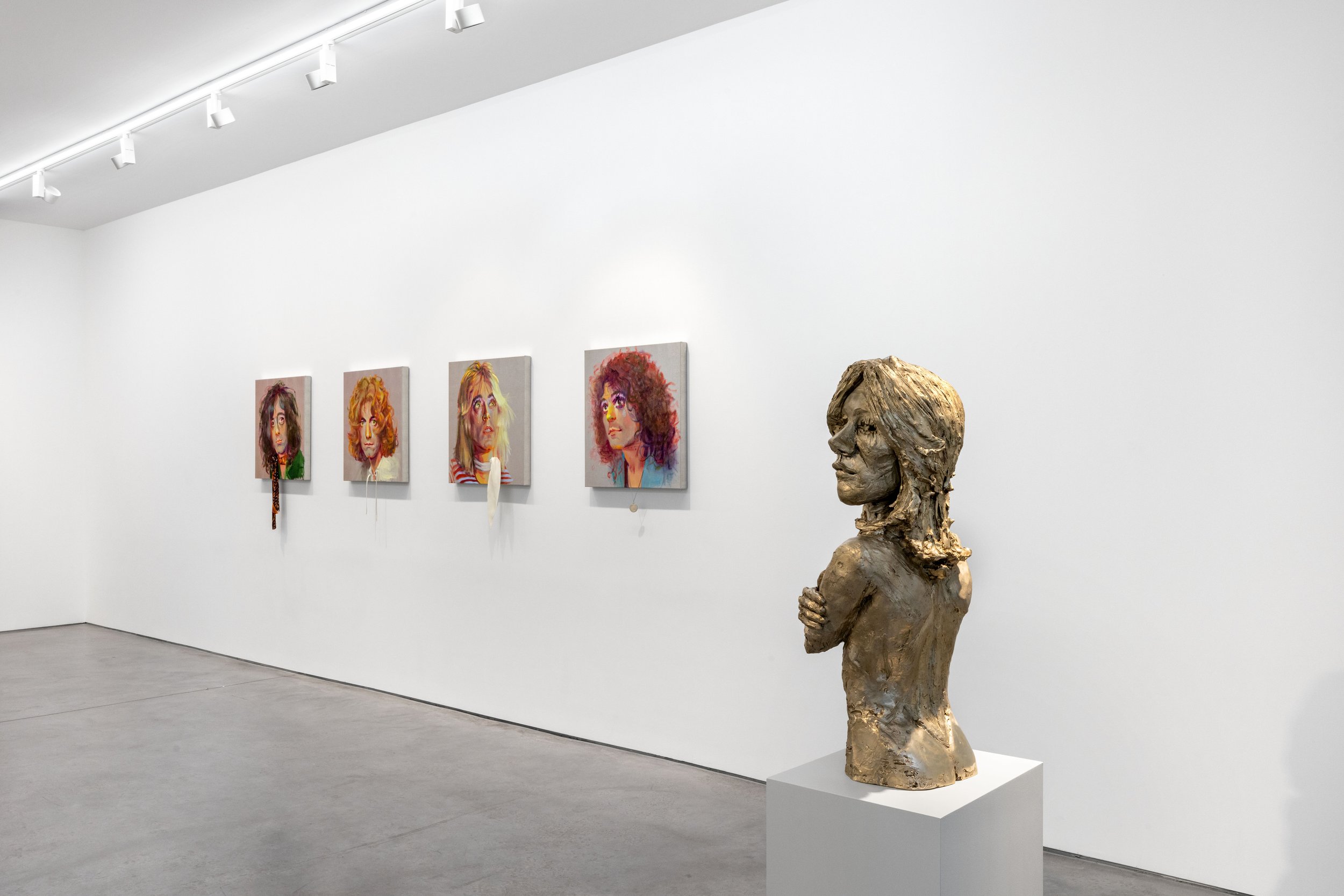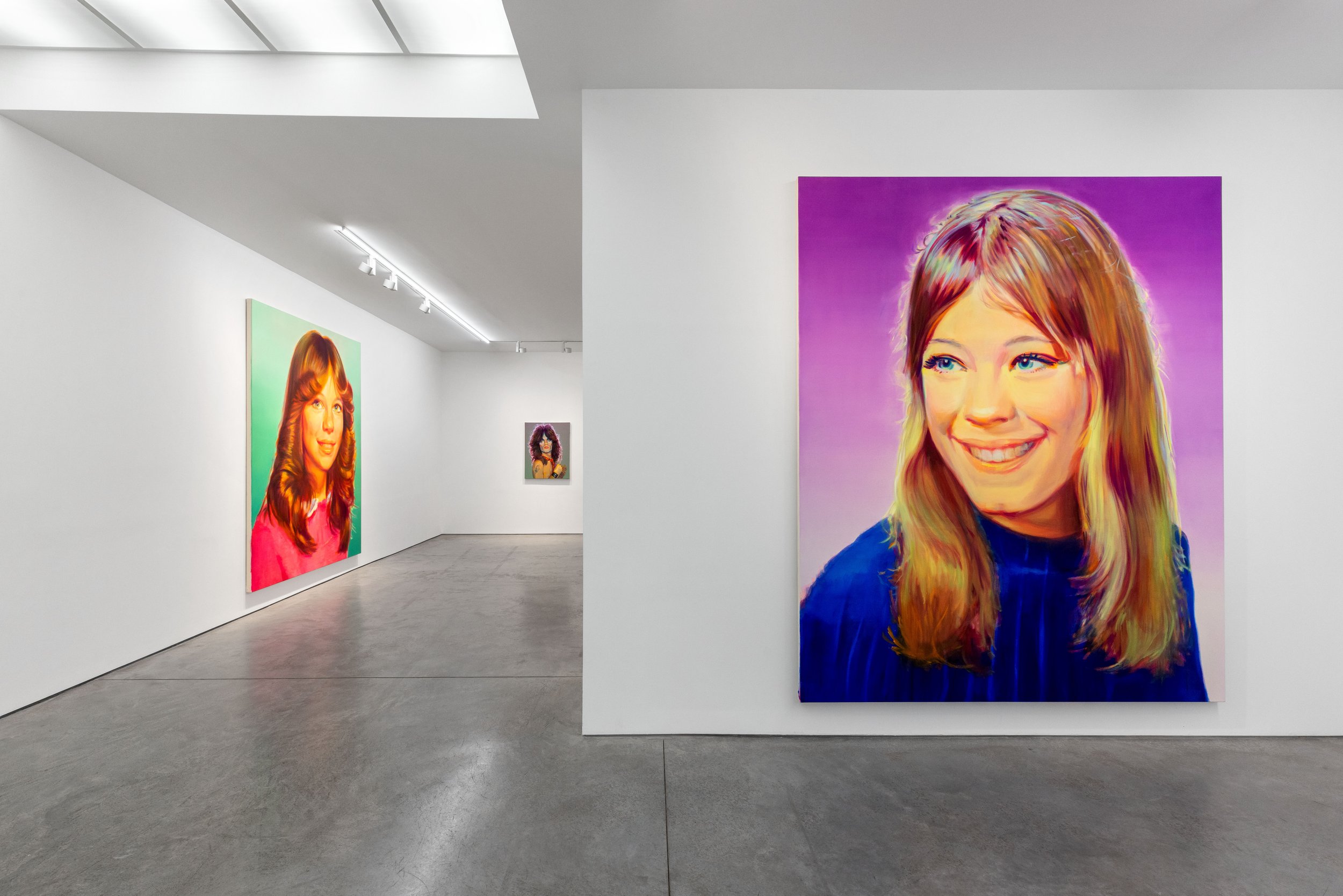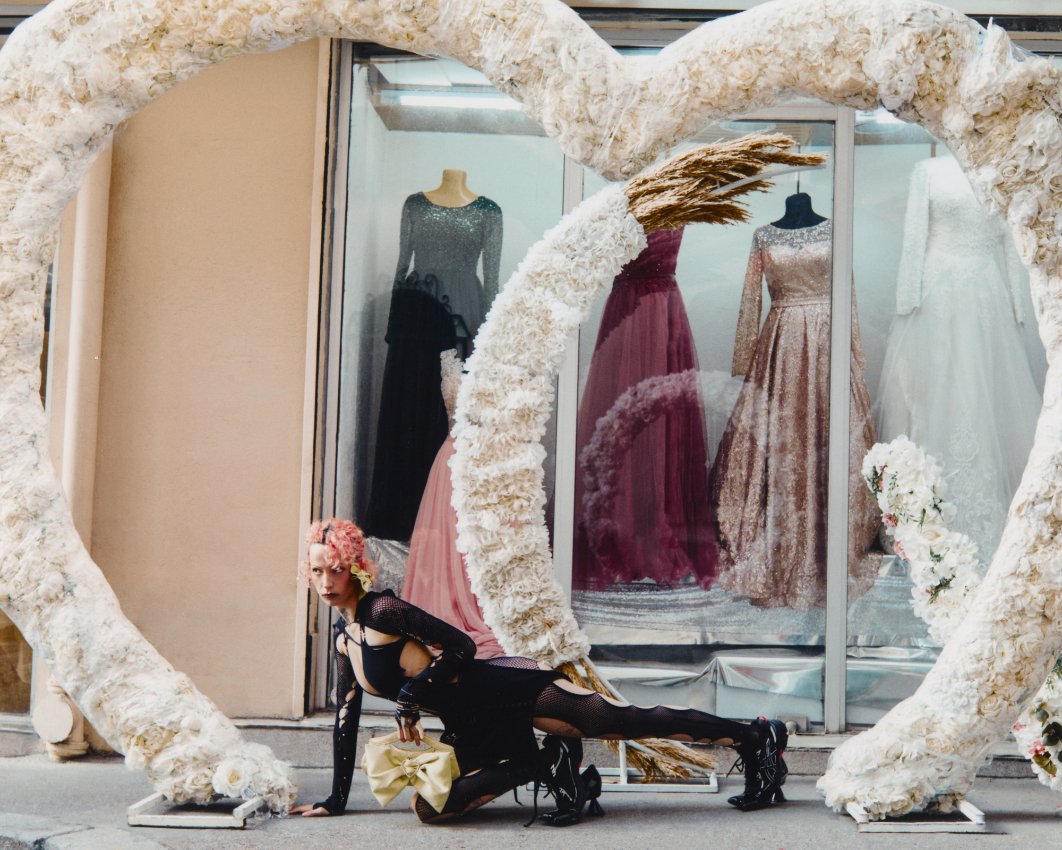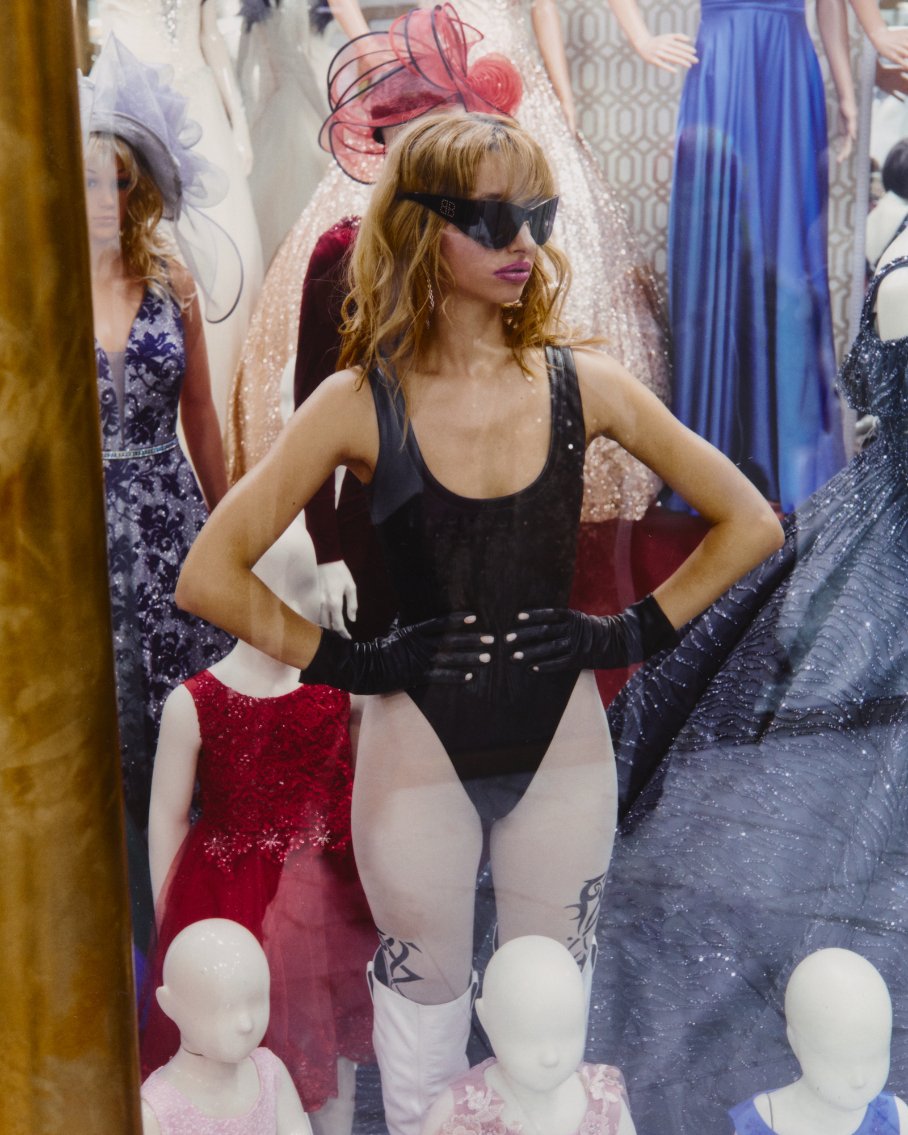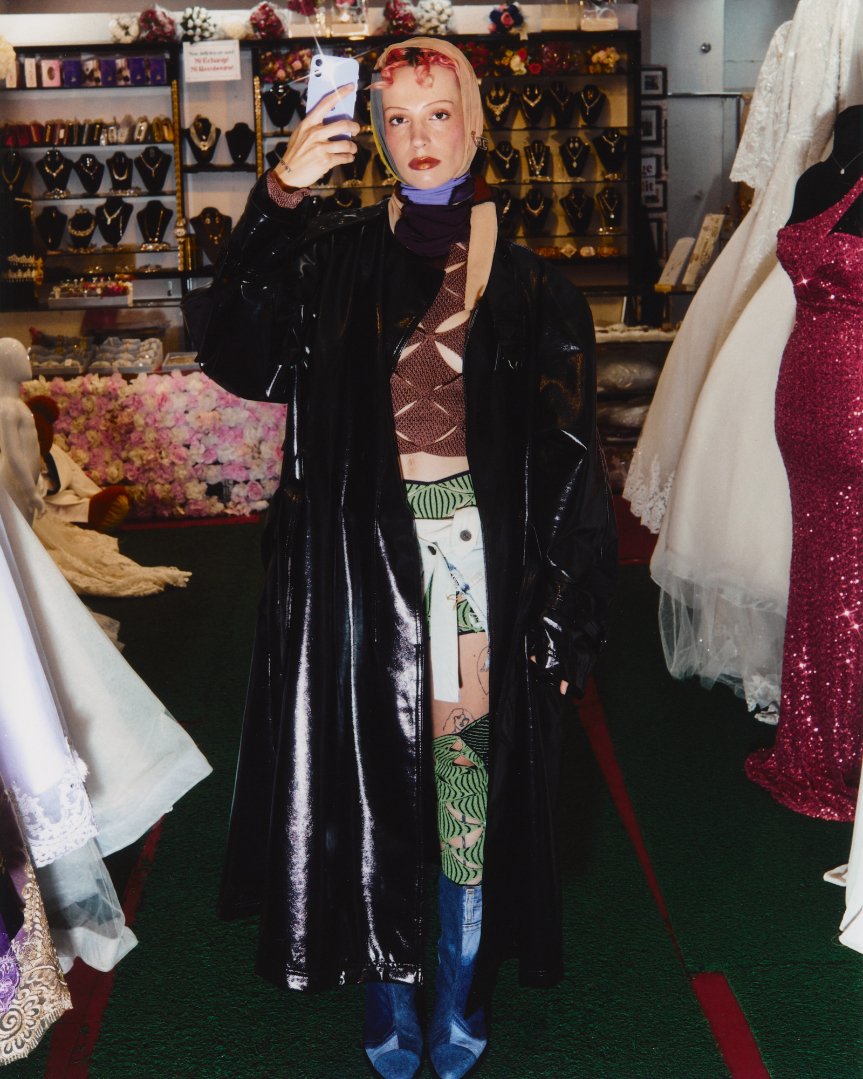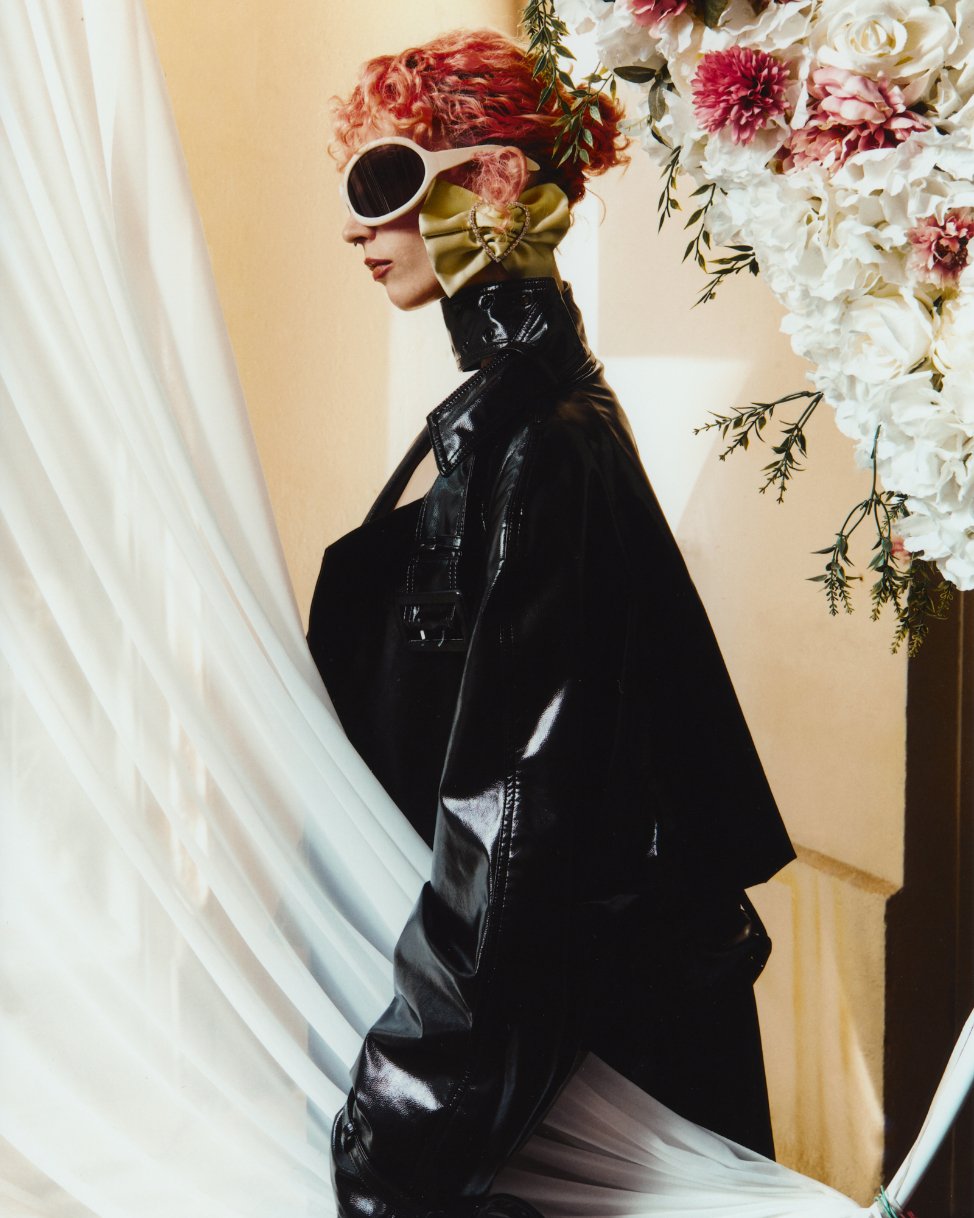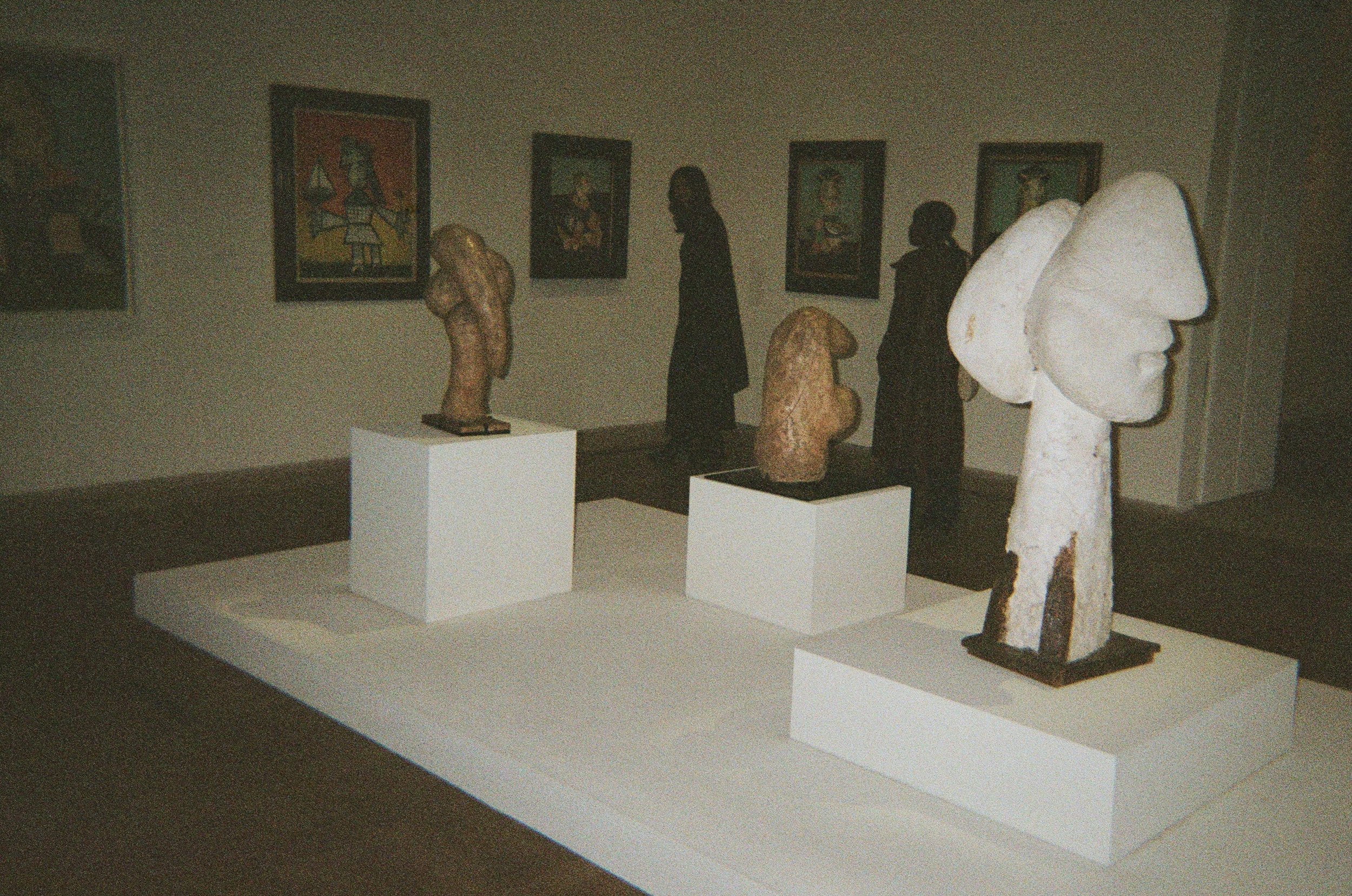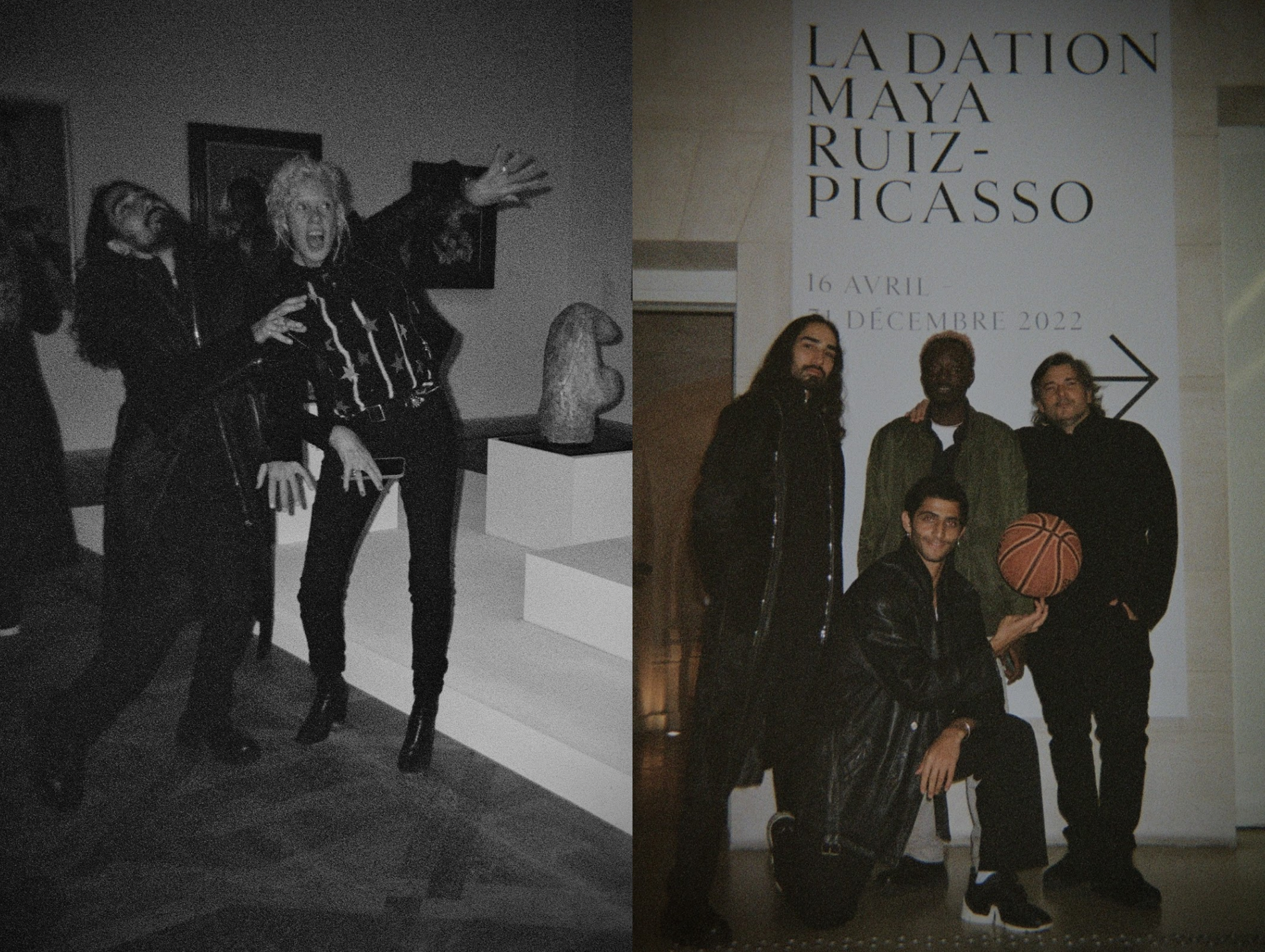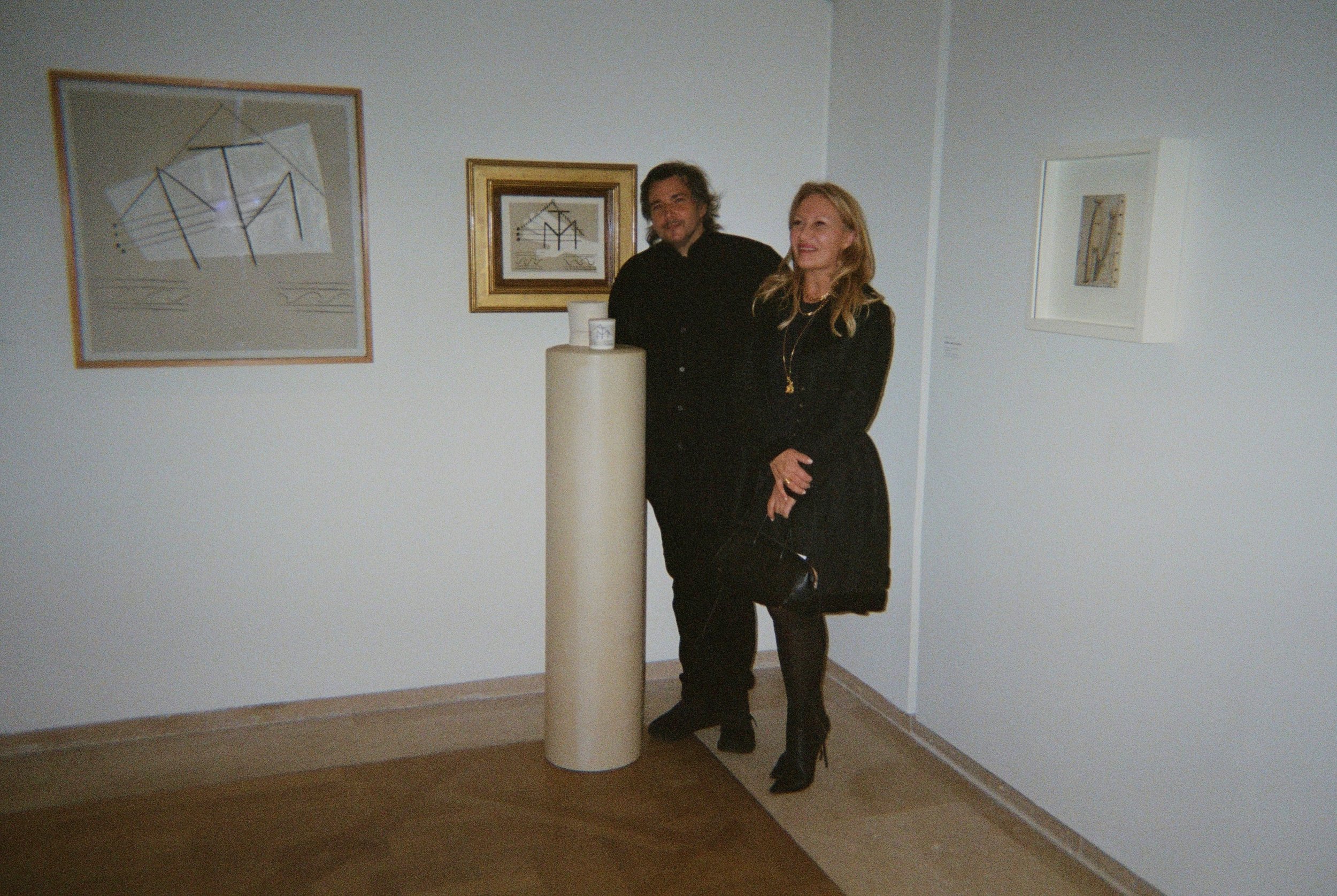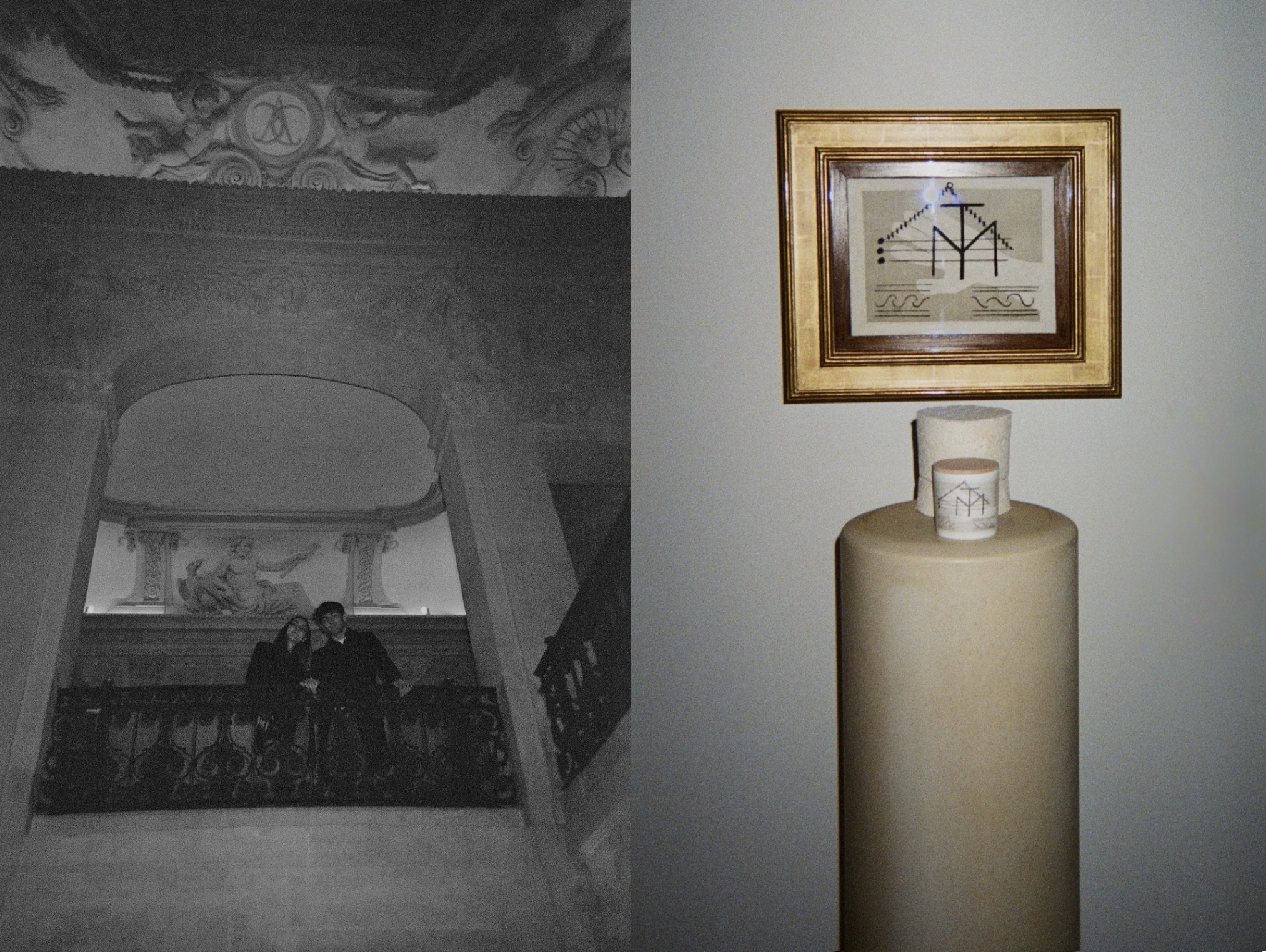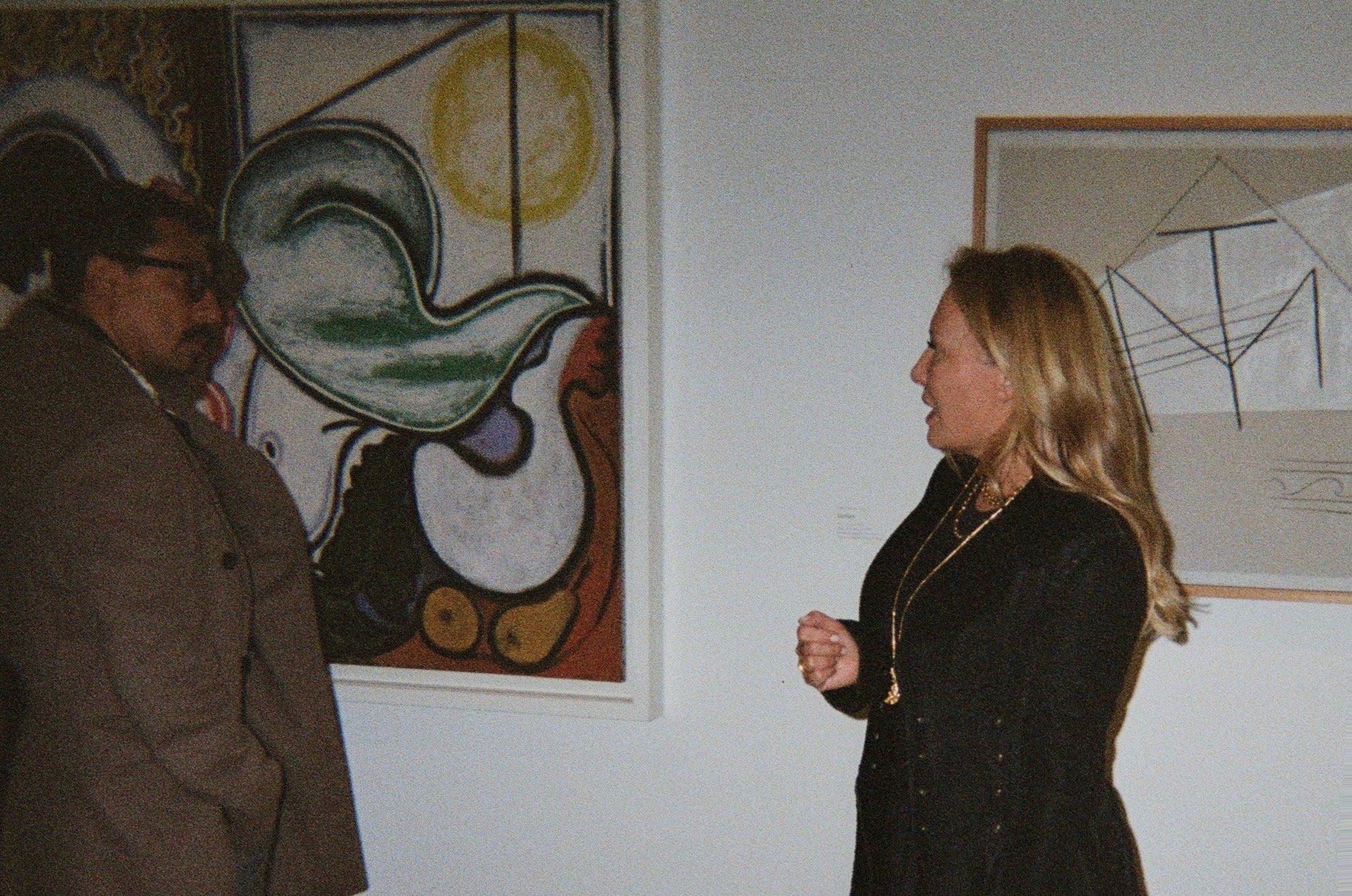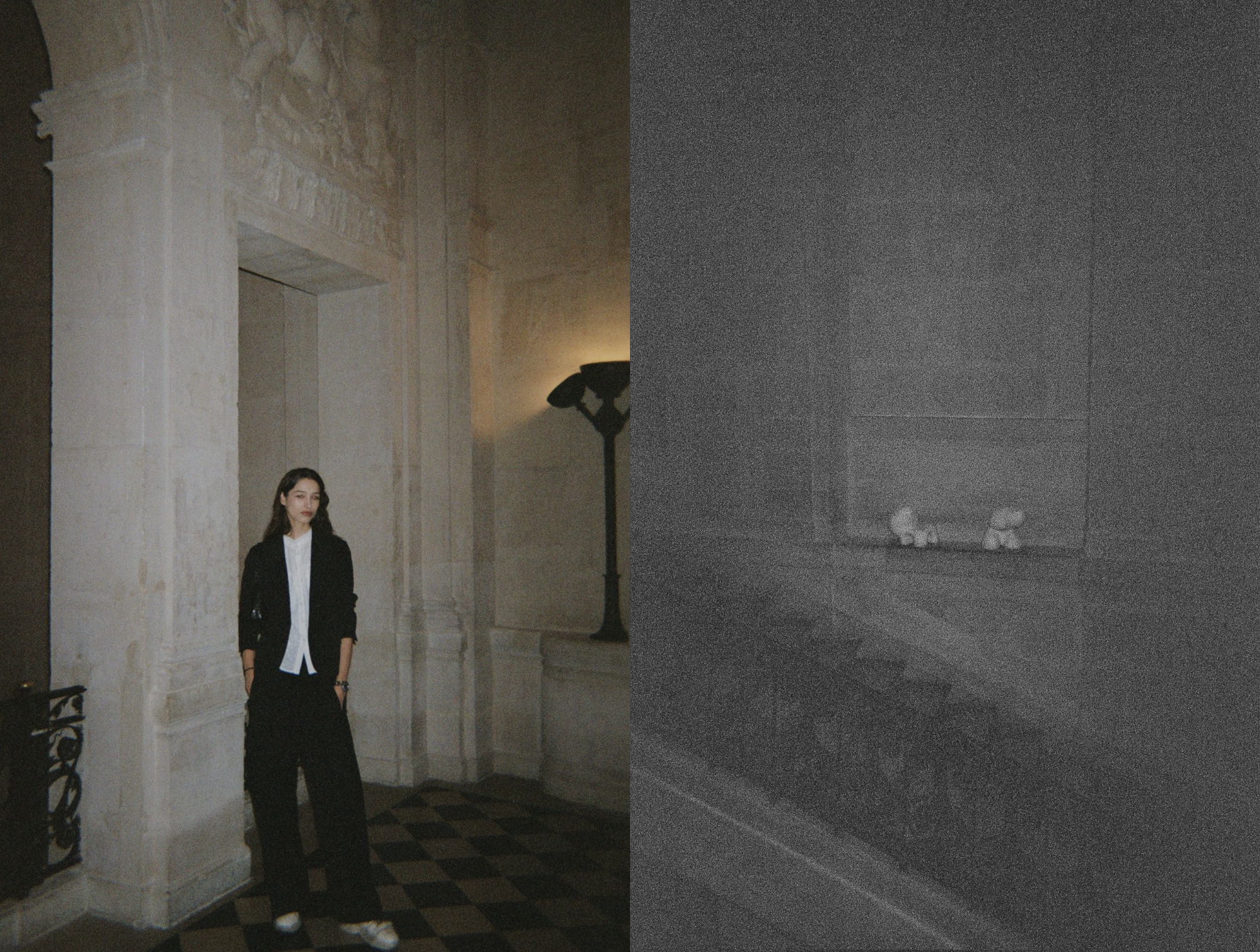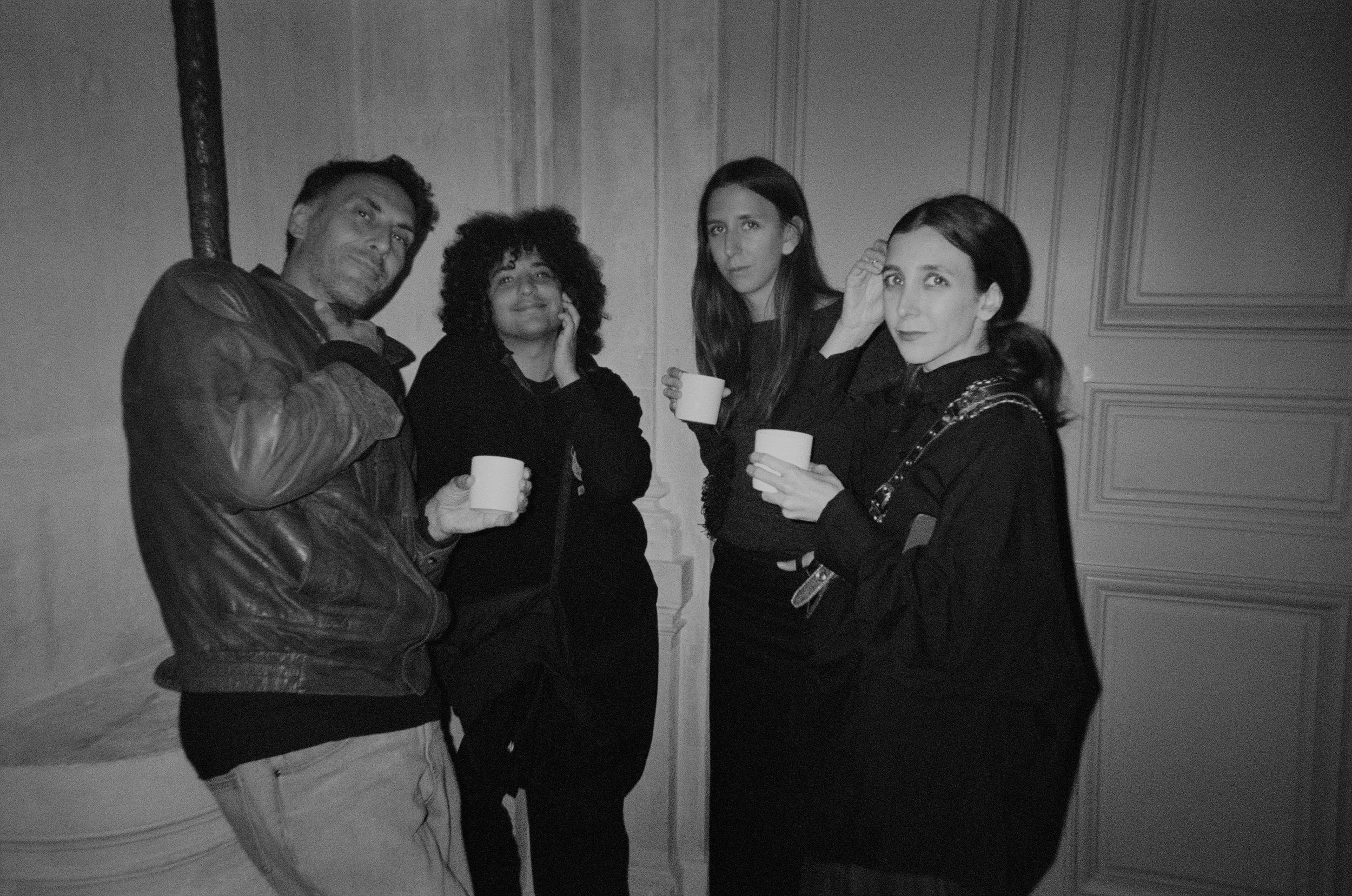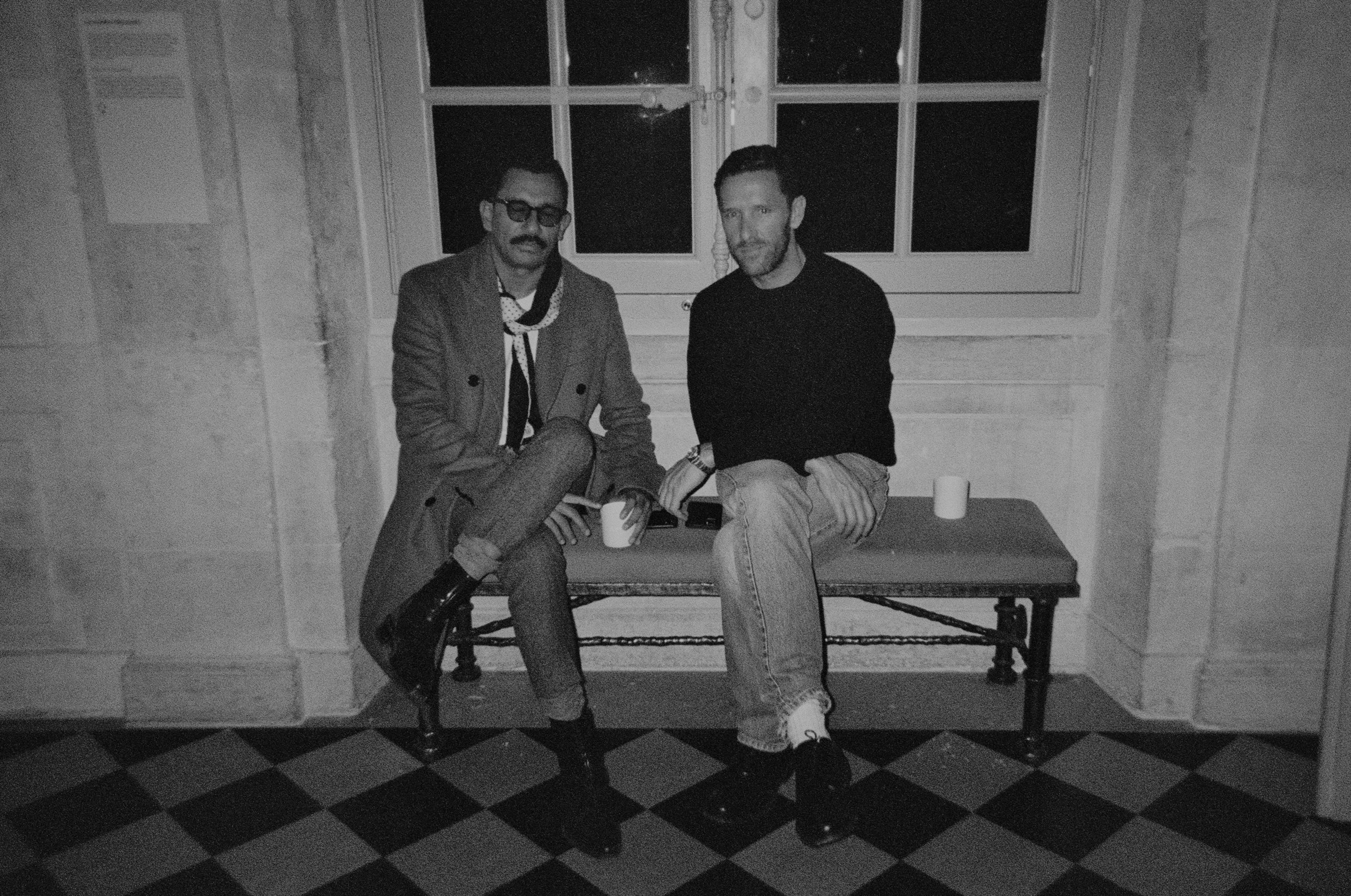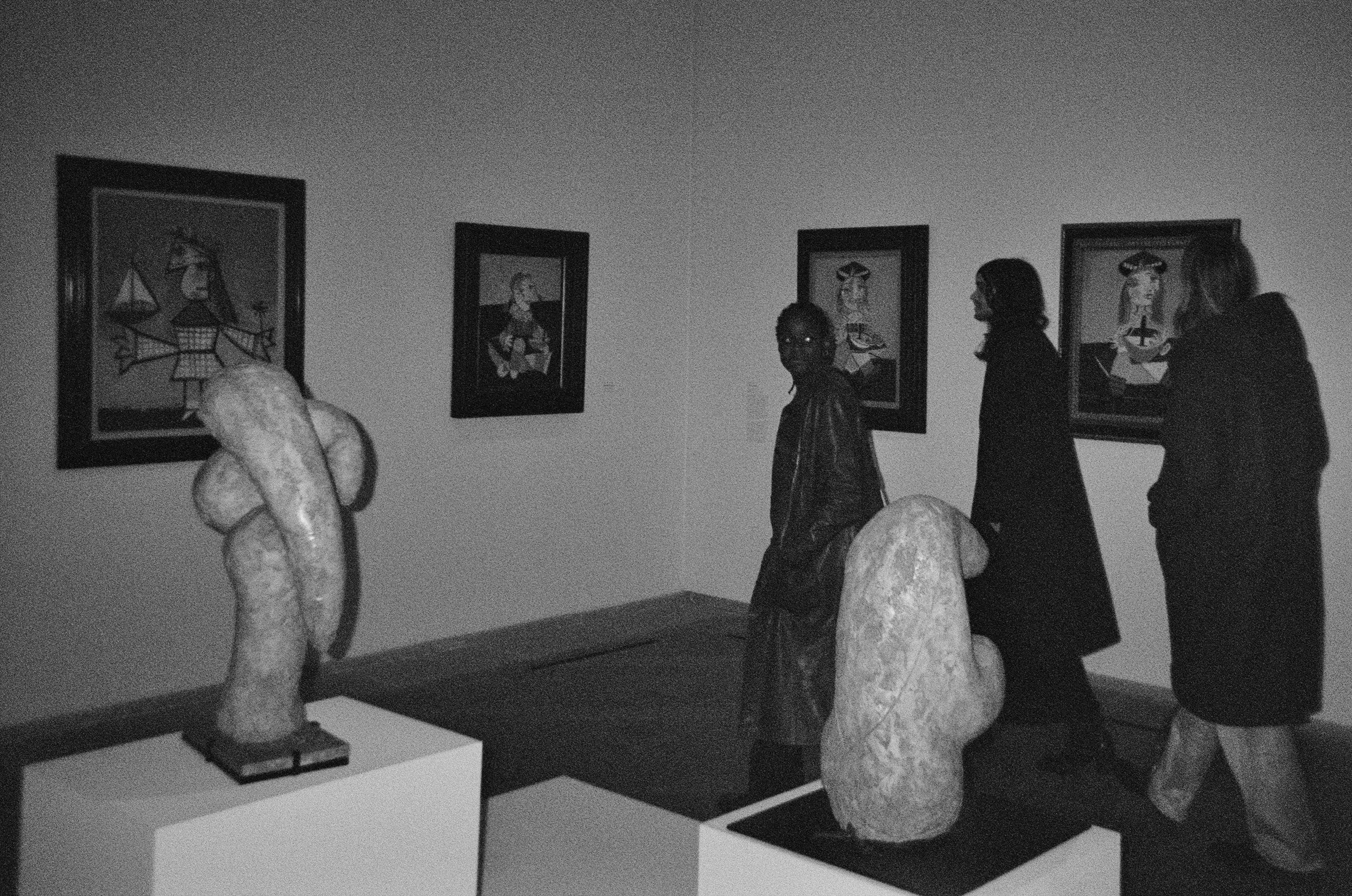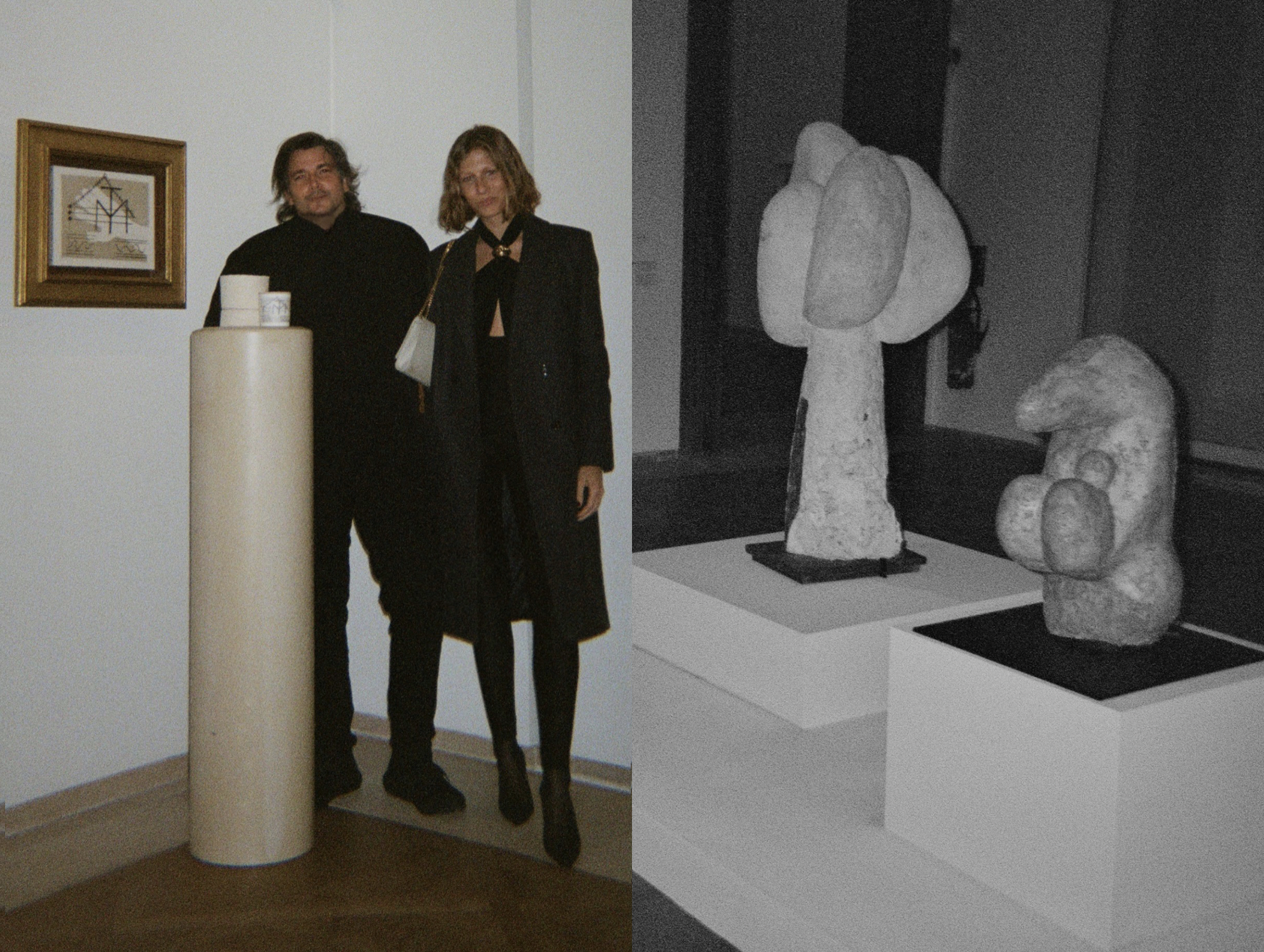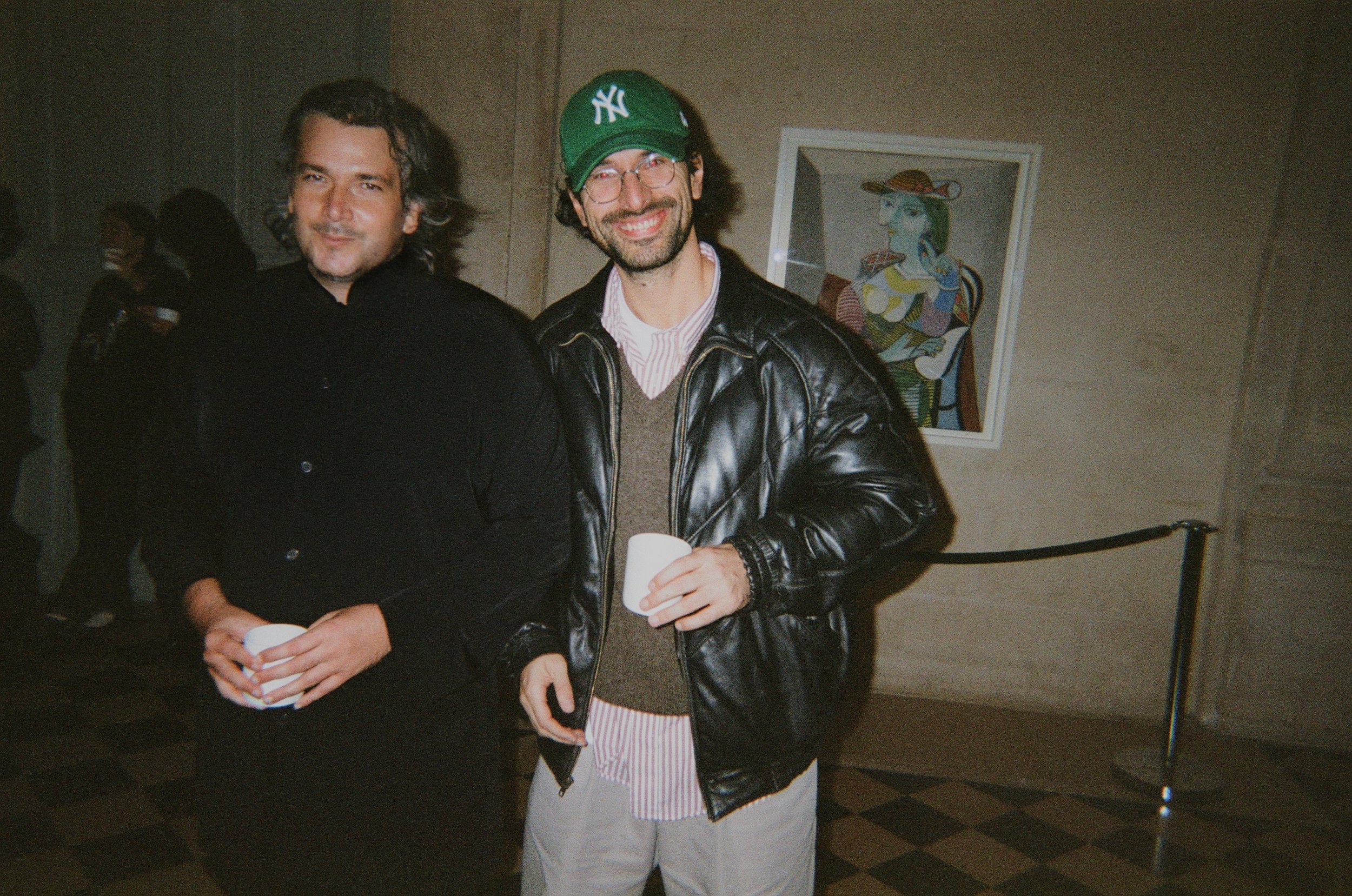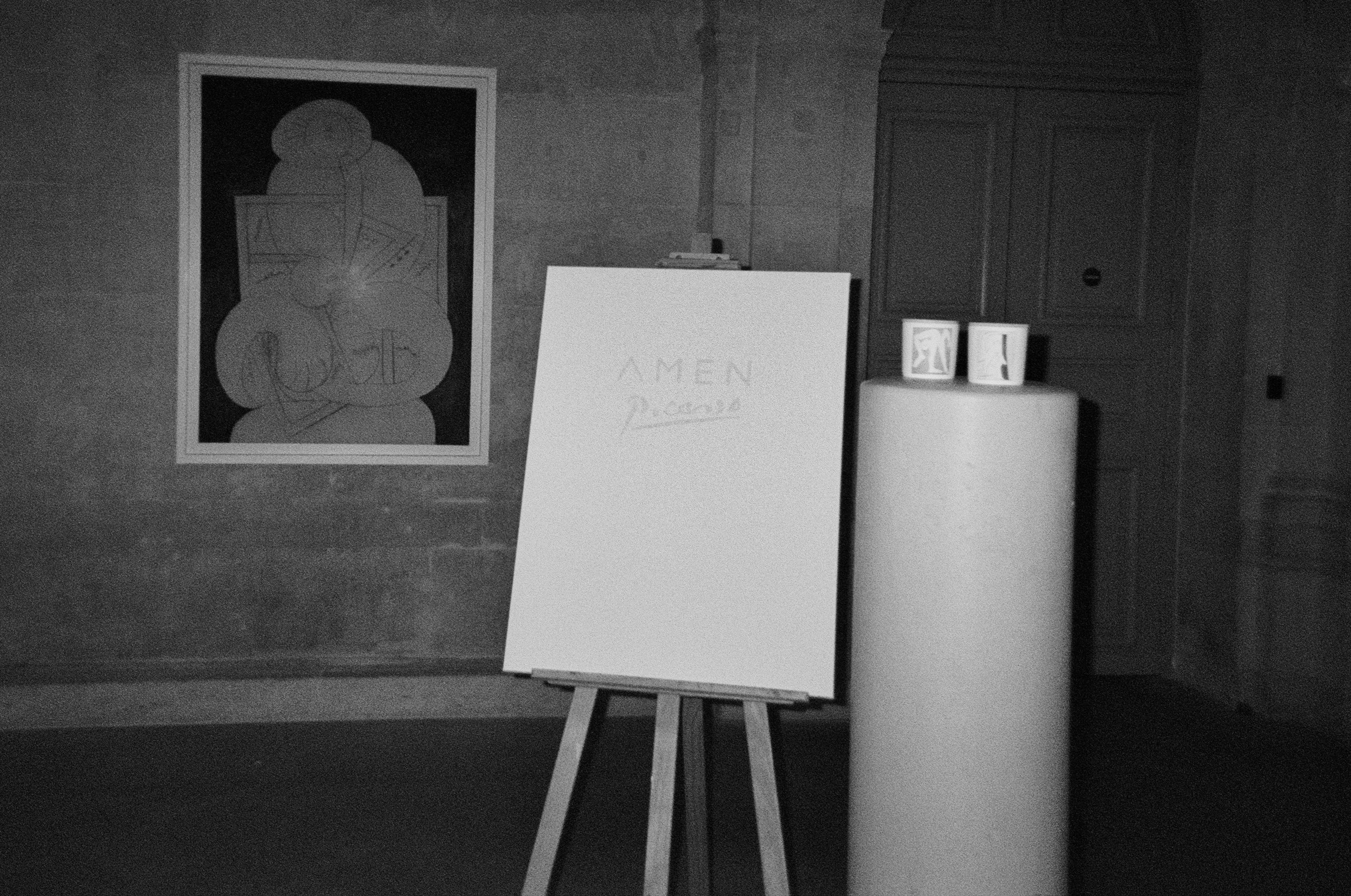April 11th marked the opening of Preservation, a group show curated by Paige Silveria and Paul Hameline at CØR Studio in Paris. The exhibition brings together a disparate group of artists (including Ladji Diaby, Alyssa Kazew, Mark Flood, Gogo Graham, Jordan Pallagès, Anthony Fornasari, Bill Taylor, Caos Mote, Ron Baker, Cecile Di Giovanni, Simon Dupety, Gaspar Willmann, Wolfgang Laubersheimer, and the late, great Gaetano Pesce) whose work ranges from photography, collage, video, design, sculpture, and more. These works explore the original purpose of our human intellect before it became aware of itself and started to ask the unknowable. They reflect on a time when the self wasn’t yet conscious and only concerned itself with preservation in the most existential sense of the word. On the occasion of the opening, Paige Silveria spoke with artist Ladji Diaby to learn more about his roots in Mali, his creative process, and his relationship to the art scene in Paris. Read more.
Miu Miu's Fall/Winter 2024 Collection Traces Life From Girlhood to Womanhood
The Miu Miu Fall/Winter 2024 collection by Miuccia Prada draws inspiration from the span and scope of people’s lives, its shifting clothing types reflective of the development of character, both personal and universal to form a vocabulary of clothing, from childhood to adulthood.
Concurrent gestures express different moments in life — they coexist within single outfits, just as we each hold simultaneous memories of our own experience. Evocations of childhood are expressed with deliberately shrunken proportions, cropped sleeves, and round-toed shoes; archetypical clothing types that directly recall those worn in youth. Childhood is a moment of impulsive, natural rebellion, here reflected in the liberation of a dichotomous mixing of different codifications of dress, pajamas with outerwear, proper with improper, right with wrong. By contrast, adulthood is expressed through recognized signifiers of propriety and chic — gloves and handbags, brooches, tailoring, the little black dress. Like mnemonic devices, clothes can make us both think back, and project forwards.
Those components of duality and recollection find counterparts in materials and construction. Bonding and fusing meld together different fabrics and combine disparate garments, sweaters and cardigans in silk and cashmere, poplin skirts with knit, while shearling is treated to mimic precious fur. Silk dresses are creased and molded to cotton jersey sheaths, volumes reduced with the impression of the original garment remaining, a trace of its antecedent.
As the collection reconsiders characteristic signifiers of life through the vocabulary of clothing, so our literal vocabulary can be readdressed. Girlishness is a word we can revalue, from a pejorative gendered noun, anchored to age, to a universal idiom expressive of the strength of rebellion, a spirit of freedom and individuality, one attribute of a richer whole. Perceived as an inherent component of Miu Miu, it should be examined not as a lone trait but as a fundamental aspect of a wider temperament — a notion expressed through a cast of personalities who each embody this ever-shifting Miu Miu persona. They include Dara Allen, Ethel Cain, Guillaume Diop, Luther Ford, Angel Hazody, Kristin Scott Thoe, Qin Huilan, Little Simz, Jasmin Savoy Brown and Ángela Molina, who also features in Miu Miu Women’s Tales.
Contemporaneity allows divergent creative processes to arrive at paradoxically correlated results. The Palais d’Iéna is punctuated by video installations created by the Belgian-American artist Cécile B. Evans, art considered as a tool to enrich and expand conversation around people. Conceived independently of the collection, by chance the notions of the survival of memory in their art finds echo within the clothes. This is a shared language, one informed by the moment we all live within, a universal message nevertheless resonant with our unique experience.
Highlights from Acne Studios' Winter 24 Presentation
Inspired by industrial materials and the human form, Acne’s winter 24 collection features a blend of toughness and craftsmanship in leather and denim garments. It is staged against the backdrop of two large-scale sculptures made from recycled tires by Estonian artist Villu Jaanisoo. These sculptures, titled Chairs in Rubber (2001), represent a fusion of craftiness and industrial aesthetics.
“I consider myself a sculptor in the most traditional sense. What interests me about working with tires is the certain ‘inner resistance’ of this material: it requires a lot of physical as well as mental force to shape them; the resistance that exists in each tire makes the surface of the sculpture alive, almost baroque.
”For my artworks, I have often used recycled materials, such as used car tires or utilized fluorescent tubes. Environmental issues have been important in terms of employing these, but to me, what’s even more interesting is the trace that the former lives have left to the recycled things I use for making something new, also the idea of putting something familiar into a new context,” says the artist Villu Jaanisoo.
The collection embodies a fast and futuristic woman, reshaping Acne Studios' signature codes of denim and leather with a raw, mechanical twist. It juxtaposes elevated femininity with a tough attitude, subverting traditional archetypes of womenswear. Classic elements like fur (both faux and shearling), ladylike handbags, a timeless black dress, and leather are reimagined with a contemporary edge.
“I’ve always been drawn to leather and denim. It’s the spirit of Acne Studios. One of our first collections in the late ’90s was called ‘leather and denim;’ two things that belong together. This season, we’ve created a powerful leather and denim woman. I’ve always related to clothing through subcultural movements. Denim and leather can transcend genre and subcultures — from punk to S&M. When you want to feel tough you gravitate towards leather and denim; it’s like armour. It always feels right. An empowering safety zone,” says Jonny Johansson, creative director of Acne Studios.
Highlights From Balenciaga's Winter 24 Collection during Paris Fashion Week
Taking place at les Invalides, under a set of screens tracking a narrative timeline from morning to night over natural and electronic landscapes, the projected images shift from actual to artificial—or somewhere in between the two states. Editing, splicing, content sharing, scrolling: each element and more plays across the monitors.
The soundtrack is composed by BFRND and features high energy rhythms, hypnotic melodies and voices turned into synths.
The 24/7, a limited-edition wraparound mask, has an aerodynamic single-mold design that seamlessly obscures the wearer’s face around the eyes and along its sides by enveloping it from every angle. Ergonomic hollows hold each ear—looping under instead of simply sitting atop. Each end of the mask tapers toward the back of the head, leaving an opening so it can easily be donned or removed. A Balenciaga logo is lasered onto the left side.
Another standout was the limited-edition eBay t-shirt, with only 200 produced. The garment can be found in classic Balenciaga gray with a distressed treatment and eBay’s multi-colored logo.
Sparkle in the Vastness and Abstract Visuals of Tia-Thuy Nguyen @ Almine Rech Paris
Tia-Thuy Nguyen’s first show with Almine Rech presents a suite of more than twenty multi-media paintings from the artist’s ongoing series “I, my, me, cloud” (2018–). Impressed at an early age by her father’s experience as a Vietnamese Air Force pilot during the war with the United States (1954–1975), the artist has developed a deeply nuanced appreciation of clouds—what they can reveal and resemble, but also what they might hide. Enchanted by her father’s majestic descriptions of flying through clouds in his plane, Tia Thuy Nguyen was also frightened by his cautionary tales of clouds providing cover for enemy planes. Capturing this dichotomy, Tia's paintings evoke a wide range of moods—from joy and hope, to gloominess and anxiety. Embellished with beads and embroidery, the glittery, shimmery works reflect the complexity, mystery and mutability of Tia's chosen subject matter. Representing an homage to her father—who passed away in 2022, and whose presence the artist has since experienced as a light radiating from inside herself—Tia’s recent works evoke historical associations of light and spirituality, from sun streaming through stained-glass windows in a cathedral to Mark Rothko’s radiant abstractions.
Sparkle in the Vastness is on view through February 24th @ Almine Rech 64 rue de Turenne 75003 Paris FR,
Read Bliss Foster's Notes on Spring 2024 Haute Couture Week in Paris
text by Bliss Foster
1. When we look at designers that are clearly a once-in-a-lifetime talent, we recognize them because they do far more than just make outstanding work — the difference between them and any other hardworking and apt fashion designer is that they have the confidence to go so far against the grain and know that they will be rewarded for it. And in John Galliano’s case this season, he leaned so far into his universe and embraced ideas whose execution would horrify most. But by marching to the beat of his own drum and embracing pubic wigs, John Galliano has enabled Maison Margiela to break through to the most mainstream attention through his portrayal of the most seedy and debaucherous Paris. The sheerest garments appeared muddied and tattered, distorting our perception of the body in a manner no different than the corsets in this show that were wrenched tight on the models. It takes a lot of work to make a gross bar the setting of something beautiful, but Galliano’s vision is so effective that he redeems this uniquely Parisian genre of hedonism: taking us from literal tatters to haute couture. It’s no surprise that the glass skin makeup, keyed by the legendary Pat McGrath, has managed to sell out every single product whose effect on the skin would even approximate what she created for the show.
2. Simone Rocha’s stab at Jean Paul Gaultier couture was a large event for celebrities, which is a largely unexpected audience for the cult following of the coquette brand. But the standard JPG audience seemed thrilled - Simone’s clothing has that effect on people. Even if you’re not the kind of person that is inherently attracted to the overtly feminine, in the hands of Simone Rocha, bows become tears and frilly dresses can become a part of showcasing your cheerless attitude. Making exuberant clothing for people who can never be as spirited as their outfit implies is beautifully complex. The JPG cone bra is given a lift, turning into spiky rose thorns. Jean Paul’s tattoo exploration from Spring 1994 is reinterpreted into a sheer, organza pannier dress, trimmed with snakes, thorny branches, and roses. It’s not Rocha’s work without jewels and crystals, which created the structure of many tulle looks, but were notably present as eyeshadow and eyebrow adornment on the faces of many models. Likewise, it’s not a JPG show without the Marinière, whose stripes this season were piped with twisting bows made of navy satin ribbon. One of my favorite details were the sock-bun earrings, wrapped in hair.
3. A poem accompanied Rahul Mishra’s couture show this season and, put succinctly, it was about appreciating the small things in life. The whole collection centered around this theme, further emphasized by the beautiful cards on the showgoers’ seats that listed the near extinction of many species of moth and butterfly. Couture has a radically different pace than the ready-to-wear calendar, and part of that includes a strange slowing down. When you have a chance to slow down, you can appreciate the incredibly intricate details that make Rahul Mishra’s haute couture such a compelling endeavor, while also digesting his discussion on biodiversity and the preservation of nature. The sheer circular shields carried by the models appear to invite us to look through the lens of a microscope and see the details of a dragonfly, a hive of bees, and the intricate patterns of a close-up honeycomb whose inspiration is spread across the entire collection. Honeycomb became crystal grids which were found on the most exciting looks in the collection.
4. The couture of Viktor and Rolf’s only raison d’etre is to bother purists who clutch their pearls about the beauty, grace, and exactitude of couture, and that is meant in the absolute best way possible. What makes V&R so special is their ability to communicate exactly what couture stands for in their luxurious, precise work, while thematically bucking every haute couture convention. The distinctive sound of scissors was turned into a walkable beat, while four looks traced the evolution of a gradual destruction and reconstruction via the very scissors the audience could hear loudly snapping away. Deconstruction itself is not easy to do well, thousands of designers try and fail at creating compelling designs through the use of deconstruction. Turning deconstruction into a sliding scale however is an entirely different goal. The in-between looks seem to capture the process of how they were created surprisingly well, but are also decorated with the motif of child-like scissor destruction, covered in the most lovely and professionally finished jagged holes.
5. Volume looks effortless when Gaurav Gupta does it, delicately swirling about the wearer, but this was a less voluminous show than usual for the brand. This season’s showing included evening jackets, trench coats and bronze bustiers, grounding this collection in a wearability that is not often seen in couture presentations. Gaurav’s devotees were dressed to the nines in his work, of course. It’s rare to see couture look so effortless and stunning on folks who aren’t walking a runway.
6. Miss Sohee’s couture radically modernizes the public’s expectation of what couture can look like. Yet, Sohee Park’s vision seems rooted in the most antiquated and vintage inspirations. Her collection was inspired by the old South Korean antiques she seems to adore, but it seems more than just inspiration. Each look appears to personify a particular and individual antique, and in this way, each look feels like a loveable, household object from Beauty and the Beast after they come to life. The cohesion in this collection is spectacularly strong while maintaining a large variety between the looks, almost as if the looks themselves are a perfectly curated shelf of objects. If Cristobal was alive today, it’s possible that some shapes in this collection would stir up some envy, most notably in the chartreuse-colored lamé gown.
7. Robert Wun’s fantasy horror show is sharp in all the right places. It’s a literal sharpness in the busts, peplums and some shoulders of these horror storybook characters. But more impressively, the execution of this collection left no detail unattended to, nothing was out of place. It’s not often you see such precision in just runway looks - usually that precision is much more expected, really demanded, in product. But being so up close to Robert Wun’s work reinforced a professionalism and an attention to detail that has left a lot to be desired from other couturiers. Every element was immovable and complete, a standard to only ever expect from the major luxury houses, and a standard that is often unfair to place onto emerging designers. But Robert Wun has been in business for 10 years, and he has experienced career highlights that emerging designers could only dream of.
Vincent Ferrané Inverts the Intimate Solitude of the Bed in Embedded @ La Cité Gallery in Paris
In the series Embedded, presented by photographer Vincent Ferrané realized in collaboration with performer Pauline Lavogez, the confined space of a bed transforms into the profoundly minimalist stage of a performative expression, an "embodied experience." The project is a mosaic of images that relies on a unique space-time of experimentation, intertwining photographic and choreographic ideas much like on an editing table.
Derived from ordinary situations inherent to this intimate and universalizing playground haunted by our fantasies, fears, or passions, the created images offer enigmatic representations in seclusion: ethereal presences, bodies, and suspended faces seize hold of this original setting and transform it into a microcosm, a topography. A mattress-crater hollowed by a fist, clothes resembling geological folds, an improvised refuge beneath the sheets, and ghostly silhouettes come together to give shape to a bed-landscape.
Drawing its name from the words "bed" and "embedded," which in our media-driven age convey the idea of incorporation and embodiment, the series Embedded explores, within the perfect rectangle of the bed, the place of the body, both social and metaphorical. Between pose and pause, the series Embedded draws from the attributes of live performance to script a mosaic of black and white still images, framing the gaze on fragments of bodies, faded, trapped in the penumbra.
Embedded is on view November 9th through November 16th at La Cité Gallery, 71 rue Réaumur 75002, Paris.
Bottega Veneta Reopens Paris Flagship Store
On September 25th, Bottega Veneta unveiled its new Paris flagship store on the iconic Avenue Montaigne. It is the first store designed by and under the creative direction of Matthieu Blazy.
Combining Italian craftsmanship with a modernist sensibility, the near 800-square-meter space is defined by two essential materials: glass, native to Venice, and Italian walnut wood. Industrial square glass blocks are integrated into floor, ceiling, and walls, creating a grid geometry and diffuse, homogenous light throughout the store. Walnut wood panels frame the blocks, and also distinguish the transitional spaces of stairway and jewelry gallery corridor.
Interaction with original design and the handmade begins upon entry, where the front door features a one-of-a-kind glass handle by the Venice-based Japanese glass artist, Ritsue Mishima. Further brass hooks and handles throughout the store pick up on Blazy’s Drop motif, while single Drop elements on store mirrors create rippling reflections suggestive of Venice’s aquatic cityscape.
Photographs by Francois Halard
Niki de Saint Phalle's Tableaux éclatés Is a Posthumous Ballad to Her Beloved Jean Tinguely
text by Barbara Norton
"Hymn of love. Cannibalism. Communion.
Jean - I devour you. I absorb your strength. Your soul joins mine.
Breakdown, movement, now belong to me too.
Waiting for the breakdown, waiting for Godot, waiting for the mishap, life.
I am even looking forward to the breakdown (perhaps to experience the infinite joy of things working again).
Through my new works, Jean, we continue to collaborate. You are present even if these paintings don't look like you.
ORDER. CHAOS. CONCRETE. ABSTRACT. COMPOSITION. DECOMPOSITION. ETERNAL RETURN.
These ideas took shape in my mind through intuition.
My first subject was Hindu deity Ganesh, bearer of luck and happiness.
The 'tableaux éclatants' have become my pals, my companions.
A photoelectric cell activates them, so someone walking by is enough to animate them.
If I go down in the middle of the night to eat a banana, I am accompanied by a light show, sound, movements and soft noises.
I have taken down all my older paintings and live only with them."
Niki de Saint Phalle, Letter to Jean Tinguely, 1993
Addressed to her artistic partner and second husband who died two years prior, Niki de Saint Phalle’s Letter to Jean Tinguely was written in 1993 to accompany her new series of works, Tableaux éclatés. Thirty years later, and over sixty years since de Saint Phalle first met Tinguely, Tableaux éclatés is on display at Galerie Georges-Philippe & Nathalie Vallois in Paris. The title can be roughly translated to “burst paintings” or “shattered paintings”—both of which embody the fragmentary heartbreak and movement of the exhibition.
Technically, Tableaux éclatés draws on Tinguely—activated by photoelectric cells, the paintings move as the viewer approaches, similar to Tinguely’s own work. Skulls are cut open, bodies are ripped apart, and the moon rises. Then, all is put back together again. Through photoelectric sensors and hidden motors, de Saint Phalle engineers the chaos of visual death and mechanical reincarnation.
She herself says, “I am even looking forward to the breakdown (perhaps to experience the infinite joy of things working again).” Here is the crux of Tableaux éclatés: breakdown, and in its wake, strange joy. Niki de Saint Phalle’s paintings burst and shatter and then, loyally, they work again.
Though the form may draw heavily from Tinguely, the works themselves are unabashedly de Saint Phalle’s. Her thick, famous Nana figures sunbathe among multicolored elephants. Pink skies and pink breasts cavort while a golden-trunk Ganesh, “bearer of luck and happiness,” is flayed open, then slid back into one.
There is a jumbled chaos to Tableaux eclatés—as if Niki de Saint Phalle’s grief itself engineered the wires and motors. The image of a widowed Niki de Saint Phalle eating a banana in the dark with only the company of her gently whirring paintings is as dystopian as it is comfortingly domestic. In Niki de Saint Phalle’s own words, none of her older paintings remain. Tinguely is also gone. Now, she lives with Tableaux éclatés; inevitable, mechanical death and then a masterful putting-together—perhaps not of the one who left this world, but of the one who remains.
Tableaux éclatés is on view through October 28th at Galerie Georges-Philippe & Nathalie Vallois in Paris, 36 rue de Seine
Le Début Surveys Over 50 Works Dating Back to the Early '70s by Julio le Parc @ Galleria Continua in Paris
text by Barbara Norton
Le Début, on view through September 21st at Galleria Continua in Paris, is a triumph of both artist and movement. Bringing together over fifty works by Argentinian-born artist Julio le Parc, Le Début celebrates illusion and artistry through the canvas of le Parc, a hugely influential figure in the early beginnings of what would become the Op Art and Kinetic Art movements.
The abstract images of le Parc’s work assuredly reject frivolity—instead, every stroke, line, and curve hums with purpose. Some of these works are rendered on canvas, while others are in three dimensions, such as Sphère Bleue, a large mobile that physically embodies much of the visual movement of le Parc’s 2D pieces.
Mesmerizing in its mathematical precision and color, le Parc’s canvases glow. His visual dynamism walks along a thin, taut tightrope, baseless but undoubtedly balanced. Le Parc, who moved to Paris in 1958, imbues a deep movement into his abstract and geometric forms. He further liberates this movement with his rainbow of mercury-vapor color. Together, these elements create Le Début—a faithful survey of over fifty years of an artist’s unique visual language.
Le Debut is on view through 21st September at Galleria Continua 87 Rue du Temple.
Marie Larrivé Captures the Spirit of Natural Magnetism in La Lune et les Feux @ Galerie Miyu in Paris
text by Barbara Norton
In Marie Larrivé’s world, the light is soft and the air is tender. The French filmmaker and painter’s newest exhibition, La Lune et Les Feux, is no exception. On view at Galerie Miyu in Paris, Larrivé’s round, vibrant colors paint a world made up of all the floating, ethereal parts of ours.
A reverberation of L’arrivé’s directorial history, much of La Lune et les Feux presents like a snapshot of a larger story, one that is both melancholy and joyful. The eerie stillness, particularly in the gentle sorrow of Jours étranges and fantastic greenery of Arbres Noirs, begs the question of what natural mysticism lurks behind the leaves and beneath the soil. The desire for the answer lends Larrivé’s works a magnetic quality—so close to the world we know, yet different.
No matter the story, nature’s curves, slopes, and outstretched branches coolly take center stage. Humans are occasionally present, but a fleeting presence in Larrivé’s superlunar narrative. There is the distinct feeling that these people and these landscapes are shaping each other even when we, the viewers, are not looking. When we are looking, we are mere observers, pulled in only by the humanity of the moonlight and grasses.
If Larrivé has a leading lady, she is certainly the water, an especially masterful constant throughout Larrivé’s œuvre. It is clear that Larrivé was born by the sea, in Brittany—the coy glint of sun on water in Saint Malo thrums with the expertise of an artist who fully understands its transient nature. Similarly, the soft brushstrokes and deep, blue-green water seem to conceal some larger, perhaps darker mystery beneath the water’s surface in Le Lac. Perhaps the mystery would reveal itself, if only you could step onto the mossy bank of the lake. More likely, it will remain an enigma to you, the watcher of Larrivé’s shadowy, enchanting scenes, no matter how much you may wish otherwise.
La Lune et Les Feux is on view through September 13 at Galerie Miyu 101 Rue du Temple.
Lydia Maria Pfeffer Examines the Mythologies That Populate the Subconscious in Love Magic @ Galerie Droste in Paris
text by Barbara Norton
Love is magic and magic is love in Lydia Maria Pfeffer’s newest exhibit at Galerie Droste. Pfeffer gleefully dances across the teeming, queer forest floor in Love Magic, on view through August 12 in Paris. Unabashedly beastly, Pfeffer’s creatures have uncovered the secret to that jeweled, wisteria world of queer perfection. And they aren’t reluctant to let the rest of us know—serene, self-satisfied smiles grace the face of nearly every face (human or not). In this world, the joy is so open that it is difficult to look away.
These creatures’ utter comfort with both themselves and each other is especially magical in Heavenly Visit, as a leopard with a near-human visage nuzzles against a beaked woman’s lap. With its eyes closed and mouth open in bliss, one can’t help but feel almost jealous of that leopard and its pink-tinted nirvana.
A visual gorging, lilacs, apples, and moons pirouette around amongst feathered, furred, and finned revelry. Pfeffer’s use of color only furthers her fantastic agenda of complete release—pale blues wrap amorously around golds and ruby reds. The rainbow of greens in Dream in Green is especially erotic in its lushness. Starburst-like white flowers—woven into the mane of the center wolf woman—bloom from soft brushstrokes that glow with vitality.
Meanwhile in Sweet Love, a fox wraps an arm around the waist of a heavenly messenger, as lily of the valley blooms and a swan looks on. Joy shines in these small details, suggesting that these scenes exist in an entirely formed world, perhaps only a few galaxies away from our own. In Pfeffer’s twilight boudoir, erotic, unhinged queer love is the shimmering core—true love magic.
Love Magic is on view through 12 August at Galerie Droste Rue des Archives 72.
Ouattara Watts Constructs Intricate Dialogues Between Cultural and Iconographic Systems @ Almine Rech in Paris
Through the iconography he conjures, Watts points to interconnected histories and heritages, overlaying systems of signs and finding corelations. From an early interest in ancient Egyptian and Greek history, as well as in classical West African knowledge systems across Dogon, Bambara, Senufo, Baule, Yoruba and Dan cultures, amongst others, he began to explore what is held in common at the intersections of situated worlds and knowledges, as well as to reactivate and make visible effaced cultural constellations. It was to Watt’s knowledge of West African spiritual traditions that Jean-Michel Basquiat was particularly attracted when they met in Paris in 1988. Basquiat had visited Korhogo district in the north of Cote d’Ivoire from where Watts’ family originated, and where he had travelled often as a child and been initiated into Senufo spiritual practice. Basquiat was very interested in exploring these sacred traditions and their relationship to Vaudoo in Haiti, planning a trip to Cote d’Ivoire together with Watts in 1989 but passing away before.
During his years in France, Watts delved into the influence of West African sculptural traditions on European modernist artists, particularly Brancusi, Picasso, Modigliani and the Surrealists. In his works, images appear again and again that relate to these investigations, joined from the 2000s, by mathematical symbols and equations, references to science and technology, as well as to Sufism and other spiritual and esoteric forms, elements of Amharic and Aramaic script, Egyptian hieroglyphs, Bambara, Arabic.
Ouattara in Paris is on view through July 29 at Almine Rech 64 rue de Turenne.
Toby Ziegler's Spontaneous Gestures Collide with Acts That Abstract & Render Simultaneously @ Galerie Max Hetzler in Paris
Toby Ziegler's fourth solo exhibition at Galerie Max Hetzler, Blind men exploring the skin of an elephant, brings together a range of recent works exploring the connections between figuration and abstraction, control and intuition, and manual and digital means of production. The disruption of established systems and the troubling fractures at play within the circulation of images are central themes in the artist’s recent production.
The title of the exhibition refers to an old Indian parable, transcribed in the work of Hokusai, in which blind men are depicted petting different parts of an elephant, each believing it to be another distinct animal. The tale relates to the idea that each person defends their own belief as being absolute, based on their own limited subjectivity, regardless of the experience of others. To imagine the animal objectively, as a whole, would only be possible by merging these various perceptions.
In Ziegler’s work, the original image springs out of a similar disorder, with figurative elements and motifs subtracted, aggregated or enhanced via personal references. As in the Indian fable, multiple small, distinct elements are united to form one coherent whole. Ziegler’s creative process is sometimes one of incremental ‘figuration’ and sometimes one of abstraction, with different starting points but the same destination. His aim is to make work that self-consciously functions as both figurative and abstract at the same time. It involves the dismantling and deconstruction of imagery drawn from a variety of sources, adding or subtracting elements such as figurative details and patterns.
Blind men exploring the skin of an elephant is on view through July 29 at Galerie Max Hetzler Paris 46 & 57 Rue du Temple.
Pol Taburet's "OPERA III: ZOO 'The Day of Heaven and Hell'" @ Lafayette Anticipations
“OPERA III: ZOO ‘The Day of Heaven and Hell’” is Pol Taburet’s first solo exhibition in an institution. Born in 1997, the artist is presenting paintings as well exploring new mediums such as sculpture and installation. The works, many of which are new, create an itinerary that unfolds from scene to scene throughout the Fondation.
The exhibition unfolds over two acts around different passages between inside and outside, darkness and light, dreams and awakenings, which all evoke the times of birth and death, central themes in the work of Pol Taburet.
Creatures at the intersection of myths and cartoons, their quasi-human faces are attached to a child’s cart. Their closed eyes invite us into reverie. One room houses Belly (2023), a large fountain which symbolises fertility and immortality in many myths. Its rounded shape evokes the body of Aphrodite, the Greek goddess of love, beauty, and sexuality. Here, the fountain is dried up and rusty, bearing the traces and weight of a time which seems to have caught up with it.
With My dear (2023), a dining room standing in the centre of the space, is erected like a temple to a deity, hidden under a large tablecloth, like the monster under a child’s bed. For Our Children (2022) deals with the theme of the fall and the opposition between celestial and terrestrial forces, with its female bodies fertilizing the earth, of which only the legs elevated by stilettos are visible. Reinterpreted biblical episodes offer a narrative that opens up new mythologies, anchored in the strangeness of everyday life. The Christian figure is found in Christ’s tongue (2021), a painting of a being spitting out a crucifix in a rejection of an entire belief system.
OPERA III: ZOO “The Day of Heaven and Hell” is on view through September 3 @ Lafayette Anticipations 9 Rue du Plâtre, 75004 Paris.
Mitchell Kehe's "The wheel turns" @ Edouard Montassut
All images courtesy of Edouard Montassut.
The mechanism of a slow churning wheel is the force at hand in Mitchell Kehe’s first exhibition at Edouard Montassut, The wheel turns.
In its less consciously organized form the wheel is seen here rotating in place, not propelling forward but recycling, mutating, reorganizing. At times it shapeshifts into a porous and metallic organ or entity, having recently been subject to extrusion, or with recognizable shafts, revolving on an anomalous axle bearing.
Queered, muddied, and biomorphic, the wheel quivers, making way for its own unique identity and subjectivity. The wheel then, is not only shaped by its work, but shapes the work that it does.
The wheel turns is on view through July 22 at Edouard Montassut, 61 rue du Faubourg-Poissonnière 75009 Paris
Lisa Yuskavage's "Rendez-vous" @ David Zwirner in Paris
© Lisa Yuskavage. Courtesy the artist and David Zwirner.
One of the most original and influential artists of the past three decades, Lisa Yuskavage creates works that affirm the singularity of the medium of painting while challenging conventional understandings of genres and viewership.
In Rendez-vous, Yuskavage presents new large-scale paintings, each set within an imagined artist’s studio. Saturated in deep, jewel-like pigments, these works form part of her ongoing exploration of the processes and complexities of art making. The studios become stages where characters from her oeuvre are intertwined, and where time moves backward and forward.
The “rendez-vous” of the show’s title alludes to the unique way in which painting allows for different moments in time to coexist in one space simultaneously. The works establish a dialogue between personal iconography and a tradition of studio portrayals by artists as varied as Gustave Courbet, Henri Matisse, Georges Braque, and more contemporary figures like Philip Guston and Bruce Nauman.
Rendez-vous is on view through July 29 @ David Zwirner, 108 rue Vieille du Temple Paris
Nina Childress' "Unisexe" @ Galerie Art Concept
Vue d'exposition / Installation view Nina Childress : Unisexe, 2023. Art : Concept, Paris. © Nina Childress, Adagp, 2023. Courtesy the Artist and Art : Concept, Paris. Photo Romain Darnaud.
For her first exhibition, Unisexe, at Art : Concept, Nina Childress signs her history of desire in painting. Here, boys and girls with long seventies’ hair, rockers, and groupies are all united by sex. Nina Childress depicts this still virgin moment, when characters fantasize about one another in a unisex relationship of mirroring and projection. There are no scenes of concerts—instead, her depictions are of the backstage. These rockers and groupies are isolated, each one portrayed on his/her canvas, in a music-poster situation. It is a matter of pose for a sexual distance. They do not have sex. Not yet. They look at each other, desire in their eyes, which are very wide open.
Text by Laurent Goumarre
Unisexe is on view through July 22 at Art : Concept, 4 PASSAGE SAINTE-AVOYE 75003 PARIS, FRANCE
"Las Malas" by Katuring & Nayeli De Alba
earrings and purse by Merrfer
full look by Rui
sneakers by ASICS
heals by Paula Canovas del Vas
photography by Kapturing
styling by Neyeli De Alba
nails by Vanesa Juez
hair & makeup by Hind Sousan
photography assistance by Angela Simi
retouching by Willi Artists
talents Hylas, Violette & Arianne Du Casse
casting by Annabelle Rose
body by Mugler
sunglasses by Balenciaga
gloves by Acne Studios
boots by Ninamounah
blouse & tights by Isa Boulder
purse by Ottolinger
earrings by Diesel
skirt by Laporte LTD
boots by Cruda
blouse by Jean Paul Gaultier Vintage
blouse & tights by Isa Boulder
purse by Ottolinger
earrings by Diesel
skirt by Laporte LTD
boots by Cruda
blouse by Jean Paul Gaultier Vintage
sunglasses by Acne studios
trench coat by Balenciaga
earrings by Merrfer
full look by Courrèges
beret hat by Misbhv
shoes by Cruda
gloves Stylist’s own
sunglasses by Acne studios
trench coat by Balenciaga
earrings by Merrfer
earrings and purse by Merrfer
full look by Rui
sneakers by ASICS
heals by Paula Canovas del Vas
AMEN Picasso: A Night @ The Picasso Museum in Paris
AMEN Candles celebrates the launch of AMEN Picasso with Diana Picasso, Haider Ackerman, Ellen Von Unwerth, Delphine Arnault, Giambatista Valli, Marco Ribeiro, Willy Cartier, Sinichiro Ogata, Prince Wenzeslaus of Liechtenstein, Pauline Ducruet, Quentin de Briey among many others.
Maison AMEN is a Paris-based candle brand that was established by Uruguayan-born designer Rodrigo Garcia in 2020. Pioneers within the market, they create high-end candle and light sculpture designs that are handmade in Grasse, the world capital of perfumery, just minutes away from Pablo’s Antibes Studio. On a mission to create a world free of plastic, AMEN’s products are entirely sustainable, made from vegetal wax that is free of toxic paraffin. They are poured into a reusable porcelain jar and packaged in plastic-free, mushroom containers that are carbon negative. The launch of their new collection of candles took place at the Musée national Picasso-Paris in collaboration with Diana W. Picasso, curator of the exhibition Maya Ruiz-Picasso: Daughter of Pablo.
With the aim of bringing together a significant ensemble of fourteen portraits, the exhibition asks us to reexamine a part of Picasso’s oeuvre through the prism of their filial relationship to highlight the bond that unites father and daughter and to emphasize how Maya’s presence nourished and amplified the artist’s fascination for childhood. Through the presentation of major works from the 1930s — portraits of Maya and Marie-Thérèse — sculptures, paper cut-outs, and memorabilia such as letters, poems, and personal objects, the project seeks to illustrate this chapter of Picasso’s intimate history. Completed by an important selection of photographs, some of which hitherto unseen, the exhibition will, more generally, question the relationship between Picasso and his children, notably during his years in Cannes during which the artist shared happy moments with his four children gathered together. It is the first of many Picasso exhibitions that will take place at museums around the globe throughout the year of 2023 in celebration of the 50th anniversary of the artist’s death.
The scented candles were selected by Rodrigo Garcia and Diana Picasso. As curator of innumerable Picasso exhibitions, she combines paintings with feelings and memories from her life as the artist’s granddaughter. “I felt strongly that the scent for Figure (1927) was Naranja y Canela, a Mediterranean summer in the south of France. Acrobate (1932) became the strength of the Ginger and Nu couche (1932), which translates to ‘Lying down naked’ is the sensuality of Amber. For Guitar a la main blanche (1932) with the letters MT, I remembered a love letter of my grandfather Pablo to my grandmother ‘You are always on me, Marie-Thérèse, mother of sparkling perfumes pungent with star jasmines.’ To me, it's been the most exhilarating experience to add sense to all these profoundly emotional works. I immediately responded to the beliefs behind AMEN: to add soul to the scents and to cherish our Mother Earth.”
The collection is available to purchase at the Musée National Picasso, Paris Dover Street Parfums Matket, the Met Museum New York, Gagosian’s galleries in New York & London, the Los Angeles County Museum of Art, Selfridges, Antonioli Milan, Moda Operandi, and globally through amencandles.fr. Maya Ruiz-Picasso: Daughter of Pablo is on view through December 31 at the Musée national Picasso-Paris 5 rue de Thorigny, 75003.


